
Inside the Robot Kingdom: Japan, Mechatronics and the Coming Robotopia
by
Frederik L. Schodt
Published 31 Mar 1988
Communication will be critical for acceptance."17 * * * * * * * * * * * * Toy and amusement robots appeal to our dreams of a future far beyond the present technological horizon, although the industry that manufactures them is trapped in an older, labor-intensive world. It is to the unromantic industrial robot we must now turn—and to the manufacturers that have so enthusiastically put them to work. PART THREE After Industrial Robots: Building the Kingdom Japan Manufactures the Industrial Robot * * * The companies that can make their own robots, that can manufacture the best industrial robots for their industries, they'll be way ahead of the other fellow. GEORGE C. DEVOL, JR. * * * Early industrial robot technology was like a fragile flower that needed the right soil to grow, and when transplanted into Japan it flourished beyond anyone's wildest dreams.
…
—WHOLE EARTH REVIEW * * * * * * * * * * * * "One of the best Sci-Tech books of 1988" ‘LIBRARY JOURNAL Contents On the New 2010 Digital Version Preface PART ONE Introducing the Robot Kingdom and the Robot 1 The Robot Kingdom 2 What Is a Robot? PART TWO Before Industrial Robots: A State of Mind 3 The First Japanese Robot 4 Robots of the Imagination 5 The Toy Robot Kingdom PART THREE After Industrial Robots: Building the Kingdom 6 Japan Manufactures the Industrial Robot 7 An Empire of Yellow Robots 8 The Man—Machine Interface 9 Robots and the Wealth of Nations PART FOUR Beyond Industrial Robots 10 Religion and Robots 11 Six Legs, Four Legs, Two Legs, or None? Color Photo Section Notes Bibliography Index Credits About The Author On the New Digital Edition of Inside the Robot Kingdom I began doing research for Inside the Robot Kingdom in the mid-1980s.
…
Sangyoyo robotto nyumon [An Introduction to Industrial Robots]. Tokyo: Taiga Shuppan, 1985. Ishihara, Fujio. SF robottogaku nyumon [An Introduction to SF Robotics]. Tokyo: Haya- kawa Shobo, 1981. Iwai, Masakazu. Hitachi, Toshiba, Matsushita FA no saizensen: "shijo taiyogata" seisan genba o yuku [On the Front Lines of Factory Automation at Hitachi, Toshiba, and Matsushita: On the Site of Market-Oriented Production]. Tokyo: Diamond-sha, 1986. Japan Industrial Robot Association (JIRA), ed. Sangyoyo robotto hando bukku [Industrial Robot Handbook]. 1985 ed. Tokyo: Japan Industrial Robot Association, 1985. --. Sangyoyo robotto ni kansuru daigaku-kokuritsu kenkyu kikan nado no kenkyu kaihatsu doko chosa hokokusho [Survey of Trends in Industrial Robot Research and Development at University and National Laboratories].

The Economic Singularity: Artificial Intelligence and the Death of Capitalism
by
Calum Chace
Published 17 Jul 2016
These characteristics make it ripe for automation, and the fact that the output (cars) are high-value items means that investment in expensive automation systems can be justified. Around half of all the industrial robots in service today are engaged in car manufacturing.[xxi] Despite the recession, sales of industrial robots grew at 10% a year from 2008 to 2013, when 178,000 were sold worldwide. Sales in 2014 jumped 29% to 229,000, and the International Federation of Robotics expects the number to jump a further 75% to 400,000 by 2018. China became the biggest market in 2013, installing 37,000 robots compared with 30,000 in the USA[xxii]. Until recently, the industrial robots used in car manufacturing (and elsewhere) were expensive, inflexible, and dangerous to be around.
…
Historically, China’s competitive strength in manufacturing has been its low wage costs, but this is changing fast: wages have grown at 12% a year on average since 2001, and Chinese manufacturers are embracing automation enthusiastically. As we saw in chapter 2.3, China is now the world’s largest market for industrial robots, but it has a long way to go before it catches up with the installed base in more developed countries. Industrial robots are far from perfect, and manufacturers have under-estimated the progress still required. In 2011 the CEO of Foxconn, a $130bn-turnover Taiwanese manufacturer that is famous for making iPhones, declared a target of installing a million robots by 2014.
…
Until recently, the industrial robots used in car manufacturing (and elsewhere) were expensive, inflexible, and dangerous to be around. But the industrial robotics industry is changing: as well as growing quickly, its output is getting cheaper, safer and far more versatile. A landmark was reached in 2012 with the introduction of Baxter, a 3-foot tall robot (6 feet with his pedestal) from Rethink Robotics. The brainchild of Rodney Brooks, an Australian roboticist who used to be the director of the MIT Computer Science and Artificial Intelligence Laboratory, Baxter is much less dangerous to be around. By early 2015, Rethink had received over $100m in funding from venture capitalists, including the investment vehicle of Amazon founder Jeff Bezos.

Rule of the Robots: How Artificial Intelligence Will Transform Everything
by
Martin Ford
Published 13 Sep 2021
Evan Ackerman, “Covariant uses simple robot and gigantic neural net to automate warehouse picking,” IEEE Spectrum, January 29, 2020, spectrum.ieee.org/automaton/robotics/industrial-robots/covariant-ai-gigantic-neural-network-to-automate-warehouse-picking. 23. Jonathan Vanian, “Industrial robotics giant teams up with a rising A.I. startup,” Fortune, February 25, 2020, fortune.com/2020/02/25/industrial-robotics-ai-covariant/. 24. Alexander Lavin, J. Swaroop Guntupalli, Miguel Lázaro-Gredilla, et al., “Explaining visual cortex phenomena using recursive cortical network,” Vicarious Research Paper, July 30, 2018, www.biorxiv.org/content/biorxiv/early/2018/07/30/380048.full.pdf. 25. Tom Simonite, “These industrial robots get more adept with every task,” Wired, March 10, 2020, www.wired.com/story/these-industrial-robots-adept-every-task/. 26.
…
The researchers at Covariant believe that “reinforcement learning”—or essentially learning through trial and error—is the most effective way to progress, and the company claims to be building a system based on a massive deep neural network that it calls “universal AI for robots,” which it expects to eventually power a variety of machines that can “see, reason and act in the world around them, completing tasks too complex and varied for traditional programmed robots.”21 The company, founded by researchers from the University of California at Berkeley and OpenAI, has received investments and publicity from some of the brightest lights in deep learning, including Turing Award winners Geoffrey Hinton and Yann LeCun, Google’s Jeff Dean and ImageNet founder Fei-Fei Li.22 In 2019, Covariant defeated nineteen other companies in a competition organized by the Swiss industrial robot maker ABB by demonstrating the only system capable of recognizing and manipulating a variety of items without any need for human intervention.23 Covariant will be working with ABB as well other major companies to imbue industrial robots deployed in warehouses and factories with intelligence that the company believes will eventually match or exceed human-level perception and dexterity. Many of the startup companies and university researchers working in this area believe, like Covariant, that a strategy founded on deep neural networks and reinforcement learning is the best way to fuel progress toward more dexterous robots.
…
In parallel with its progress in artificial intelligence, Vicarious is also pursuing an innovative “robots as a service” business model, which may eventually prove to be disruptive across a range of industries. Rather than building or selling its own robots, Vicarious instead acquires industrial robots from companies like ABB, integrates them with its proprietary artificial intelligence software and then rents the robots out to companies in a way that’s roughly comparable to the way a temporary employment agency might place human workers. The result is that client companies do not have to make the upfront capital investment and long-term commitment that is normally associated with industrial robots. This directly addresses one of the biggest drawbacks of using robots: the machines are expensive to purchase, install and program, and therefore it takes a long time for the investment to pay for itself.
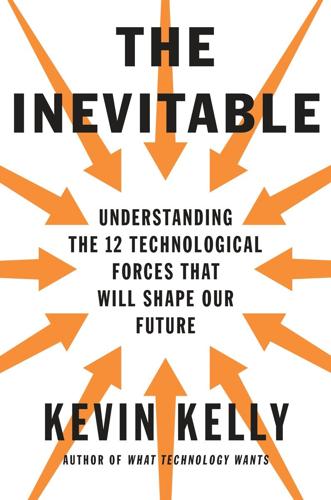
The Inevitable: Understanding the 12 Technological Forces That Will Shape Our Future
by
Kevin Kelly
Published 6 Jun 2016
accurate caption for any photo: Tom Simonite, “Google Creates Software That Tells You What It Sees in Images,” MIT Technology Review, November 18, 2014. Industrial robots cost $100,000-plus: Angelo Young, “Industrial Robots Could Be 16% Less Costly to Employ Than People by 2025,” International Business Times, February 11, 2015. four times that amount over a lifespan: Martin Haegele, Thomas Skordas, Stefan Sagert, et al., “Industrial Robot Automation,” White Paper FP6-001917, European Robotics Research Network, 2005. Priced at $25,000: Angelo Young, “Industrial Robots Could Be 16% Less Costly to Employ Than People by 2025,” International Business Times, February 11, 2015.
…
The code has to be loaded in batch mode—i.e., in large, infrequent batches—because the robot cannot be reprogrammed while it is being used. Turns out the real cost of the typical industrial robot is not its hardware but its operation. Industrial robots cost $100,000-plus to purchase but can require four times that amount over a lifespan to program, train, and maintain. The costs pile up until the average lifetime bill for an industrial robot is half a million dollars or more. The third difference, then, is that Baxter is cheap. Priced at $25,000, it’s in a different league compared with the $500,000 total bill of its predecessors.
…
Designed by Rodney Brooks, the former MIT professor who invented the bestselling Roomba vacuum cleaner and its descendants, Baxter is an early example of a new class of industrial robots created to work alongside humans. Baxter does not look impressive. Sure, it’s got big strong arms and a flat-screen display like many industrial bots. And Baxter’s hands perform repetitive manual tasks, just as factory robots do. But it’s different in three significant ways. First, it can look around and indicate where it is looking by shifting the cartoon eyes on its head. It can perceive humans working near it and avoid injuring them. And workers can see whether it sees them. Previous industrial robots couldn’t do this, which meant that working robots had to be physically segregated from humans.

Arriving Today: From Factory to Front Door -- Why Everything Has Changed About How and What We Buy
by
Christopher Mims
Published 13 Sep 2021
Drivers are given a prearranged time to arrive, scheduled by an algorithm so as to minimize the time they must wait in the port while also maximizing the efficiency of the sequence of containers lifted by the crane that day. Drivers back their trucks in and then get out and stand in what look like phone booths positioned on little concrete islands in between each lane. Here, as in factories filled with industrial robots, the key to keeping soft, eminently crushable, water balloon–like humans safe is to segregate them from the machines completely. Once a driver is in the safety kiosk, the invisible lasers shooting through the air allow the system to identify where the twistlocks are on the flatbed trailer and precisely lower a container onto those locks.
…
Make the ceilings snow white, the floors polished concrete, and fill the guts of the thing—miles of curving stainless-steel conveyor—with tens of thousands of daisy-yellow plastic totes. Standing on the second-floor mezzanine at one end of the facility, looking down its improbable length, the eye alights on a Fanuc industrial robot arm two stories tall. Also yellow, it swings to and fro. The arm grabs a yellow bin, a “tote” as they’re known within Amazon, from a conveyor. Using its purpose-designed actuator, it lifts its mass with a speed suggesting it weighs nothing at all. It pauses at the top of the arc of its movement, as if taking a moment to think.
…
Chapter 15 The Unbearable Complexity of Robotic Warehousing It’s at this point in the story that a reasonable person asks why, in a company that has deployed so many robots, so many humans must perform the many Sisyphean tasks at the heart of Amazon’s sorting of goods in its warehouses. The world’s first industrial robot was installed in a factory owned by General Motors in 1961; the underlying technology was patented in 1954. Why have we not by now created robotic arms dexterous enough to take over a task as elementary as picking up an object and placing it in a soft-sided cubby? The short answer to that question is that this task only seems elementary because humans are so incredibly good at it.

Rise of the Robots: Technology and the Threat of a Jobless Future
by
Martin Ford
Published 4 May 2015
Electric-car company Tesla’s new plant in Fremont, California, uses 160 highly flexible industrial robots to assemble about 400 cars per week. As a new-car chassis arrives at the next position in the assembly line, multiple robots descend on it and operate in coordination. The machines are able to autonomously swap the tools wielded by their robotic arms in order to complete a variety of tasks. The same robot, for example, installs the seats, retools itself, and then applies adhesive and drops the windshield into place.2 According to the International Federation of Robotics, global shipments of industrial robots increased by more than 60 percent between 2000 and 2012, with total sales of about $28 billion in 2012.
…
Rethink was founded by Rodney Brooks, one of the world’s foremost robotics researchers at MIT and a co-founder of iRobot, the company that makes the Roomba automated vacuum cleaner as well as military robots used to defuse bombs in Iraq and Afghanistan. Baxter, which costs significantly less than a year’s wages for a typical US manufacturing worker, is essentially a scaled-down industrial robot that is designed to operate safely in close proximity to people. In contrast to industrial robots, which require complex and expensive programming, Baxter can be trained simply by moving its arms through the required motions. If a facility uses multiple robots, one Baxter can be trained and then the knowledge can be propagated to the others simply by plugging in a USB device.
…
John Markoff, “Skilled Work, Without the Worker,” New York Times, August 18, 2012, http://www.nytimes.com/2012/08/19/business/new-wave-of-adept-robots-is-changing-global-industry.html. 2. Damon Lavrinc, “Peek Inside Tesla’s Robotic Factory,” Wired.com, July 16, 2013, http://www.wired.com/autopia/2013/07/tesla-plant-video/. 3. International Federation of Robotics website, Industrial Robot Statistics 2013, http://www.ifr.org/industrial-robots/statistics/. 4. Jason Tanz, “Kinect Hackers Are Changing the Future of Robotics,” Wired Magazine, July 2011, http://www.wired.com/magazine/2011/06/mf_kinect/. 5. Esther Shein, “Businesses Adopting Robots for New Tasks,” Computerworld, August 1, 2013, http://www.computerworld.com/s/article/9241118/Businesses_adopting_robots_for_new_tasks. 6.
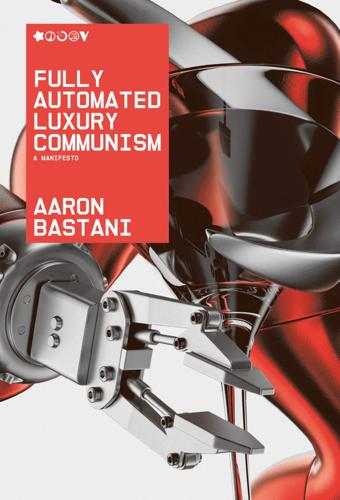
Fully Automated Luxury Communism
by
Aaron Bastani
Published 10 Jun 2019
The evidence appears to lend at least some weight to Leontief’s conclusion, nowhere more so than in manufacturing. In 1970 there were around 1,000 industrial robots worldwide. By the beginning of 2016 that number had risen to 1.8 million and is expected to exceed 3 million by 2020. Since 2010 the global stock of industrial robots has increased by an annual average of more than 10 per cent. Compound growth means if that trend persists manufacturing won’t just stop creating jobs – as it already has done despite massively increased output – but their numbers will significantly decline. The ever-greater employment of industrial robots correlates entirely with what can be observed in both manufacturing jobs and output.
…
While progress over the last half century has been dizzying, the parable of rice grains on the chessboard remains instructive. If such trends persist for another six decades, the results – like the pile of rice bigger than Everest – are almost beyond comprehension. If that single field of rice halfway up the board represents global real-time communication and millions of industrial robots, then what is the mountain? Can Moore’s Law Endure? The transformative power of Moore’s Law, should it persist, is inarguable. The key question, then, is how much longer it can endure. In 2015 researchers at Intel foresaw it prevailing for at least another ten years, although by the standards of a trajectory more than five decades old, that hardly counts as optimistic.
…
Bradford DeLong would write in August 2001, just a month after the file-sharing service Napster was taken down, ‘the most basic condition for economic efficiency … [is] that price equal marginal cost.’ They went on: ‘with information goods, the social and marginal cost of distribution is close to zero.’ This held true not only for films, music, books and academic papers but also for the design of an industrial robot or pharmaceutical drug. Indeed, as subsequent chapters will make clear, it holds true for ever broader swathes of the economy. Therein lies the paradox for capitalism, a system under which things are produced for exchange and profit. If information goods are to be distributed at their marginal cost of production – zero – they cannot be created and produced by entrepreneurial firms that use revenues obtained from sales to consumers to cover their costs.

A World Without Work: Technology, Automation, and How We Should Respond
by
Daniel Susskind
Published 14 Jan 2020
Yet it is worth remembering that Amazon is among the most advanced users of robotics, with a fleet of over one hundred thousand ground-based robots across its warehouses.24 And some robots today are already capable of accomplishing remarkable physical feats, like opening doors and climbing walls, ascending stairs and landing backflips, carrying cables over harsh terrain and knotting ropes together in midair.25 Meanwhile, the global population of industrial robots is rising steadily: the International Federation of Robotics, a trade association, anticipates there will be more than three million of them in operation in 2020, double the number in 2014.27 Figure 5.1: Global Stock of Industrial Robots (000’s)26 The car manufacturing industry provides a good case study of task encroachment unfolding in the industrial world. Once upon a time, building a car was a bespoke activity, where craftsmen made each component from scratch.
…
When Daron Acemoglu and Pascual Restrepo looked at the use of industrial robots in the United States from 1990 to 2007, they found a contemporary case of the substituting force overrunning the complementing force, reducing the demand for workers across the entire economy. Remember that in thinking about new technologies, we are used to stories like that of the ATM: machines displace some people, but also raise the demand for their work elsewhere, and overall employment stays the same or even rises. But that is not what happened with industrial robots. On average, one more robot per thousand workers meant about 5.6 fewer jobs in the entire economy, and wages that were about 0.5 percent lower across the whole economy as well.
…
And all this was happening in 2007, more than a decade ago, before most of the technological advances described in the preceding pages.32 Critics might point out that this result applied not to all technologies, but only to one particular category, industrial robots. But that misses the deeper point: traditionally, many economists have imagined that this result was not possible for any technology. The illusion nurtured in the Age of Labor was that any technological progress ultimately benefits workers overall. But here, even after taking into account the ways in which these industrial robots helped some human beings through the complementing force, workers overall were still worse off. THE TIMING How long will it take to arrive at a world with less work?

Automation and the Future of Work
by
Aaron Benanav
Published 3 Nov 2020
This downward trend was to some extent an expected result of the end of an era of rapid catch-up growth. However, it should still be surprising to the automation theorists, since Germany and Japan have raced ahead of the United States in the field of industrial robotics. Indeed, the robots used in Tesla’s largely automated car factory in California were made by a German robotics company.15 As of 2016, German and Japanese firms deployed about 60 percent more industrial robots per manufacturing worker, compared to the US.16 Yet deindustrialization has continued to take place in all these countries, despite lackluster manufacturing-productivity growth rates; that is, it has taken place as the automation theorists expect, but not for the reasons they offer.
…
Capital Stock and Labor Productivity Growth Rates, 1950–2017 Preface THE INTERNET, SMARTPHONES, AND social media have already transformed so much about the way we interact with each other and come to know the world. What would happen if these digital technologies moved off the screen and increasingly integrated themselves into the physical world around us? Advanced industrial robotics, self-driving cars and trucks, and intelligent cancer-screening machines appear to presage a world of ease, but they also make us uneasy. After all, what would human beings do in a largely automated future? Would we be able to adapt our institutions to realize the dream of human freedom that a new age of intelligent machines might make possible?
…
In manufacturing, the employment apocalypse has already taken place.4 To evaluate these theorists’ claims, it therefore makes sense to begin by looking at what role automation has played in that sector’s fate. After all, manufacturing is the area most amenable to automation, since on the shop floor it is possible to “radically simplify the environment in which machines work, to enable autonomous operation.”5 Industrial robotics has been around for a long time: the first robot, the “Unimate,” was installed in a General Motors plant in 1961. Still, until the late 1960s, scholars studying this sector were able to dismiss out of hand Luddite fears of long-term technological unemployment. Manufacturing employment grew most rapidly precisely in those lines where technical innovation was happening at the fastest pace, because it was in those lines that prices fell the fastest, stoking the growth of demand for products.6 That era is long over.
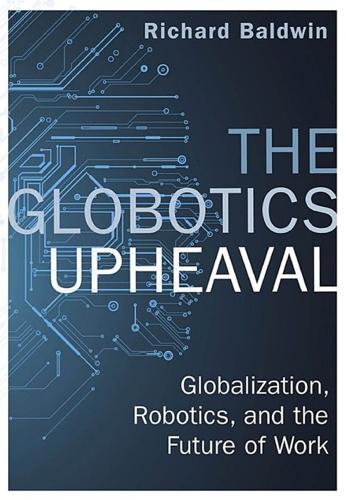
The Globotics Upheaval: Globalisation, Robotics and the Future of Work
by
Richard Baldwin
Published 10 Jan 2019
Computer-controlled machines rapidly displaced workers, especially in the auto industry, and especially those involved in welding, painting, and specific pick-and-place tasks. As ICT advanced, the repetitive, manual tasks that industrial robots could handle increased—displacing jobs as it went. From the 1990s, many factories in advanced economies turned into computer systems where the peripherals were industrial robots, computerized machine tools, guided vehicles, and so on. Roger Smith’s dream of Hamtramck-like factories supplanting workers came true, or mostly true. Factories became places where workers helped machines make things, not the other way around.
…
NEW TECHNOLOGICAL IMPULSE The Hamtramck auto factory in Detroit, Michigan, was supposed to be “the most modern auto plant in the world,” according to General Motors (GM) chief Roger Smith. But that’s not what he was calling it after they turned on the lights and ramped up production in 1985. What was supposed to be a showcase for the cost-cutting and quality-boosting advantages of industrial robots turned into a clump of chaos. The painting robots melted the plastic taillights and occasionally went wild, painting each other, and the walls as well as the cars. The robots fitting the windshields sometimes got confused and sent the glass smashing into the car instead of installing it gently.
…
PHYSICAL SKILLS Physical skills are important in a wide range of service-sector and professional jobs. Some of the physical skills involve moving things a long way (“gross motor skills”) or over only very short distances (“fine motor skills/dexterity”). Another set entails “mobility across unknown terrain,” and “navigation.” (Table 6.4) Not surprisingly, industrial robots—what might be called “steel-collar robots” to contrast them with white-collar robots—are above average when it comes to most physical skills. They are, after all, machines. One area where they are not as good as the average person is in mobility in places they are not familiar with. Moving around an Amazon warehouse, for instance, poses no issues for AI-trained robots, but crossing rugged or unusual terrain is a skill where AI displays below-human capacities.
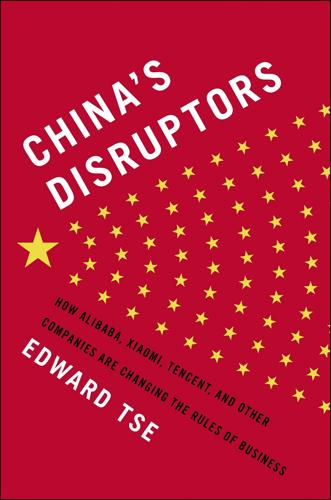
China's Disruptors: How Alibaba, Xiaomi, Tencent, and Other Companies Are Changing the Rules of Business
by
Edward Tse
Published 13 Jul 2015
Over the past 20 years China has increased its grain productivity by 2.6 percent annually: See Xinhua News Agency, “Chinese Innovations to Benefit the World: Bill Gates,” April 7, 2014, available at http://www.chinadaily.com.cn/business/2013-04/07/content_16381042.htm (accessed September 2, 2014). China is now the world’s biggest industrial robot market: See “Industrial Robot Statistics,” International Federation of Robotics, 2014, available at http://www.ifr.org/industrial-robots/statistics/ (accessed September 2, 2014). officials have committed $82 billion over the five years: See Christina Larson, “China Expected to Be the Top Market for Industrial Robots by 2016,” Bloomberg Businessweek, November 15, 2013, available at http://www.businessweek.com/articles/2013-11-15/china-expected-to-be-top-market-for-industrial-robots-by-2016 (accessed September 2, 2014). the world’s leading developer of 3D printing technology: See “China Developing World’s Largest 3D Printer, Prints 6m Metal Parts in One Piece,” 3ders.org, February 7, 2014, available at http://www.3ders.org/articles/20140207-china-developing-world-largest-3d-printer--prints-6m-metal-parts-in-one-piece.html (accessed September 2, 2014).
…
The likelihood, however, is rather the opposite: as Chinese companies refine their ability to introduce new practices and technologies to enhance their manufacturing prowess, they will find themselves in a strong position to claim a greater share of higher-end processes. Robots are widely regarded as a solution to worker shortages and rising wages. After robotics sales to China rose 25 percent annually from 2005 to 2012, and then jumped 36 percent in 2013, China is now the world’s biggest industrial robot market, accounting for one-fifth of all sales. Many of these robots are used in the auto industry, where the number deployed rose from just over 50 per 10,000 staff in 2006 to more than 200 as of mid 2014. In Zhejiang, one of China’s leading industrial provinces, just to the south of Shanghai, officials have committed $82 billion over the five years through 2017 for factories to invest in automating production lines.

When Computers Can Think: The Artificial Intelligence Singularity
by
Anthony Berglas
,
William Black
,
Samantha Thalind
,
Max Scratchmann
and
Michelle Estes
Published 28 Feb 2015
A logical illusion that could never exist in reality. But it is, in fact, commonplace for computers to program themselves when guided by people. Similar to the way that 3-D printers can print many of the parts used to make 3-D printers. Industrial robots can be used to make industrial robots. It is only a matter of time before a combination of 3-D printers, industrial robots and automatic milling machines automatically produce 3-D printers, industrial robots and automatic milling machines. In that case, the sorcerer’s apprentice might have had a relatively easy problem to deal with. Computers ultimately execute instructions that have been written in ones and zeros, but they are not programmed that way.
…
A task such as carving a clarinet could take a skilled artisan several hours, whereas a fully automated milling machine can complete the task in a few minutes. Shipments of industrial robots. Corporate http://www.ifr.org/industrial-robots/statistics/ More recently, the use of single-arm industrial robots has become ubiquitous for repetitive tasks such as welding, painting and parts assembly. Robots now cost roughly $50,000 for the arm, plus as much again for specialized tooling such as welders, cutters or paint sprayers. They have become very competitive with the cost of labour in the western world. Robots are made by robots, so their price is likely to reduce over time. As previously discussed, most current industrial robots have no intelligence whatsoever.
…
Blog John Brolese on http://www.abc.net.au/news/2011-12-13/close-up–a-spider-wasp-takes-on-aspider/3729180 These behaviours are is is often attributed to being just instinct, as neither the spiders nor the wasps consciously know why they do what they do, but there is nothing “just” about these instincts. Every spider’s web is different depending on the location. It cannot simply make a rigidly predetermined sequence of moves, like ordinary industrial robots do. Instead, it has to sense its natural environment in order to produce a web that works. The instinct certainly provides a basic plan, such as to start with the top line and then drop radials, and finally the spiral. But realizing that basic plan in a chaotic natural environment requires much more intelligence than is possessed by current robots.

Future Crimes: Everything Is Connected, Everyone Is Vulnerable and What We Can Do About It
by
Marc Goodman
Published 24 Feb 2015
Throughout its short history, cyber crime has always been hidden behind computer screens—a two-dimensional problem that might affect your wallet or your bank account. No more. As a result of advances in robotics, cyber crime will finally escape its virtual confines and explode onto our physical space. And we are wholly unprepared for what is coming next. The Military-Industrial (Robotic) Complex For decades, industrial robots have toiled side by side with human workers in warehouses and on factory floors, but modern industrial robots are marvels of engineering, capable of lifting hundreds of pounds and moving objects repeatedly to within 0.006 inch’s accuracy, a feat no human being could match. Initially, these machines were expensive, often costing hundreds of thousands of dollars and requiring months of highly customized computer programming before they could perform their assigned tasks.
…
These robots work three shifts a day, 365 days a year, and never take a coffee break. Industrial robots are growing exponentially cheaper, more efficient, and more user-friendly, and perhaps no other robot exemplifies this trend as much as Baxter, the cute low-cost industrial bot from Rethink Robotics. At $22,000, it is a tenth of the price of its predecessors. More impressive is the fact that it works right out of the box and can be up and running in just an hour, as opposed to the eighteen months it took to integrate the previous generations of industrial robots into a factory operation. Baxter can learn to do simple tasks, such as “pick and place” objects on an assembly line, in just five minutes.
…
Cacace, affidavit, Sept. 28, 2011, http://www.justice.gov/; “Muslim Pleads Guilty to Plotting to Blow Up the Pentagon and Capitol with Model Airplanes Packed with Explosives,” Mail Online, July 20, 2012; “US Man Admits Model Plane Plot,” BBC News; Brian Ballou, “Rezwan Ferdaus of Ashland Sentenced to 17 Years in Terror Plot; Plotted to Blow Up Pentagon, Capitol,” Boston.com, Nov. 1, 2012; Jess Bidgood, “Rezwan Ferdaus of Massachusetts Gets 17 Years in Terrorist Plot,” New York Times, Nov. 2, 2012. 2 The number of robotics start-up companies: “Global Industrial Robotics Market Revenues to Surpass $37 Billion by 2018,” Business Wire, Feb. 24, 2014. 3 “where bits from the digital realm”: Marcus Wohlsen, “Forget Robots. We’ll Soon Be Fusing Technology with Living Matter,” Wired, May 27, 2014. 4 Despite the costs: Industrial Federation of Robotics, http://www.ifr.org/industrial-robots/statistics/. 5 In just one Hyundai factory: “Car, Airbag, Money: Robots Make Cars,” video, http://channel.nationalgeographic.com/; Tamara Walsh, “Rise of the Robots: 2 Industries Increasingly Turning to Robotics for Innovation,” Motley Fool, Aug. 24, 2014. 6 Not to be outdone: Katie Lobosco, “Army of Robots to Invade Amazon Warehouses,” CNNMoney, May 22, 2014. 7 More impressive is the fact: Rodney Brooks, “Robots at Work,” World Future Society, Futurist, May–June 2013. 8 In more than 150 medical centers: “The Invisible Unarmed,” Economist, March 29, 2014. 293 Over 500,000 such operations: Stewart Pinkerton, “The Pros and Cons of Robotic Surgery,” Wall Street Journal, Nov. 17, 2013. 9 Using similar technology: Jacques Marescaux et al., “Transcontinental Robot-Assisted Remote Telesurgery: Feasibility and Potential Applications,” Annals of Surgery 235, no. 4 (2002): 300–301. 10 Though the gains: For a definitive view into the world of military robotics, see Peter W.

Augmented: Life in the Smart Lane
by
Brett King
Published 5 May 2016
The Robot Growth Explosion Robots are still relatively rare today. Within a couple of decades though, they will outnumber the world’s population. In 2014, sales of industrial robots increased 29 per cent to 229,261 units, according to the International Federation of Robotics.4 In 2000, the population of industrial robots was around 1 million, with 40 per cent of those being situated in Japan, but by 2010 the global industrial robot population had ballooned to close to 9 million.5 Nevertheless, industrial robots are only a small part of the robot population. According to a research study by Tractica, annual shipments of consumer robots, a category that includes robotic vacuums, lawn mowers and pool cleaners as well as social robots, will increase from at least 6.6 million units in 2015 to more than 31 million units worldwide by 2020, with a cumulative total of nearly 100 million consumer robots shipped during that period.
…
The term is an eponym, named after the famous inventor Thomas Edison. 3 In 1970, Masahiro Mori, a professor at the Tokyo Institute of Technology, published a two-page, koan-like article entitled “Bukimi No Tani” (不気味の谷, “The Uncanny Valley”) in an obscure Japanese journal called Energy. After 40 years, it is still considered one of the defining essays on robotics in society. 4 International Federation of Robotics, http://www.ifr.org/industrial-robots/statistics/. 5 IEEE.org, http://spectrum.ieee.org/automaton/robotics/industrial-robots/041410-world-robot-population. 6 iRobot financial reports 7 Michael Addady, “The number of drones expected to sell during the holidays is scaring the government,” Fortune, 29 September 2015. 8 Author’s own estimate based on PricewaterhouseCoopers (PWC), IHC research and annual vehicle sales projections 9 As do autonomous vehicles, the Hubble Space Telescope and my iRobot vacuum cleaner 10 http://www.pbs.org/newshour/rundown/smart-robots-will-take-third-jobs-2025-gartner-says/ 11 Kevin Kelly, “Better than human: Why Robots Will—and Must—Take our Jobs,” Wired, 24 December 2014, http://www.wired.com/2012/12/ff-robots-will-take-our-jobs/. 12 “Amazon Acquires Kiva Systems in Second-Biggest Takeover,” Bloomberg Business, 19 March 2012. 13 Called Hangar One, the hangar is located at Moffett Federal Airfield.
…
The Internet, and with it broad technology automation, has created a more serious problem for employment. Erik Brynjolfsson, a professor at the MIT Sloan School of Management, and his collaborator Andrew McAfee have been arguing for the last five years that advances in computer technology—from improved industrial robotics to automated translation services—are largely behind the sluggish employment growth of the last 10 to 15 years.30 Figure 1.11: Productivity changes related to employment and median family income (Credit: HBR) Brynjolfsson and McAfee analysed the last 70 years of employment data and found that while productivity has continued to improve, employment has not kept up pace in recent years.

Power and Progress: Our Thousand-Year Struggle Over Technology and Prosperity
by
Daron Acemoglu
and
Simon Johnson
Published 15 May 2023
After all, the company needs more workers, such as welders and painters, to meet the additional demand, and it will pay them more, if necessary. In contrast, consider what happens when the same automaker installs industrial robots. Robots can perform most welding and painting tasks, and can do so more cheaply than production methods employing a larger number of workers. As a result, the company’s average productivity increases significantly, but it has less need for human welders and painters. This is a general problem. Many new technologies, like industrial robots, expand the set of tasks performed by machines and algorithms, displacing workers who used to be employed in these tasks.
…
Most people around the globe today are better off than our ancestors because citizens and workers in early industrial societies organized, challenged elite-dominated choices about technology and work conditions, and forced ways of sharing the gains from technical improvements more equitably. Today we need to do the same again. The good news is that incredible tools are available to us, including magnetic resonance imaging (MRI), mRNA vaccines, industrial robots, the internet, tremendous computational power, and massive amounts of data on things we could not measure before. We can use these innovations to solve real problems—but only if these awesome capabilities are focused on helping people. This is not the direction in which we are currently heading, however.
…
Some innovations boost how much individuals contribute to production, rather than automating or offshoring work. For example, new software tools that aid the tasks of car mechanics and enable greater precision work increase worker marginal productivity. This is completely different from installing industrial robots with the goal of replacing people. Even more important for raising worker marginal productivity is the creation of new tasks. There was plenty of automation in car manufacturing during the momentous reorganization of the industry led by Henry Ford starting in the 1910s. But mass-production methods and assembly lines simultaneously introduced a range of new design, technical, machine-operation, and clerical tasks, boosting the industry’s demand for workers (as we will detail in Chapter 7).

The Technology Trap: Capital, Labor, and Power in the Age of Automation
by
Carl Benedikt Frey
Published 17 Jun 2019
Meanwhile, in places specializing in routine manufacturing work, automation has had the opposite effect: it has replaced workers rather than creating new functions for them. FIGURE 16: The U.S. Geography of Industrial Robots, 2016 Source: International Federation of Robotics (database), 2016, World Robotics: Industrial Robots, Frankfurt am Main, https://ifr.org/worldrobotics/; S. Ruggles et al., 2018, IPUMS USA, version 8.0 (dataset). https://usa.ipums.org/usa/. Note: This figure shows the number of industrial robots per thousand workers across America in 2016. Darker shades correspond to more robots per thousand workers. County boundaries are based on maps from IPUMS NHGIS (www.nhgis.org).
…
When new technologies replace workers in existing tasks, those workers’ skills become obsolete. Even when technologies are replacing for some but augmenting for others, workers might suffer hardships. In recent years, the creation of new jobs for robotics engineers has provided little relief to those who lost their jobs to industrial robots on the assembly lines. The arrival of the power loom, in similar fashion, replaced the jobs of hand-loom weavers, while creating new jobs for power-loom weavers. But while hand-loom weavers’ incomes diminished almost immediately, it took decades for the wages of power-loom weavers to rise, as they had to acquire new skills and a new labor market had to develop for those skills.36 Because replacing technological progress often comes with what Schumpeter called a “perennial gale of creative destruction,” there are always winners and losers.37 The overwhelming focus of popular commentary on unanswerable questions like whether there will be enough jobs in 2050 is unfortunate.
…
Workers’ jobs were turned into mechanical motions, in which conveyors brought the task to the worker. Such specialization greatly increased productivity in American factories but brought greater monotony for the worker. From this point of view, factory automation can be regarded as a blessing because it meant that industrial robots, controlled by computers, could eliminate the need for direct human intervention in operating machines. Instead of having workers specializing in machine tending, many routine tasks could suddenly be performed by robots with a higher degree of accuracy. As automation progressed, more complex and creative functions became more plentiful.

Driverless: Intelligent Cars and the Road Ahead
by
Hod Lipson
and
Melba Kurman
Published 22 Sep 2016
Mike Ramsey, “Ford, Mercedes-Benz Set Up Shop in Silicon Valley,” Wall Street Journal, March 27, 2015, http://www.wsj.com/articles/ford-mercedes-set-up-shop-in-silicon-valley-1427475558 5. “Autonomous Vehicles: Self-Driving—the New Auto Industry Paradigm,” Morgan Stanley Research, December 6, 2013. 6. Industrial Robot Statistics, World Robotics 2015, March 19, 2016, http://www.ifr.org/industrial-robots/statistics/ 7. Scott Corwin, Joe Vitale, Eamonn Kelly, and Elizabeth Cathles, “The Future of Mobility,” Deloitte Report, September 24, 2015, http://dupress.com/articles/future-of-mobility-transportation-technology 8. Adrienne LaFrance, “The High-Stakes Race to Rid the World of Human Drivers,” Atlantic, December 1, 2015, http://www.theatlantic.com/technology/archive/2015/12/driverless-cars-are-this-centurys-space-race/417672/ 9.
…
Some programs recognized the presence of a distinct visual feature in an image and compared that feature against a database of visual features. Many of these techniques worked well. In fact, many are still used by modern industrial robots to carry out concrete tasks, such as inspecting complex circuit boards or sorting machine parts into bins. A critical limitation of rule-based machine-vision software, however, is that it works best in structured environments where the robot’s machine vision will encounter only a selected set of objects. Show a banana to an industrial robot that’s programmed to sort only nuts and bolts and it will be dumbfounded, baffled by this novel yellow object that doesn’t match anything in its image library.
…
For decades, researchers in the field of machine vision have tried and failed to create software that, like us, is capable of rapidly and accurately “understanding” the visual environment. The lack of such software has been a major technological barrier in the field of mobile robotics research. For most of their history, robots have struggled to process visual information. Industrial robots deal with this shortcoming by toiling blindly in closed-world environments in dark, unlit factories. For robots whose work involves some kind of visual activity, their workday is set up in such a way that they are never asked to classify or inspect objects that are unfamiliar to them. One of the barriers to the development of machine vison software has been insufficient computing power.

The Industries of the Future
by
Alec Ross
Published 2 Feb 2016
In Europe, all 28 member states: Eurostat, European Commission, “Population Structure and Ageing,” http://epp.eurostat.ec.europa.eu/statistics_explained/index.php/Population_structure_and_ageing; “European Commission Ageing Report: Europe Needs to Prepare for Growing Older,” May 15, 2015, http://ec.europa.eu/economy_finance/articles/structural_reforms/2012-05-15_ageing_report_en.htm. A few countries have already established: “Industrial Robot Statistics: World Robotics 2014 Industrial Robots,” International Federation of Robotics, http://www.ifr.org/industrial-robots/statistics/. Japan, the United States, and Germany dominate the landscape: Josh Bond, “Robot Report Predicts Significant Growth in Coming Decade,” Logistics Management, April 25, 2013, http://www.logisticsmgmt.com/article/robot_report_predicts_significant_growth_in_coming_decade.
…
When President Barack Obama met PARO a few years ago on a tour of Japanese robotics innovations, he instinctually reached out and rubbed its head and back. It looks like a cute stuffed animal, but costs $6,000 and is classified by the US government as a class 2 medical device. Japan already leads the world in robotics, operating 310,000 of the 1.4 million industrial robots in existence across the world. It’s turning to eldercare robots in part because it has to and in part because it, uniquely, is in a great position to leverage its advanced industrial technology toward the long assembly line of the human life span. But can robots really take care of humans? Japan’s private and public sectors certainly think so.
…
While Japan records the highest number of robot sales, China represents the most rapidly growing market, with sales increasing by 25 percent every year since 2005. There is quite a gap between the big five and the rest of the world. As both consumers and producers of robots, these countries outpace all others. By way of illustration, the number of industrial robots produced in South Korea, a country of 50 million people, is several times greater than the number produced in South America, Central America, Africa, and India combined, with populations totaling 2.8 billion. Russia is effectively a nonplayer in robotics despite its industrial base. It neither produces nor buys robots to any significant degree, instead maintaining extractive industries (natural gas, oil, iron, nickel) and industrial manufacturing plants that look and function the way they did in the 1970s and 1980s.

Inventing the Future: Postcapitalism and a World Without Work
by
Nick Srnicek
and
Alex Williams
Published 1 Oct 2015
Technological and economic developments now enable countries to virtually leapfrog the industrialisation phase, which means that developing economies are now deindustrialising at much lower rates of per capita income and with much lower shares of manufacturing employment.106 China is a good example of this, with manufacturing employment in decline,107 labour struggles becoming more confident,108 real wages surging109 and demographic limits leading to a focus on ‘technological upgrading [and] productivity enhancements’ in order to maintain growth.110 The automation of factories is at the leading edge of this deindustrialisation trend, with China already the biggest purchaser of industrial robots, and expected to soon have more industrial robots in operation than either Europe or North America.111 The factory of the world is going robotic. Deindustrialisation can also be seen in ‘reshoring’, where manufacturing returns to developed economies in jobless, automated forms.112 These deindustrialisation trends are taking hold across the developing economies of Latin America, sub-Saharan Africa and most of Asia.113 Even in countries where manufacturing employment has increased in absolute terms, there have been significant decreases in the labour-intensity of the process.114 The result of all of this is not only an incomplete transition to a significant working class, but also the stymying of the expected employment path for the workforce.
…
This novelty means that we should expect a delay in the response of productivity figures, as the technologies are adopted and then adapted into the way businesses run.42 Finally, and most importantly, our argument here relies largely on a normative claim rather than a descriptive one. Full automation is something that can and should be achieved, regardless of whether it is yet being carried out. For instance, out of the US companies that could benefit from incorporating industrial robots, less than 10 per cent have done so.43 This is but one area for full automation to take hold in, and this reiterates the importance of making full automation a political demand, rather than assuming it will come about from economic necessity. A variety of policies can help in this project: more state investment, higher minimum wages and research devoted to technologies that replace rather than augment workers.
…
Erik Brynjolfsson, Andrew McAfee and Michael Spence, ‘New World Order’, Foreign Affairs, August 2014. 108.Manfred Elfstrom and Sarosh Kuruvilla, ‘The Changing Nature of Labor Unrest in China’, ILR Review 67: 2 (2014) 109.Real wages rose by 300 per cent between 2000 and 2010. ILO, Global Wage Report 2012/13: Wages and Equitable Growth (Geneva: International Labour Organization, 2013), pdf available at ilo.org, p. 20. 110.ILO, Global Employment Trends 2014, p. 29. 111.International Federation of Robotics, World Robotics: Industrial Robots 2014 (Frankfurt: International Federation of Robotics, 2014), pdf available at worldrobotics.org, p. 19; Lee Chyen Yee and Clare Jim, ‘Foxconn to Rely More on Robots; Could Use 1 Million in 3 Years’, Reuters, 1 August 2011; ‘Guangzhou Spurs Robot Use amid Rising Labor Costs’, China Daily, 16 April 2014, at chinadaily.com.cn; Angelo Young, ‘Nike Unloads Contract Factory Workers, Showing How Automation Is Costing Jobs of Vulnerable Emerging Market Laborers’, International Business Times, 20 May 2014. 112.Majority of Large Manufacturers Are Now Planning or Considering ‘Reshoring’ from China to the US, Boston Consulting Group, 24 September 2013, at bcg.com; Stephanie Clifford, ‘US Textile Plants Return, with Floors Largely Empty of People’, New York Times, 19 September 2013. 113.Dani Rodrik, Premature Deindustrialization, BREAD Working Paper No. 439, Bureau for Research and Economic Analysis of Development, 2015, at ipl.econ.duke.edu, p. 2. 114.Fiona Tregenna, Manufacturing Productivity, Deindustrialization, and Reindustrialization, World Institute for Development Economics Research, 2011, at econstor.eu, p. 11. 115.Out of a labour force of 481 million, approximately 1 million work in this sector.

Climbing Mount Improbable
by
Richard Dawkins
and
Lalla Ward
Published 1 Jan 1996
The appropriate kind of output device for the TRIP is not a 3-D printer at all. It is an industrial robot. It has a pincer or some equivalent of a hand, capable of grasping objects. The ‘hand’ must be on the end of an arm-equivalent and it must have a universal joint or a set of joints capable of moving it in all three planes. It has the equivalent of sense organs, capable of guiding it towards the next object that must be picked up, and capable of steering that object towards its desired destination so that it can be fastened in position by an appropriate means. Industrial robots of this kind do exist in modern factories (Figure 9.1).
…
Industrial robots of this kind do exist in modern factories (Figure 9.1). They do work, provided each one has a very particular task to perform at a particular point in an assembly line. But a normal industrial robot is still not adequate to run the TRIP program. It can put parts together—assemble them—if those parts are handed to it in a fixed orientation, or regimented past it on a production line. But the whole point of our exercise is to get away from things being handed in fixed orientation, ‘on a plate’. Our robot has somehow to find the raw materials for making the parts before it can begin to assemble them together. In order to do this it has to move around the world, actively seeking raw materials, mining them, gathering them up.
…
In order to do this it has to move around the world, actively seeking raw materials, mining them, gathering them up. It has to have the means to travel—something like caterpillar tracks or legs. Figure 9.1 Industrial robot from Nissan car factory. Yokohama. There are robots that do have legs, or other means of moving around the world in a quasi-purposeful way. The one in Figure 9.2 happens to be rather insect-like, except that it has four legs instead of six. It is provided with sucker feet like a fly, because its parlour trick is climbing up vertical surfaces. A favourite game of its makers is teasing it by placing a hand in just the place where the robot wants to step.

Free Money for All: A Basic Income Guarantee Solution for the Twenty-First Century
by
Mark Walker
Published 29 Nov 2015
They are by no means perfect but certainly much better at vacuuming than your average teenager. They also work cheaper and do not complain. Another example of robotic progress is Baxter from Rethink Robotics. Baxter is an industrial robot designed by Rodney Brooks, inventor of the Roomba robot. Let us consider the cost first. Unimate is usually credited with the installation of the first industrial robot in 1961.13 This robotic arm worked at a General Motors factory with hot die cast metal sorting and stacking. Unimate sold the robot at a loss: it cost $65 million to make and Unimate sold it for a paltry $18 million.
…
Baxter costs more than 1,000 times less, retailing at $22,000. Even compared to many of its contemporary competitors, Baxter is a giant leap forward. Often the price of a robot is a fraction of the PEACE, ROBOTS, AND TECHNOLOGICAL UNEMPLOYMENT 99 total cost of its operation. For example, a typical industrial robot that costs $100,000 at present might use an additional $400,000 in labor fees to have programmers write and debug code to instruct the robot how to perform its task. Baxter, in contrast, can be trained by factory workers: it is simply a matter of guiding Baxter’s arm to show it what needs to be done.
…
The reality is that we are almost at a tipping point where robots are cheaper even in an industry known for its low-cost labor.19 Indeed, what is disturbing is that even in China, with its notoriously low wages and harsh working conditions, there is a move to robotics. The chairman of Hon Hai (also known as Foxcon), manufacturers of Apple’s iPhone and other electronic devices, announced a few years back that the company’s goal is to have a million industrial robots in use by 2014.20 The plan has hit some snags but is still proceeding at an aggressive pace.21 Some analysts say the price of robots 100 FREE MONEY FOR ALL is still too high for it to make economic sense for Hon Hai, suggesting that the price per robot would have to fall to $25,000 from their current $50,000–$200,000 level.

The End of Indexing: Six Structural Mega-Trends That Threaten Passive Investing
by
Niels Jensen
Published 25 Mar 2018
Germany, on the other hand, is in a much better place, despite the two countries sharing largely the same demographic profile. Angela Merkel’s decision to allow many migrants to settle in her country, combined with a rapidly rising penetration of industrial robots (see exhibit 10.2 again) and very strong public finances could quite possibly make the ageing of the German populace manageable. Moreover, Germany’s commitment to industrial robots will further enhance German industry’s already sublime level of competitiveness, making the German equity market one of my favourite candidates to outperform global averages in the years to come. I expect nothing extraordinary from US equity markets – at least for the next 10 years or so, when US demographics begin to improve again (much sooner than European demographics will).
…
Over the decades, few jobs have been lost as a consequence of better and more sophisticated technology. What has instead happened is that the workforce has up-skilled. However, the fear factor is what drives behaviour, not facts, and many workers are fearful of losing out to robots. I have found virtually no correlation between the use of robots and employment in the manufacturing industry. Robots don’t cost jobs (at least not on a grand scale) – poor competitiveness does. Brexit will lead to improved competitiveness and hence more jobs, many Brexiters argue, but I would suggest you take a sneak preview of exhibit 10.2, which depicts the penetration of advanced robotics around the world.
…
A shrinking workforce will force robots to be installed if we want to keep industry alive, partly because we won’t have enough people to fill the manufacturing floors, and partly because those who are left will be too expensive to do the job. The best line of defence against Chinese competition is therefore likely to be more automation. Exhibit 10.2: Number of multi-purpose industrial robots (all types) per 10,000 employees in the manufacturing industry, 2015 Source: International Federation of Robotics (2017). A likely side effect of increased automation is low (possibly negative) inflation. Modest inflation is a desirable outcome, but deflation certainly isn’t when we are about to drown in debt.

Seriously Curious: The Facts and Figures That Turn Our World Upside Down
by
Tom Standage
Published 27 Nov 2018
If the pull of work is not strong enough to overcome the desire to game, the first response should be to ask whether more can be done to prepare young people for good jobs – and to make sure that there are some around when those young people enter the workforce. What do robots do all day? You have probably never heard of FANUC, the world’s largest maker of industrial robots. But the chances are that you own a product built by one of its 400,000 machines. Established in 1956, the Japanese company supplies robots that build cars for Ford and Tesla, and metal iPhone cases for Apple. The firm distinguishes itself from competitors by the colour of its robots’ whizzing mechanical arms, which are painted bright yellow.
…
The firm distinguishes itself from competitors by the colour of its robots’ whizzing mechanical arms, which are painted bright yellow. Its factories, offices and employee uniforms all share the same hue. FANUC is at the forefront of a booming market for robots that shows little sign of slowing. According to the International Federation of Robotics, unit sales of industrial robots grew by 15% in 2015, while revenues increased 9% to $11bn. In 2016 turnover in North America rose by 14%, to $1.8bn. ABI Research, a consultancy, reckons that the industry’s sales will triple by 2025. The popular narrative about robots is that they are stealing human workers’ jobs. A paper published by the National Bureau of Economic Research broadly supports this belief, estimating that each additional robot in the American economy reduces employment by 5.6 workers.
…
Barclays, a bank, thinks that between 2016 and 2020, sales of these machines will increase more than tenfold. Adopting robots has made it economical for some manufacturers in high-wage countries to “re-shore” production from poorer countries. In 2017 Adidas, a sportswear firm, began producing running shoes in a German factory staffed by robots and 160 new workers. The life robotic Global industrial robots Source: International Federation of Robotics FANUC is not taking its dominance for granted. The company is working on smarter, more customisable robots and is investing heavily in artificial intelligence. Its efforts to adapt in the rapidly evolving robotics industry can be seen even in the firm’s new approach to colours.

No Ordinary Disruption: The Four Global Forces Breaking All the Trends
by
Richard Dobbs
and
James Manyika
Published 12 May 2015
The only obstacles to scale are consumer interest and curiosity. The types of rapid adoption curves seen in the digital sector also characterize physical goods and their manufacturing process. A new generation of industrial robots with enhanced perception, dexterity, and intelligence is being developed thanks to advances in machine vision and communication, sensors, and artificial intelligence. Sales of industrial robots grew by 170 percent in just two years between 2009 and 2011, and the industry’s annual revenues are expected to exceed $40 billion by 2020.38 The pace of this change will continue to accelerate.
…
Seth Fiegerman, “Apple App Store tops 75 billion downloads,” Mashable, June 2, 2014, http://mashable.com/2014/06/02/apple-app-store-stats-2014. 38. Manyika et al., Disruptive technologies,; Nirmalya Chatterjee, “Global industrial robotics market (products, functions, applications and geography)—global analysis, industry growth, trends, size, share, opportunities and forecast—2013–2020,” Allied Market Research, May 2014, www.alliedmarketresearch.com/industrial-robotics-market. 39. “Cisco Visual Networking Index: Forecast and methodology, 2013–2018,” Cisco Systems, June 10, 2014. 40. Matthieu Pélissié du Rausas, James Manyika, Eric Hazan, Jacques Bughin, Michael Chui, and Rémi Said, Internet matters: The Net’s sweeping impact on growth, jobs, and prosperity, McKinsey Global Institute, May 2011. 41.
…
More than five hundred years passed between Gutenberg’s printing press and the first computer printer. It then took only another thirty years for the 3-D printer to be invented. Two hundred years separated the spinning jenny, the yarn-producing machine invented in 1764, from GM’s Unimate, the world’s first industrial robot.13 It took only a quarter of that time for Shaft, the world’s most advanced humanoid robot, to be invented. As W. Brian Arthur, a former Stanford economist, who pioneered the study of positive feedback and wrote The Nature of Technology, noted, “With the coming of the Industrial Revolution—roughly from the 1760s, when Watt’s steam engine appeared, through around 1850 and beyond—the economy developed a muscular system in the form of machine power.

All Day Long: A Portrait of Britain at Work
by
Joanna Biggs
Published 8 Apr 2015
But when the Robots kill their creators, and have reaped the world’s corn and turned the world’s cotton into cloth, there’s no next generation to appreciate the corn mountains. Čapek’s Robots, who want only something to do, reveal that work for work’s sake is pointless. The early twentieth-century robot panic was followed thirty years later by the first industrial robots, modelled on arms. (It has been historically difficult to create walking robots, so they have tended to have either arms or legs, not both.) The first industrial robot, the Unimate, was developed by George Devol and Joseph Engelberger in 1959, and sold at a loss in 1961 to General Motors, where it stacked pieces of hot metal. It could only complete simple tasks because its memory was stored on a magnetic drum, which turned and instructed the arm in a sequence of 200 different steps.
…
There have been advances in pointe-shoemaking since 1929: US-based Gaynor Minden produces shoes with an ‘elastomeric’ toe of urethane foam which is supposed to never soften and St Petersburg’s Grishko adds silver to their shoes for its antibacterial properties. Both companies emphasise that, despite innovation, they make their shoes by hand. Making pointe shoes isn’t yet something robots can do. Industrial robot arm, 2 years, Swindon Light comes through the glass panels in the roof of MINI Plant Swindon and bounces off the silvery bonnets the robots are making: we can tell it’s morning even if the robots can’t. They work twenty-two-hour shifts, with a two-hour pause in the early morning for maintenance, penned inside a high grey fence in groups called cells.
…
Advances were made by Hitachi (the first robot that could undo bolts in 1973) and Kawasaki (the first arc-welding robot in 1974) in Japan; the German firm KUKA (the first robot with six electromagnetically driven axes in 1973); Olivetti in Italy (the first robot with two hands in 1975) and ABB in Sweden (a robot that could pick food from a conveyor belt faster than a human hand in 1998). In 1973, 3,000 industrial robots were at work; by 1983, 66,000 welded, picked and stacked in factories across the globe. Robot-length days mean that the machines last for ten human years of continuous work. The newest cells at Swindon, which make doors, were installed in 2014: they can be adapted to make any of the doors for the different models, they laser-weld, they change their own welding tips, and they insert the finished doors in pallets.

The Future of Technology
by
Tom Standage
Published 31 Aug 2005
W Hand-built by robots Although the dream of the home robot has not died, robots have had their greatest impact in factories. Industrial robots go back over 40 years, when they first began to be used by carmakers. Unimate, the first industrial robot, went to work for General Motors in 1961. Even at a time 332 ROBOTS AND ARTIFICIAL INTELLIGENCE when computing power was costly, robots made excellent workers and proved that machines controlled by computers could perform some tasks better than humans. In addition, robots can work around the clock and never go on strike. There are now about 800,000 industrial robots around the world, and orders for new robots in the first half of 2003 were up a record 26% from the same period in 2002, according to the unece.
…
There are six-legged timber cutters, tree-climbing fruit-pickers, robots that milk cows, and others that wash windows, trucks and aircraft. Industrial robotics is a $5.6 billion industry, growing by around 7% a year. But the unece report predicts that the biggest growth over the next few years will be in domestic rather than industrial robots. Sales of such devices, it predicts – from toys to lawnmowers to, yes, vacuum cleaners – will grow ten-fold between 2002 and 2006, overtaking the market for industrial robots. The broader application of robotics is becoming possible thanks to the tumbling cost of computing power, says Takeo Kanade of Carnegie Mellon University’s Robotics Institute, who has built robots on both sides of the Pacific.

Stakeholder Capitalism: A Global Economy That Works for Progress, People and Planet
by
Klaus Schwab
Published 7 Jan 2021
It was Dansk Metal, the union representing blue-collar workers in the Danish metal manufacturing and processing industry. It was clear that the union was proud of this achievement: “An increasing number of employees in the industry work side by side with robots,” the press release read. “Dansk Metal has a target of rounding 10,000 industrial robots in Denmark by 2020.” I was intrigued by this stance. From visiting other parts of the world, and reading about other times in history, I knew of many more instances where workers opposed new technologies, especially when they threatened to replace their jobs. The most famous case may have been that of the Luddites in England, a group of textile workers in 19th century England who destroyed the new machinery that was disrupting their industry.
…
Møller–Mærsk (Denmark), 167–168, 199–201, 202–207, 208, 213, 215 Appellate Judges (World Trade Organization), 197 Apple Computer, 126, 137 Apple (US), 59, 127, 128, 137, 209, 211 Arab Spring (2011), 40 Ardern, Jacinda, 219, 220–223, 236 Argentina “reefer ships” (1870s) bringing wealth to, 104, 110 “21st century socialism” of, 225 Artificial intelligence (AI), 143–144, 145, 161 ASEAN nations Chinese economy and emerging markets of, 63–66, 70–72 environmental degradation and economic growth of, 72 IMF forecast on 2020 economic growth of, 71 as an international community stakeholder, 178 national income inequality increasing in, 40 tech unicorns in the, 66, 67fig “The Asian Century,” 70–71fig Asian countries capitalism vs. communism ideological battle in, 7 post-war economy of, 6 severe financial crisis (1997) in, 16, 98, 109 WHO on unsafe air (2019) in, 72 Asian financial crisis (1997), 16, 98, 109 Asian Tigers GDP growth contributions (1980s) by, 13 globalization and economic growth of, 98 influence on China's economy by, 57 shift to producing goods for export, 58 See also Hong Kong; Singapore; South Korea; Taiwan AT&T monopoly, 127, 135 Audi (German manufacturer), 9 Aufstehen movement (Germany), 88 Australia efforts to reduce emissions in, 166–167 mining exports to China, 64 Austrian populist parties (2000, 2017–2019), 84fig Auto industry city of Detroit, 110–111 Ford Motor Company, 33 lack of regulatory scrutiny of the, 136 Mercedes, 9 Automation Dansk Metal's industrial robots, 115, 117 labor market and challenge of, 115–126 Axis nations (World War II), 5 B Baby boom (1950s and 1960s), 8, 9, 105, 135, 154, 160 Bah, Aziz, 238 Bai Chong-En, 225–226 Baidu (US), 143 Bain, 66 Baker, George Pierce, 11 Baldwin, Richard, 64, 113 Bandung entrepreneurs story (2012), 93–94 Bangladesh unsafe air (2019), 72 Bank of America, 214, 215, 249 Bank of England, 162 Bay of Pigs, 76 Belgium declining income inequality in, 41 digital economy embraced by, 113–114 economic loss due to closed car plants in, 111 First Industrial Revolution spreading to, 131 stakeholder approach solving disagreements in, 195 stakeholder concept adopted in, 174 Bell Company.
…
See World Economic Forum Annual Meetings Davos (Switzerland), 11 Deaton, Angus, 42 Debt China's increased total debt–to–GDP ratio, 62 high-quality vs. low-quality, 29 increasing rates of, 28–31 low inflation rates and impact on, 33 Decision making Davos Manifesto (1973) on stakeholder-centered, 13–14, 88, 213 history of stakeholder concept on, 174–175 need for checks and balances in, 185, 193–198 reaching environment, social, and governance (ESG) objectives, 185, 193 separating consultative process from, 198 stakeholder model on, 13, 173, 175–198 subsidiarity principle of, 181–183 “Decoupling” of wages, 34 Deloitte (US), 215, 250 Democracy Economist Intelligence Unit's Singapore ranking (2019), 233 global drop in voter turnout for elections, 188 respecting local customs and traditions, 195–196 stakeholder model applied to, 185, 193–198 See also Political divisions Demographic changes, 160–161 Deng Xiaoping, 56, 57 Denmark “Active Labour Market Policies” of, 120–121 A.P. Møller–Maersk of, 167–168, 199–201, 202–207, 208, 213, 215 comparison of labor approach in US vs., 117–120, 123 constructive relationship between workers and companies in, 117–120 Dansk Metal's industrial robots, 115, 117 digital economy embraced by, 113–114 female-led government leadership during COVID-19 pandemic in, 224 “flexicurity” model of, 119 high union membership in, 240 income equality in, 119, 186 MAN Energy Solutions, 117–118 stakeholder concept adopted in, 174 Destiny Disrupted (Ansary), 195–196 Detroit (Michigan), 110–111, 159 Deutsche Bahn (DB) [Germany], 163 Deutsche Demokratische Republik (DDR).

Stakeholder Capitalism: A Global Economy That Works for Progress, People and Planet
by
Klaus Schwab
and
Peter Vanham
Published 27 Jan 2021
It was Dansk Metal, the union representing blue-collar workers in the Danish metal manufacturing and processing industry. It was clear that the union was proud of this achievement: “An increasing number of employees in the industry work side by side with robots,” the press release read. “Dansk Metal has a target of rounding 10,000 industrial robots in Denmark by 2020.” I was intrigued by this stance. From visiting other parts of the world, and reading about other times in history, I knew of many more instances where workers opposed new technologies, especially when they threatened to replace their jobs. The most famous case may have been that of the Luddites in England, a group of textile workers in 19th century England who destroyed the new machinery that was disrupting their industry.
…
Møller–Mærsk (Denmark), 167–168, 199–201, 202–207, 208, 213, 215 Appellate Judges (World Trade Organization), 197 Apple Computer, 126, 137 Apple (US), 59, 127, 128, 137, 209, 211 Arab Spring (2011), 40 Ardern, Jacinda, 219, 220–223, 236 Argentina “reefer ships” (1870s) bringing wealth to, 104, 110 “21st century socialism” of, 225 Artificial intelligence (AI), 143–144, 145, 161 ASEAN nations Chinese economy and emerging markets of, 63–66, 70–72 environmental degradation and economic growth of, 72 IMF forecast on 2020 economic growth of, 71 as an international community stakeholder, 178 national income inequality increasing in, 40 tech unicorns in the, 66, 67fig “The Asian Century,” 70–71fig Asian countries capitalism vs. communism ideological battle in, 7 post-war economy of, 6 severe financial crisis (1997) in, 16, 98, 109 WHO on unsafe air (2019) in, 72 Asian financial crisis (1997), 16, 98, 109 Asian Tigers GDP growth contributions (1980s) by, 13 globalization and economic growth of, 98 influence on China's economy by, 57 shift to producing goods for export, 58 See also Hong Kong; Singapore; South Korea; Taiwan AT&T monopoly, 127, 135 Audi (German manufacturer), 9 Aufstehen movement (Germany), 88 Australia efforts to reduce emissions in, 166–167 mining exports to China, 64 Austrian populist parties (2000, 2017–2019), 84fig Auto industry city of Detroit, 110–111 Ford Motor Company, 33 lack of regulatory scrutiny of the, 136 Mercedes, 9 Automation Dansk Metal's industrial robots, 115, 117 labor market and challenge of, 115–126 Axis nations (World War II), 5 B Baby boom (1950s and 1960s), 8, 9, 105, 135, 154, 160 Bah, Aziz, 238 Bai Chong-En, 225–226 Baidu (US), 143 Bain, 66 Baker, George Pierce, 11 Baldwin, Richard, 64, 113 Bandung entrepreneurs story (2012), 93–94 Bangladesh unsafe air (2019), 72 Bank of America, 214, 215, 249 Bank of England, 162 Bay of Pigs, 76 Belgium declining income inequality in, 41 digital economy embraced by, 113–114 economic loss due to closed car plants in, 111 First Industrial Revolution spreading to, 131 stakeholder approach solving disagreements in, 195 stakeholder concept adopted in, 174 Bell Company.
…
See World Economic Forum Annual Meetings Davos (Switzerland), 11 Deaton, Angus, 42 Debt China's increased total debt–to–GDP ratio, 62 high-quality vs. low-quality, 29 increasing rates of, 28–31 low inflation rates and impact on, 33 Decision making Davos Manifesto (1973) on stakeholder-centered, 13–14, 88, 213 history of stakeholder concept on, 174–175 need for checks and balances in, 185, 193–198 reaching environment, social, and governance (ESG) objectives, 185, 193 separating consultative process from, 198 stakeholder model on, 13, 173, 175–198 subsidiarity principle of, 181–183 “Decoupling” of wages, 34 Deloitte (US), 215, 250 Democracy Economist Intelligence Unit's Singapore ranking (2019), 233 global drop in voter turnout for elections, 188 respecting local customs and traditions, 195–196 stakeholder model applied to, 185, 193–198 See also Political divisions Demographic changes, 160–161 Deng Xiaoping, 56, 57 Denmark “Active Labour Market Policies” of, 120–121 A.P. Møller–Maersk of, 167–168, 199–201, 202–207, 208, 213, 215 comparison of labor approach in US vs., 117–120, 123 constructive relationship between workers and companies in, 117–120 Dansk Metal's industrial robots, 115, 117 digital economy embraced by, 113–114 female-led government leadership during COVID-19 pandemic in, 224 “flexicurity” model of, 119 high union membership in, 240 income equality in, 119, 186 MAN Energy Solutions, 117–118 stakeholder concept adopted in, 174 Destiny Disrupted (Ansary), 195–196 Detroit (Michigan), 110–111, 159 Deutsche Bahn (DB) [Germany], 163 Deutsche Demokratische Republik (DDR).

Hit Refresh: The Quest to Rediscover Microsoft's Soul and Imagine a Better Future for Everyone
by
Satya Nadella
,
Greg Shaw
and
Jill Tracie Nichols
Published 25 Sep 2017
To help us investigate this question, MIT economist Daron Acemoglu visited our campus to report on his research into the effects of technology automation on labor. He found that new intelligent machines, particularly industrial robots, could have very consequential effects on the labor market. His estimates suggest that, on average, each additional industrial robot reduces employment by about three workers. This suggests that, without any countervailing changes, the spread of industrial robots could have very adverse consequences for jobs and wages. Nevertheless, Acemoglu argues that other powerful changes triggered by this onslaught could at least partly reverse these consequences.
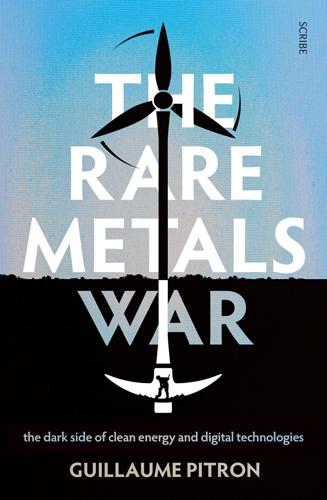
The Rare Metals War
by
Guillaume Pitron
Published 15 Feb 2020
(Machine tools are used for factory work automation, from basic milling machines to ultra-connected machining centres.) The Mittelstand acted pre-emptively by gradually replacing humans with robots, allowing it to remain competitive to the extent that German industry still represents 30 per cent of the country’s GDP.27 Except that industrial robots require terrific amounts of tungsten. China has always produced this rare metal in abundance, but there are other tungsten mines around the world, ensuring supply diversity for manufacturers. During the 1990s, the Chinese machined their own cutting tools — ‘Some hammers, a few drills … really crumby tools,’ said an Australian consultant.28 But they wanted to move up the value chain in this area as well.
…
See ‘Central Enterprises Launch a New Wave of Investments in Inner Mongolia, Signing Contracts Worth RMB 402 Million Yuan at an Informal Meeting’, PR Newswire, 1 March 2017. The city of Baotou is still pursuing its ambitions by developing an industrial area of 470 square kilometres dedicated to rare earths. See ‘Huge Rare Earth Industrial Park Coming to Inner Mongolia’, China Daily, 29 August 2017. Interview with Dudley Kingsnorth, 2016. Industrial robots are in fact the cornerstone of tomorrow’s smart and ultra-connected ‘4.0 factories’, where Germany has the lead. In 2015, the German machine tool industry generated over €15 billion, exported three-quarters of its production and had a headcount of nearly 70,000 employees. It is a pillar of the national economy.
…
For a more detailed explanation, see the French Geological Survey’s public report: ‘Panorama du marché du tungstène’ [‘View of the Tungsten Market’], BRGM, July 2012. Interview with Chris Ecclestone, 2016. The Mittelstand may have won the battle, but they did not win the war. China has a keen interest in some of Germany’s star industrial robots, such as KUKA. See ‘Allemagne: le “Mittelstand” face à l’offensive chinoise’ [‘Germany: the Mittelstand faces the Chinese offensive’], Le Monde, 4 June 2016. Graphene’s applications are astounding: bendy mobile phones, see-through laptops, ultra-powerful nanoprocessors, or nanochips that can be inserted into the human body to detect cancers, and so on.

The AI Economy: Work, Wealth and Welfare in the Robot Age
by
Roger Bootle
Published 4 Sep 2019
A sequel, Blade Runner 2049, appeared in 2017, again depicting a similar dystopian future. Robots disappoint Meanwhile, in the real world, the performance of robots has disappointed early hopes. You could be forgiven for thinking that they appeared on the scene only recently. In fact, General Motors introduced the first industrial robot, called Unimate, in 1961. Even now, about a half of the robots in industrial use are employed in automotive manufacturing, where the closely defined tasks and rigid environment perfectly match what robots are best at.27 Interestingly, while automobile plants routinely employ robots to install windscreens on vehicles, if a car owner suffers a damaged windscreen and goes to a car repair shop to have it fixed they will find that this work is done by a human technician.
…
(Tying a shoelace is another example of something that is still beyond a robot’s capacity.) Consequently, the much-vaunted employment of robots as independent domestic helpers, as distinct from tools to assist human helpers, is a very long way off, if, indeed, it is ever achieved. Researchers in Singapore have been trying to teach an industrial robot to assemble an IKEA flatpack chair. The good news is that they have succeeded. The bad news is that it took two of them, preprogramed by humans, more than 20 minutes. It is alleged that a human could accomplish this task in a fraction of the time – although this particular human might well take much longer, or would give up, in frustration, before the task was finished.28 Google’s research and development company/group, now known as X, recently ran a project to identify images of cats on YouTube.
…
But Baxters are, in fact, not very capable and are not in much demand. They may be cheap to run but they cost $22,000 and upward to buy. Sales of Baxters have not picked up, and in December 2013 Baxter’s manufacturer, a firm called Rethink, laid off a quarter of its staff.39 According to Kevin Kelly, it costs $100,000 or more to buy an industrial robot but you may need to spend four times that amount over a lifespan to program, train, and maintain it, making a total bill over the robot’s “lifetime” of half a million dollars or more.40 So, employing a robot will involve a fixed investment. And this investment will be subject to all the usual factors that govern whether an investment is worthwhile: the cost of the equipment and any maintenance costs, the rate of return, the cost of finance, and the risk, including the risk of obsolescence.
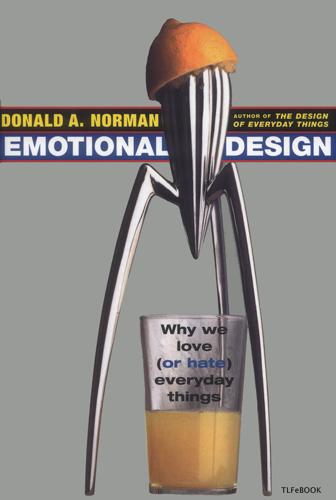
Emotional design: why we love (or hate) everyday things
by
Donald A. Norman
Published 10 May 2005
Even simple machines such as elevators and garage doors have sensors that stop them from closing on people. Today's robots try to avoid bumping into people or objects. Lawn mower and vacuum cleaner TLFeBOOK 198 Emotional Design robots have sensing mechanisms that cause them to stop or back away whenever they bump into anything or come too close to an edge, such as a stairway. Industrial robots are often fenced off, so that people can't get near them when they are operating. Some have people detectors, so they stop when they detect someone nearby. Home robots have many mechanisms to minimize the chance of damage; but at the moment, most of them are so underpowered that they couldn't hurt even if they tried to.
…
Note that DWIM (Do What I Mean) is a very old concept: Warren Teitelman introduced it into the command interpretation system of the LISP computer programming system in 1972. When it works, it is very, very nice. 202 "Asimov's main failure" A good review of the work on emergent systems, that is, against central control, is in Johnson's book Emergence (Johnson, 2001). 203 "There already are some safety regulations that apply to robots" {Industrial Robots and Robot System Safety. Occupational Safety and Health Administration, US Department of Labor, OSHA Technical Manual (TED 1-0.15A), 1999) Epilogue: We Are All Designers 215 "You may recall Victor Papanek's short book" (Papanek & Hennessey, 1977) 220 "Stuart Brand ... has shown" (Brand, 1994) 223 "John Seymour's wonderful description" (Seymour, 2001) 224 "Steve Harrison and Paul Dourish" (Harrison & Dourish, 1996) 226 "My own web site."
…
Washington, DC: The National Academies Press. Hinton, L., Nichols, J., & Ohala, J. J. (1994). Sound symbolism. Cambridge, UK: Cambridge University Press. Hughes-Morgan, M. (2002, February 25). Net effect of computer rage. This is London, http://www.thisislondon.com/dynamic/news/story.html?in_review_ id=506466&in_review_text_id=469291. Industrial Robots and Robot System Safety. Occupational Safety and Health Administration, US Department of Labor, OSHA Technical Manual (TED 1—0.15A). (1999). http://www.osha.gov/SLTC/machineguarding/publications.html. Section V entitled "Control and Safeguarding Personnel" outlines specific means for safeguarding robot systems.

In Our Own Image: Savior or Destroyer? The History and Future of Artificial Intelligence
by
George Zarkadakis
Published 7 Mar 2016
Even in China, where labour costs are rising and losing their global competitiveness, factory bosses today are beginning to commission armies of industrial robots to take over. Foxconn, a manufacturer of electronics and gaming consoles, made the news in 2012 by announcing it will replace a million workers with a million robots (aptly named ‘Foxbots’). According to the Frankfurt-based International Federation of Robotics, China will become the biggest consumer of industrial robots by 2014. Chinese factories will thus continue to increase their productivity and the quality of their products at a lower cost. It makes perfect sense if you are the CEO or the owner of the factory, despite the fact that your economic astuteness will put a good many people out of work.
…
Nevertheless, with his last book Wittgenstein takes an empirical position: meaning is embedded in the use of language, it does not – and cannot – exist outside a social context. Meaning happens only when we communicate with another person who understands our language. Timeline: A brief history of Artificial Intelligence 1According to: http://spectrum.ieee.org/automaton/robotics/industrial-robots/041410-world-robot-population 2According to research by Forrester Group. ACKNOWLEDGEMENTS My journey in Artificial Intelligence and the scientific study of consciousness began almost three decades ago. Through-out this time I was fortunate to encounter many brilliant minds that influenced my thinking and opened new vistas of enquiry.
…
Ross 175, 176 Asimov, Isaac 51, 58 Asperger syndrome 301 attention 156–7, 160–1 Augustine, St 126 australopithecines 5, 6, 22 autism 300, 301 autocatalysis 183–4, 295 automata 217–18 autopoiesis concept 294–5 awareness 144–6, 156–7, 160–1, 162–3 see also self-awareness Babbage, Charles 62, 221–5 Analytical Engine 225–7, 235 Difference Engine 217, 223–5, 227 Bach, Johann Sebastian 186, 187 Bacon, Francis (1561–1626) 102 Bacon, Roger (c. 1214–1292) 35–6 barber paradox 204 Baron-Cohen, Simon 301 Bateson, Gregory 175 Baudrillard, Jean 76–8 behavioural psychology 50 behaviourism 154 Bell, Alexander Graham 230 Berger, Hans 159 Berkeley, George (Anglican bishop) 139–40 Berners-Lee, Sir Tim 241 Bicentennial Man (1999 film), robot Andrew 55, 57 big bang of the modern mind 10, 12–15 big data economy 249–55 binary arithmetic 149 binary logic 198 bioinformatics 123, 249 Blade Runner (1982 film) 53–4, 57, 72 Bletchley Park codebreakers 234–6 body, role in consciousness 169–71 body–mind dualism 124 and the simulated universe 126–9 problems for AI 129–31 body-mind problem 32, 114–19, 129–31 Bonaparte, Napoleon 37 Boole, George 197, 229 Boolean logic 197–200, 230 Borges, Jorge Luis 241–2, 294–5 Bostrom, Nick 129 brain (human) architecture in early humans 13 as a cybernetic system 175–9 as a guide for AI development 280–2 as a second-order cybernetic system 185–6 as a self-referencing entity 186–9 development in childhood 10–11 Human Brain Project (HBP) xiv–xvi, 164–5, 287 imaging techniques 158–60 research effort 163–5 structure of brain cells (neurons) 42–3 brain anatomy, the interpreter 24 brain-based devices (BBDs) 284–5 BRAIN project 287 brain size australopithecines 6 enlargement over time 13 Homo erectus 7 Homo habilis 6 modern humans 8 Neanderthals (H. neanderthalensis) 7, 8 Braitenberg, Valentino 175 brazen head stories 35–6, 58 Brooks, Rodney 275–6, 288 Butler, Samuel 289–90 Byrne, David 19 Byron, Lord 60, 62, 63–4, 226 Byzantine automata 33–4 calculating machines 219–27 Cameron, James 66 Capgras Syndrome 70–3 Cars (film) 20 cave paintings 9, 10, 16, 17, 20–1, 23 cellular automata 295–6 Chabris, Christopher 160 Chalmers, David xiv–xvi, 121 Chambers, John 252 Changeux, Jean-Pierre 166–7 chemistry, organic and inorganic 39–40 chess-playing automaton 37 chess-playing computer, Deep Blue 263 child development 10–11 chimpanzees 5, 12, 13 China, increasing use of industrial robots 267–8 Chomsky, Noam 13 Christianity, influence of Plato 101–2 Chua, Leon 286 Clarke, Arthur C. 193, 257 client-server architectures 245–9 cloud technologies 246 Clynes, Manfred 79 coding of information 149–52 cogito ergo sum (I think therefore I am) (Descartes) 112–13, 120, 131, 188 cognitive archaeology 75 cognitive psychology 154–5, 157–8 Cold War 236–8, 240–1, 257 Colossus (first programmable electronic computer) 235 Colossus: The Forbin Project (1970 film) 65–6 Columbus, Chris 55 coma 307 complex systems, emergent properties 41 computational theory of mind 210–16 computer metaphor for life 123–5 for the brain 43–4, 146 computer simulation, possibility of living in 127–9 computers as algorithms 210–11 as philosophical zombies (p-zombies) 122 creation of ‘electronic brains’ 51–3 computing history 217–31 advent of personal computers 237–8 automata 217–18 business-specific computer languages 237 calculating machines 219–27 Cold War developments 236–8, 240–1 digital revolution 243–8 distinction between machine and program 221, 225–9 first email 241 hardware development 229–30, 237 mobile devices 245 origins of the Internet 238–43 Second World War developments 234–6 servers 245–9 software development 229 telecommunications development 238–43 conflicting beliefs, inability of AI to cope with 277–8 conscious artefacts as objects of love 48–59 consciousness and the body–mind problem 114–19 as pure information 123–5 definition 156–7 emergence through self-referencing 188–9 empirical approach 143–6 nature of 91–4 problem in AI xi–xviii qualia of 120–3, 157–8 quantum hypothesis 106–9 role of the body 169–71 scientific study of 154–65 signatures of 158, 161–3 the hard problem of 120–3, 157–8 three states of 156–7 towards a theory of 166–71 uploading into a computer 91, 119, 146 view of Aristotle 137–8 Cook, Matthew 296 Cooke, Sir William Fothergill 42 Coppélia (ballet) 61–2 Cowen, Tyler 266, 269, 300, 313 creation myths 114 creationism 289 creativity, lacking in AI 276–7 Crick, Francis xiii, 155, 158 cultural relativism 114 cybernetic prostheses 79–84 cybernetic systems, first-and second-order 185–6 cybernetics disciplines spawned from 174–5 emergence of order 184–6 emergent properties of systems 182–3 lessons from 306–8 nature of cybernetic systems 172–5 origins of 175–83 cyberspace, human existence in 146–7 cyborgs (cybernetic organisms) 79–85 Damasio, Antonio 306–7 Darwin, Charles 289–90 Darwin, Erasmus 61 David (android in AI) 56–7 deductive logic 196, 197 Deep Blue (chess-playing IBM computer) 263 Dehaene, Stanislas 158, 161–3, 177, 185 Dehaene–Changeux theory of consciousness 166–7 Dennett, Daniel 12, 143–6 Descartes, René 36–42, 86–7, 92, 112–19, 139, 154–5 cogito ergo sum (I think therefore I am) 112–13, 120, 131, 188 Dick, Philip K. 36, 54, 71–2 Dickens, Charles 40 digital Artificial Life 105–6 digital biological data 123–4 digital heaven 125–9 digital lives 124–5 digital revolution 243–8 digital transformation 232–4 drivers for 254–5 risks associated with 250–3 DNA printing 123–4 DNA structure, discovery of 180–1 Doctor Mirabilis 35 Dow Jones Flash Crash (6 May 2010) 247–8 Dr Faustus myth 63 Dracula (Bram Stoker) 62 Drake equation 132–3 dreaming 110 Drexler, Eric 288–9 Dreyfus, Hubert 278 drugs, mind-altering 110, 111 du Bois-Reymond, Emil 39 du Vaucanson, Jacques 218 dualism Cartesian 37–42, 113–19 computer metaphor for the brain 43–4 cyborgs 83 versus monism 92–3 see also body–mind dualism dualist thinking 18, 25–6 Dunbar, Robin 14 Dune (Frank Herbert) 290 dwellings, construction by Homo sapiens 9 dynamic fluids metaphor for life 31–3 Dyson, Freeman 291 Eccles, Sir John 117–119 Edelman, Gerald 167, 282–5 Edison, Thomas 230 Einstein, Albert 166 Eisenhower, President Dwight D. 240 élan vital (spirit of life) 40–1 electric metaphor for life 38–40 electroencephalography (EEG) 159, 160, 161 email 241 emergence in complex systems 41 of order out of chaos 184–6 of self-awareness in AI 273–5 emergent properties of systems 182–3 empathy 11 empiricism 32, 102–3, 138–42, 196 employment, occupations at risk of automation 266–9 endorphins 170 enhancing cybertechnology 81–4 ENIAC computer 235–6 Enigma code 234–5 Enlightenment 139 Eno, Brian 19 entropy 128, 149–50 Epimenides’ paradox 204–5 Erewhon (Samuel Butler) 290 Escher, M.

The Nature of Software Development: Keep It Simple, Make It Valuable, Build It Piece by Piece
by
Ron Jeffries
Published 14 Aug 2015
The “control plane” refers to software that exists to help manage the infrastructure and applications rather than directly delivering user functionality. Logging, monitoring, schedulers, scalers, load balancers, and configuration management are all parts of the control plane. The common thread running through these failures is that the automation is not being used to simply enact the will of a human administrator. Rather, it’s more like industrial robotics: the control plane senses the current state of the system, compares it to the desired state, and effects changes to bring the current state into the desired state. In the Reddit failure, ZooKeeper held a representation of the desired state. That representation was (temporarily) incorrect. In the case of the discovery service, the partitioned node was not able to correctly sense the current state.
…
That will smart when the Amazon Web Services bill arrives! Controls and Safeguards The United States has a government agency called the Occupational Safety and Health Administration (OSHA). We don’t see them too often in the software field, but we can still learn from their safety advice for robots.[13] Industrial robots have multiple layers of safeguards to prevent damage to people, machines, and facilities. In particular, limiting devices and sensors detect when the robot is not operating in a “normal” condition. For example, suppose a robot arm has a rotating joint. There are limits on how far the arm is allowed to rotate based on the expected operating envelope.
…
Apply hysteresis. (See Governor.) Start machines quickly, but shut them down slowly. Starting new machines is safer than shutting old ones off. When the gap between expected state and observed state is large, signal for confirmation. This is equivalent to a big yellow rotating warning lamp on an industrial robot. Systems that consume resources should be stateful enough to detect if they’re trying to spin up infinity instances. Build in deceleration zones to account for momentum. Suppose your control plane senses excess load every second, but it takes five minutes to start a virtual machine to handle the load.
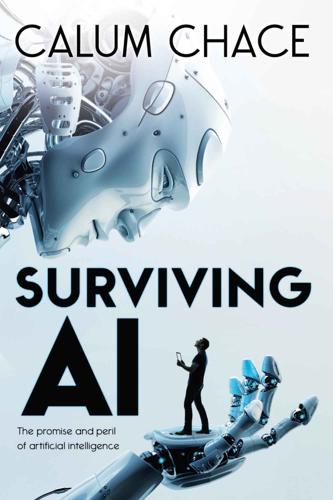
Surviving AI: The Promise and Peril of Artificial Intelligence
by
Calum Chace
Published 28 Jul 2015
In the late 20th century, automation came mainly in the form of robots, particularly in the automotive and electrical / electronic industries – and this is set to accelerate. Robots are peripherals – physical extensions of AI systems. Despite the recession, sales of robots grew at 10% a year from 2008 to 2013, when 178,000 industrial robots were sold worldwide. China became the biggest market, installing 37,000 robots compared with 30,000 in the USA. (18) So the process of automation has been familiar in manual labour jobs for many years. It has also rendered obsolete large numbers of clerical jobs. As we saw in chapter 1, the word “computer” originally meant a person who does calculations, but the days when offices were filled with battalions of young (usually male) human computers are long gone.
…
ENDNOTES (1) The term economic singularity was first used (as far as I can tell) by the economist Robin Hanson: http://mason.gmu.edu/~rhanson/fastgrow.html (2) http://arxiv.org/pdf/0712.3329v1.pdf (3) http://skyview.vansd.org/lschmidt/Projects/The%20Nine%20Types%20of%20Intelligence.html (4) The term AGI has been popularised by AI researcher Ben Goertzel, although he gives credit for its invention to Shane Legg and others: http://wp.goertzel.org/who-coined-the-term-agi/ (5) The Shape of Automation for Men and Management by Herbert Simon, 1965 (6) Computation: Finite and Infinite Machines by Marvin Minsky, 1967 (7) http://www.internetlivestats.com/google-search-statistics/ (8) http://en.wikipedia.org/wiki/High-frequency_trading (9) The Big Switch by Nicholas Carr (p 212) (10) https://en.wikipedia.org/wiki/People%27s_Liberation_Army#Third_Department (11) The Big Switch by Nicholas Carr (p 212) (12) https://www.youtube.com/watch?v=Skfw282fJak (13) The Economist, December 4, 2003 (14) Douglas Adams, The Salmon of Doubt (15) http://www.wired.com/2014/10/future-of-artificial-intelligence/ (16) http://lazooz.org/ (17) https://www.hrw.org/reports/2012/11/19/losing-humanity (18) http://www.ifr.org/industrial-robots/statistics/ (19) “Economic possibilities for our grandchildren”: http://www.econ.yale.edu/smith/econ116a/keynes1.pdf (20) https://www.youtube.com/watch?v=HW5Fvk8FNOQ (21) http://www.oxfordmartin.ox.ac.uk/downloads/academic/The_Future_of_Employment.pdf (22) http://www.dailymail.co.uk/sciencetech/article-2981946/Self-driving-cars-30-cities-2017-Pilot-projects-aims-mass-roll-driverless-vehicles-safe-they.html (23) http://www.alltrucking.com/faq/truck-drivers-in-the-usa/ (24) http://www.bls.gov/ooh/transportation-and-material-moving/bus-drivers.htm (25) http://www.bls.gov/ooh/transportation-and-material-moving/taxi-drivers-and-chauffeurs.htm (26) http://www.cristo-barrios.com/discografia/iamus-2/?

The Economics of Belonging: A Radical Plan to Win Back the Left Behind and Achieve Prosperity for All
by
Martin Sandbu
Published 15 Jun 2020
Bradford DeLong, “NAFTA and Other Trade Deals Have Not Gutted American Manufacturing—Period,” Vox, 24 January 2017, https://www.vox.com/the-big-idea/2017/1/24/14363148/trade-deals-nafta-wto-china-job-loss-trump. 12. See Robert D. Atkinson, “Which Nations Really Lead in Industrial Robot Adoption?,” Information Technology and Innovation Foundation, November 2018, http://www2.itif.org/2018-industrial-robot-adoption.pdf. 13. Some of the highest estimates of factory jobs lost in the West because of trade with poor countries are those of Adrian Wood in “1990s Trade and Wages Debate.” He suggests that in 2014, there were twelve million fewer manufacturing jobs in the OECD because of trade with non-OECD countries.
…
Without offshoring labour-intensive production tasks to low-wage economies, the pressure on companies to invest in more labour-saving technological upgrades at home would have been even stronger. Indeed, the high-income economies that have retained the strongest manufacturing sectors—Korea, Germany, Japan, Sweden—are those that have invested the most in industrial robots.12 Perhaps a greater share of the world’s industrial output could have been sourced in the West today if it had denied poorer countries a place in supply chains, but the effect on jobs would have been marginal (and less trade would also have meant fewer new factory jobs created in manufacturing for export).13 While I have focused on jobs, the same goes for wages.

Machines of Loving Grace: The Quest for Common Ground Between Humans and Robots
by
John Markoff
Published 24 Aug 2015
In some cases I discovered that the designers resist thinking deeply about the paradoxical relationship between artificial intelligence and intelligence augmentation. Often, it comes down to a simple matter of economics. There is now a burgeoning demand for robots with abilities that far exceed those of the early industrial robots of the last half century. Even in already highly automated industries like agriculture, a new wave of “ag robots” are now driving tractors and harvesters, irrigating and weeding fields, conducting surveillance from the air, and generally increasing farm productivity. There are also many instances where the researchers think deeply about the paradox, and many of those researchers place themselves squarely in Engelbart’s camp.
…
A crowd of 150 people in appropriate alien-themed costumes had gathered, including Google cofounder Sergey Brin, who wore a dress. In the basement of the sprawling mansion where the party was held, a robot arm grabbed small boxes one at a time and gaily tossed the souvenirs to an appreciative crowd. The robot itself consisted of a standard Japanese-made industrial robot arm outfitted with a suction gripper hand driven by a noisy air compressor. It helped that the robot could “see” the party favors it was picking up. For eyes—actually a single “eye”—the robot used the same sensor Microsoft originally added to the Xbox to capture the gestures of video game players in the living room.
…
Eventually, Konolige didn’t even bother to show up at one of the meetings—he went kayaking instead. For a while Bradski tried to be a team player, but then he realized he was in danger of reentering the world of compromises that he had left at Intel. “What the hell,” he thought. “This isn’t me. I need to do what I want.” He started thinking about potential applications for industrial robotics integration, from moving boxes to picking up products with robot arms. After discussing robotics extensively with people in industry, he confirmed that companies were hungry for robots. He told Willow’s CEO that it was essential to have a plan B in case the home robot developments didn’t pan out.

The Innovation Illusion: How So Little Is Created by So Many Working So Hard
by
Fredrik Erixon
and
Bjorn Weigel
Published 3 Oct 2016
Paul Krugman calls it “the big meh,” suggesting that much of the new technology is “more fun than fundamental” and hence does not boost the economy as much as the media and tech developers claim.5 It is easy to agree with that view. Mobile gaming, for instance, has grown much faster than industrial robotics. While some observers might fret that “robots are coming,” the real concern is that industrial robots are not employed more widely. When people become anxious about rapid growth in the use of robots in services and industrial production in the future, they do not appreciate that growth is starting from low levels in absolute terms and that growth will need to accelerate much more if Western economies are to avoid supply disruptions.
…
Robots may in fact be more part of the solution than the problem. Robots increase productivity and create jobs. For every industrial robot introduced, between three and five jobs are created, according to an industry study, and if indirect jobs are added that number notches up.82 That is perhaps an exaggeration, but there is plenty of research other than industry studies pointing in the same direction. For example, economists George Graetz and Guy Michaels found that industrial robots increased growth rates, wages, and total factor productivity in their study of the impact of utilizing robots in 17 countries between 1993 and 2007.
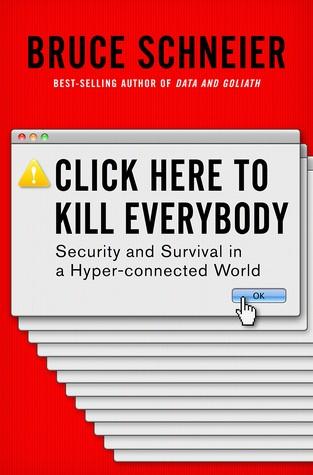
Click Here to Kill Everybody: Security and Survival in a Hyper-Connected World
by
Bruce Schneier
Published 3 Sep 2018
Darlene Storm (27 Apr 2015), “Researchers hijack teleoperated surgical robot: Remote surgery hacking threats,” Computerworld, https://www.computerworld.com/article/2914741/cybercrime-hacking/researchers-hijack-teleoperated-surgical-robot-remote-surgery-hacking-threats.html. 86and industrial robots: Thomas Fox-Brewster (3 May 2017), “Catastrophe warning: Watch an industrial robot get hacked,” Forbes, https://www.forbes.com/sites/thomasbrewster/2017/05/03/researchers-hack-industrial-robot-making-a-drone-rotor. 86Autonomous military systems deserve: Paul Scharre (24 Apr 2017), Army of None: Autonomous Weapons and the Future of War, W. W. Norton, https://books.google.com/books?id=sjMsDwAAQBAJ. 86The US Department of Defense defines: Heather Roff (9 Feb 2016), “Distinguishing autonomous from automatic weapons,” Bulletin of the Atomic Scientists, http://thebulletin.org/autonomous-weapons-civilian-safety-and-regulation-versus-prohibition/distinguishing-autonomous-automatic-weapons. 86If they are autonomous: Paul Scharre (29 Feb 2016), “Autonomous weapons and operational risk,” Center for a New American Security, https://www.cnas.org/publications/reports/autonomous-weapons-and-operational-risk. 86Technologists Bill Gates, Elon Musk, and Stephen Hawking: Michael Sainato (19 Aug 2015), “Stephen Hawking, Elon Musk, and Bill Gates warn about artificial intelligence,” Observer, http://observer.com/2015/08/stephen-hawking-elon-musk-and-bill-gates-warn-about-artificial-intelligence. 86The risks might be remote: Stuart Russell et al. (11 Jan 2015), “An open letter: Research priorities for robust and beneficial artificial intelligence,” Future of Life Institute, https://futureoflife.org/ai-open-letter. 86I am less worried about AI: These two essays talk about that: Ted Chiang (18 Dec 2017), “Silicon Valley is turning into its own worst fear,” BuzzFeed, https://www.buzzfeed.com/tedchiang/the-real-danger-to-civilization-isnt-ai-its-runaway.
…
It is not the if, it’s only the when to me.” Robots offer the most evocative example of software autonomy combined with physical agency. Researchers have already exploited vulnerabilities in robots to remotely take control of them, and have found vulnerabilities in teleoperated surgical robots and industrial robots. Autonomous military systems deserve special mention. The US Department of Defense defines an autonomous weapon as one that selects a target and fires without intervention from a human operator. All weapons systems are lethal, and they are all prone to accidents. Adding autonomy increases the risk of accidental death significantly.

The Second Machine Age: Work, Progress, and Prosperity in a Time of Brilliant Technologies
by
Erik Brynjolfsson
and
Andrew McAfee
Published 20 Jan 2014
We spoke with inventors, investors, entrepreneurs, engineers, scientists, and many others who make technology and put it to work. Thanks to their openness and generosity, we had some futuristic experiences in today’s incredible environment of digital innovation. We’ve ridden in a driverless car, watched a computer beat teams of Harvard and MIT students in a game of Jeopardy!, trained an industrial robot by grabbing its wrist and guiding it through a series of steps, handled a beautiful metal bowl that was made in a 3D printer, and had countless other mind-melting encounters with technology. Where We Are This work led us to three broad conclusions. The first is that we’re living in a time of astonishing progress with digital technologies—those that have computer hardware, software, and networks at their core.
…
What’s more, Brooks envisions creating robots that won’t need to be programmed by high-paid engineers; instead, the machines can be taught to do a task (or retaught to do a new one) by shop floor workers, each of whom need less than an hour of training to learn how to instruct their new mechanical colleagues. Brooks’s machines are cheap, too. At about $20,000, they’re a small fraction of the cost of current industrial robots. We got a sneak peek at these potential paradox-busters shortly before Rethink’s public unveiling of their first line of robots, named Baxter. Brooks invited us to the company’s headquarters in Boston to see these automatons, and to see what they could do. Baxter is instantly recognizable as a humanoid robot.
…
In fact, in a list of all the candidates for this classification compiled by the economist Alexander Field, only steam power got more votes than ICT, which was tied with electricity as the second most commonly accepted GPT.9 If we are all in agreement, then why the debate over whether ICTs are ushering in a new golden age of innovation and growth? Because, the argument goes, their economic benefits have already been captured and now most new ‘innovation’ involves entertaining ourselves inexpensively online. According to Robert Gordon: The first industrial robot was introduced by General Motors in 1961. Telephone operators went away in the 1960s. . . . Airline reservations systems came in the 1970s, and by 1980 bar-code scanners and cash machines were spreading through the retail and banking industries. . . . The first personal computers arrived in the early 1980s with their word processing, word wrap, and spreadsheets. . . .

Frugal Innovation: How to Do Better With Less
by
Jaideep Prabhu Navi Radjou
Published 15 Feb 2015
In addition to 3D printing, the plummeting cost of industrial robots – such as Baxter, a $25,000 humanoid robot sold by Rethink Robotics – is unleashing a wave of automation in factories that could not only boost manufacturers’ productivity and quality but also their agility. SRI International, a research institute based in Silicon Valley, is working on a project funded by DARPA (Defence Advanced Research Projects Agency) to develop nimbler, smaller and lighter robotic arms that will be ten times cheaper and consume 20 times less energy than existing industrial robots, and yet perform complex tasks in dynamic settings more reliably.
…
SRI International, a research institute based in Silicon Valley, is working on a project funded by DARPA (Defence Advanced Research Projects Agency) to develop nimbler, smaller and lighter robotic arms that will be ten times cheaper and consume 20 times less energy than existing industrial robots, and yet perform complex tasks in dynamic settings more reliably. Low-cost robotics is used particularly in Germany and Japan, where factory workforces are ageing rapidly. Indeed, Japan is already a robotics world leader, with over 300,000 robots operating in its factories. It is predicted that over 1 million industrial robots will be in use in the country by 2025. Given that a single robot can perform the work of ten humans, these 1 million robots would be equivalent to 15% of Japan’s 2012 workforce (approximately 65.3 million, according to World Bank data). “Robots are the cornerstone of Japan’s international competitiveness,” says Shunichi Uchiyama, head of manufacturing policymaking at Japan’s trade ministry.

Bold: How to Go Big, Create Wealth and Impact the World
by
Peter H. Diamandis
and
Steven Kotler
Published 3 Feb 2015
Grab one of his arms, for example, and Baxter will turn his head in your direction, the tablet computer displaying a pair of wide-open eyes to demonstrate interest. But what is most exciting about Baxter is his user interface. Unlike most industrial robots, Baxter is human-safe. Getting in a room with a typical six-axis car-building robot is a good way to get dead—which explains why most industrial robots are cordoned off from humans. But Baxter doesn’t need a cage. Sensors detect when the robot hits something unexpected and stops the motion immediately, so “he” can’t hurt you. Moreover, Baxter has an elegant and simple user interface.
…
And with AI soon coming online, it won’t be long before putting Baxter through his motions will be replaced by simply having a conversation with him. “Hey, Baxter, could you put this tire on that car?” “Baxter is a big step forward,” says Dr. Dan Barry,48 head of robotics at SU. “It’s the first robot that bridges the gap between mindless, repetitive, robust, single-purpose industrial robots and intelligent, widely sensing, situationally aware, computationally complex, delicate research robots.” More important, Baxter is the kind of robot that entrepreneurs can now build businesses around. Case in point: Digital Apparel, a Bay Area clothing start-up, plans to do 3-D scans of their customer’s bodies, then use those scans as a pattern for cutting and stitching denim to make perfect custom-fitting jeans.

Futureproof: 9 Rules for Humans in the Age of Automation
by
Kevin Roose
Published 9 Mar 2021
Do you ever look back at pictures or videos from years ago and feel like you’re seeing not just a skinnier or fresher-faced version of you, but a more surprising version of you, one who thought more independently, engaged more deeply with ideas, and ventured further out of the mainstream? I’ll go first. I feel all of these things, all of the time. And I don’t just think it’s the haze of nostalgia. I think it’s about the machines. So far in this book, we’ve talked mainly about external forms of automation—industrial robots, machine learning algorithms, back-office AI software. But there is a kind of internalized automation taking place inside many of us that, in some ways, is much more dangerous. This kind of automation burrows into our brains and affects our inner lives—changing how we think, what we desire, whom we trust.
…
Kawai wanted to be like the Kami-sama someday, and he’d sought out a job in the local Toyota plant’s forging division, where he could spend every day practicing taking glowing-hot rods out of a furnace, placing them on his anvil, and carefully hammering them into crankshafts. Auto manufacturing was a solid, middle-class job, but it was increasingly looking like an endangered one. A few years earlier, General Motors—then the biggest automaker in the world—had installed the world’s first industrial robot: a four-thousand-pound, one-armed behemoth known as the Unimate. The Unimate became a pop culture sensation, even appearing on The Tonight Show with Johnny Carson, where it wowed the audience by showing off various tricks it had been programmed to do, including putting a golf ball, pouring itself a glass of beer, and conducting the Tonight Show band.
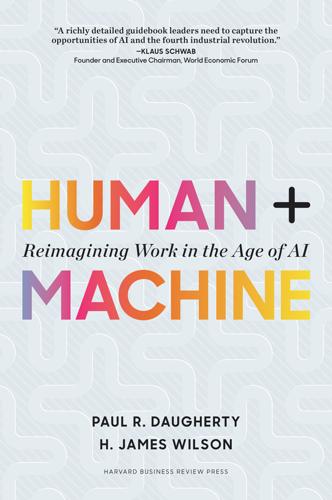
Human + Machine: Reimagining Work in the Age of AI
by
Paul R. Daugherty
and
H. James Wilson
Published 15 Jan 2018
That specific task was part of a rigid, fixed chain of work that would generally include humans doing other predefined tasks—for instance, inspecting the stamped metal parts in order to discard defects. Contrast that traditional assembly line with a factory where robots are much smaller and more flexible, able to work alongside humans. A factory where those robots and other types of machinery are using embedded sensors and sophisticated AI algorithms. Unlike earlier generations of industrial robotics—which were typically bulky, unintelligent, and somewhat dangerous pieces of machinery—these new types of collaborative robots are equipped with the ability to sense their environment, comprehend, act, and learn, thanks to machine-learning software and other related AI technologies. All this then enables the work processes to be self-adapting, with fixed assembly lines giving way to flexible human-machine teams that can be put together on the fly.
…
What’s more, people seemed to be less consistent at the task than they were at others.10 Now a person loosely fits the door panel and then the door moves along the line to the nearby cobot to finish the job. The cobot is outfitted with cameras and other sensors so it can tell when a person is close. Unlike traditional industrial robots that perform set movements over and over without awareness of their surroundings, the cobot in the BMW plant deftly avoids knocking into people or getting in the way. Furthermore, these robots can be reprogrammed by nonprogrammers using a tablet. No coding skills are needed. And because they are lightweight, they can be moved anywhere in a warehouse and perform various tasks, depending on the need.11 The human-robot system then acts as an extender of people’s ability to work; they’re now less likely to get fatigued or injured.
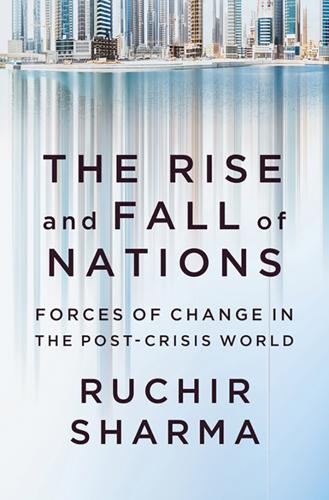
The Rise and Fall of Nations: Forces of Change in the Post-Crisis World
by
Ruchir Sharma
Published 5 Jun 2016
While the robotics revolution could come faster than most previous technology revolutions, it is likely to be gradual enough to complement rather than destroy the human workforce. A huge gap still exists between the size of the world’s industrial robot population—about 1.6 million—and the global industrial labor force of about 320 million humans. Most of these industrial robots are currently unintelligent machines, committed to a single task like turning a bolt or painting a car door, and indeed nearly half of them work in the car industry, which is still the single largest employer (of humans) in the United States.
…
The job picture has been particularly strong in Germany, Japan, and South Korea—which are also the industrial countries that employ the most robots. Admittedly, the automaton invasion is in its early stages and picking up speed, but both historical and current evidence suggests humans will come to some agreeable arrangement with these invaders of their own creation. One of the new trends is cobots, industrial robots with swing arms safe enough to work alongside and in cooperation with people, rather than inside cages. The techno-optimists believe robots will be our servants, not our replacements, and will free us for lives of pampered leisure in retirement. Be that as it may, a strong practical argument can be made that the answer to fewer young people is more robots.
…
“In China, the robots are going to come just in time” to rescue the country from population decline.14 In the future, economists may count growth in the working robot population as a positive sign for economic growth, the same way that today they analyze growth in the working-age human population. Whether by design or happy accident, many of the countries with the most rapidly aging populations also have the largest robot populations. According to the International Federation of Robots, the highest density of robots in the world can be found in South Korea, which in 2013 had 437 industrial robots per 10,000 employees, followed by Japan with 323, and Germany with 282. China was way behind with only 14, but on the bright side—arguably—it also had the world’s fastest-growing robot population, up by 36,000 in 2013. I am optimistic on automation in the workplace because I believe that the laws that govern the economic world are similar to those that govern the physical world, in which nothing is ever lost, nothing is gained, and everything is transformed.

Visual Thinking: The Hidden Gifts of People Who Think in Pictures, Patterns, and Abstractions
by
Temple Grandin, Ph.d.
Published 11 Oct 2022
“Work, Skills, Community: Restoring Opportunity for the Working Class.” Opportunity America, American Enterprise Institute, and Brookings Institution, 2018. https://www.aei.org/wp-content/uploads/2018/11/Work-Skills-Community-FINAL-PDF.pdf?x91208. Chakravarty, S. “World’s Top 10 Industrial Robot Manufacturers.” Market Research Reports, 2019. https://www.marketresearchreports.com/blog/2019/05/08/world’s-top-10-industrial-robot-manufacturers. Chang, C. “Can Apprenticeships Help Reduce Youth Unemployment?” Century Foundation, November 15, 2015. https://tcf.org/content/report/apprenticeships/. Collins, M. “Why America Has a Shortage of Skilled Workers.”
…
In the most highly automated systems, there will always be a need for highly skilled people to install and repair the machines, the service that makes rapid delivery to your doorstep possible. American companies such as Amazon, Walmart, and Frito-Lay are customers. The most advanced robotic warehouse comes from the UK, and Japan reigns supreme for automated machine tools. According to Market Research Reports, the top five manufacturers of industrial robots are located in Switzerland, Japan, and Germany. In addition to making most of the world’s iPhones, China builds the clever machines that put the popular chocolate swirls in soft-serve ice cream cones. As of 2014, Europe had 37 percent of the elevator-modernization market and the United States only 17 percent.
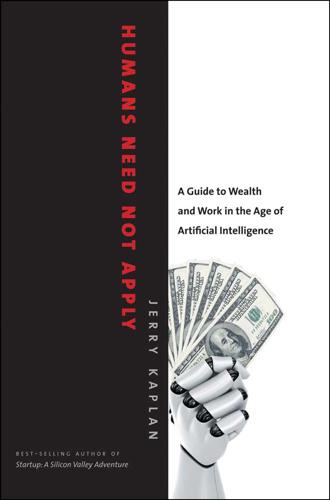
Humans Need Not Apply: A Guide to Wealth and Work in the Age of Artificial Intelligence
by
Jerry Kaplan
Published 3 Aug 2015
Giant red OFF buttons, of the sort commonly depicted in movies, were placed in strategic locations in case of an emergency. Industrial robots have evolved significantly over the decades, but most of the advances have been in the precision of their control, strength, and durability as well as reduced weight and cost. As a general matter, their working environments have to be designed around them, rather than the other way around. Because they typically can’t see, hear, or otherwise sense their surroundings, those surroundings have to be simple and predictable. If an industrial robot arm is expecting a bolt to be in a particular position at a particular moment, it damn well better be exactly where it’s supposed to be or the entire process has to be restarted.

Industrial Internet
by
Jon Bruner
Published 27 Mar 2013
Cheap, easy-to-program microcontrollers; powerful open-source software; and the support of hardware collectives and innovation labs[41] make it possible for enthusiasts and minimally-funded entrepreneurs to create sophisticated projects of the sort that would have been available only to well-funded electrical engineers just a few years ago — anything from autonomous cars to small-scale industrial robots. In the same way that expertise in software isn’t necessary to create a successful Web app, expertise barriers will fall in software-machine interfaces, opening innovation to a big, broad, smart community. Neil Gershenfeld, director of the Center for Bits and Atoms at MIT, compares the development of the amateur hardware movement to the development of the computer from mainframe to minicomputer to hobbyist computer and then to the ubiquitous personal computer.

Wired for War: The Robotics Revolution and Conflict in the 21st Century
by
P. W. Singer
Published 1 Jan 2010
Computers were delivering well past expectations, with the military seeking to integrate them in all possible manners. But robotics wasn’t completely dormant. In 1956, the world’s first robot company, Unimation (Universal Automation), was founded, and in 1962, the first industrial robot, Unimate, was placed on a production line at General Motors. In 1973, the first industrial robot controlled by a computer was installed by Unimation’s only competitor, the Cincinnati Milacron Corp. It was called T3 (The Tomorrow Tool). The first real mobile robot, not bound to an assembly line or lab, came in 1968. Shakey was built at the Stanford Research Institute and was novel for being able to move down a hallway without bumping into the walls.
…
On the first day of trading, iRobot’s public value hit $620 million. At the market’s close, a PackBot rang the bell at the New York Stock Exchange, the first robot ever to do so. THE iROBOT WAY iRobot’s business model splits its sales effort between a consumer division that targets robots for the home and a government and industrial robots division that mainly targets the military. The military business currently makes up about a third of revenue, but market analysts are “really excited by it” and predict it will soon become about half the company’s revenue. iRobot also has a vibrant research team led by Andrew Bennett, who was part of the team that raced to New York on 9/11.
…
We invest small seed money in stuff we think might have promise.... Basically it’s like prospecting.” When he first was sent to Japan, Sonntag tells how he wondered, “Why the hell do we have an office in Japan? It’s expensive. It’s tough on the family.” But now he describes it as “essential” to his job. About a third of all the world’s industrial robots are in Japan. These raw numbers aside, the best visual evidence of Japan’s knack for robots comes at the “Big Sight” complex in Tokyo. A massive convention center with ten major halls, it is the host of IREX, the International Robotics Exhibition. Held since 1973, the convention now has some one thousand booths of robot exhibitors that range from factory robots to “life assistance” robots (nursebots).

Radical Technologies: The Design of Everyday Life
by
Adam Greenfield
Published 29 May 2017
Whether most of us quite realize it or not, we already live in a time in which technical systems have learned at least some skills that have always been understood as indices of the deepest degree of spiritual attainment. These questions have rarely been more present than they are in the case of a Yaskawa industrial robot, trained in 2015 to perform precision feats with a Japanese fighting sword as part of a promotional campaign called the Bushido Project.7 To accomplish this act of training, master swordsman and Guinness world record-holder Isao Machii was garbed in a full-body motion-capture suit, and recorded in high resolution as he performed the basic moves of his chosen art.8 (The narration of the promotional video Yaskawa released is careful to refer to this art as iaijutsu, the technical craft of swordfighting, as opposed to iaido, the Way of the Sword; as we’ll see, the distinction will become important.)
…
How a New Theory of Neocortex Will Lead to Truly Intelligent Machines,” O’Reilly Emerging Technology Conference 2007, San Diego, CA, March 27, 2007. 2.The Next Rembrandt project, nextrembrandt.com. 3.David Silver et al., “Mastering the Game of Go with Deep Neural Networks and Tree Search,” Nature, Volume 529, Issue 7587, pp. 484–9, January 28, 2016. 4.Younggil An and David Ormerod, Relentless: Lee Sedol vs Gu Li, Go Game Guru, 2016. 5.Nature Video, “The Computer That Mastered Go,” January 27, 2016, YouTube.com. 6.Ormerod, David. “Alphago Shows Its True Strength in 3rd Victory Against Lee Sedol,” Go Game Guru, March 12, 2016, gogameguru.com. 7.Yaskawa Electric Corporation, “YASKAWA BUSHIDO PROJECT: Industrial Robot vs Sword Master,” June 4, 2015, YouTube.com. 8.See Machii’s official website at http://nihontou.jp/syuushinryuu/intro.htm. 9.Cade Metz, “The Sadness and Beauty of Watching Google’s AI Play Go,” Wired, March 11, 2016. 10.Jo Liss, tweet, December 8, 2015, twitter.com/jo_liss/status/674332649226436613 11.Hector J.
…
See Google Siemens, 52–4, 56 Silk Road exchange, 131 Silver, David, 265 Simone, Nina, 261 Sipilä, Juha, 204 Sirer, Emin Gün, 178 Siri virtual assistant, 39 Situationism, 64, 190 Slock.it, 156, 170, 175–6 slow jam (music genre), 221 Slum– and Shackdwellers International, 169 smart city, 33, 48, 52, 52, 55, 59 smart contracts, 115, 147, 150, 153–7, 163, 166, 168, 170, 172, 306 smart home, 33, 36, 38, 46, 48 smartphone, 3, 8–33, 38, 49, 64, 67, 72, 77, 133, 137, 273, 285–6, 313 as “network organ,” 27–9 as platform for augmented reality, 67, 72 as platform for financial transactions, 133, 137 environmental implications of, 18–19 incompleteness at time of purchase, 17 teardown of, 14–16 ubiquity of, 313 smart property, 149–53 Smith, Zachary, 103, 105 Snæfellsjökull glacier, 83 Snaptrends, 227–8, 231, 254 Sobibor, 61 social credit, 285, 311 social dividend, 204 social media, 26, 192, 227–8, 276, 286 Sociometric Solutions, 197 Solanas, Valerie, 191 South Sea Company, the, 165 Soylent nutrient slurry, 35 SpatialKey, 227 Spielberg, Steven, 227 Spivak, Gayatri Chakravorty, 311 Srnicek, Nick, 88, 90–1, 111, 190, 203, 205, 303 Stacks, 275, 277, 280–1, 283–6, 292–5, 299, 313–14 Stanford Dogs Dataset, 219 Stanford University, 283 startups, 13, 118, 137, 145–6, 280–2, 286 Stavrides, Stavros, 173 Sterling, Bruce, 275 Stolpersteine, 72, 74 Stratasys, 103–4, 108 Summers, Larry, 201 Super Sad True Love Story (Shteyngart), 246 Superstudio, 191 supervised learning, 216 SWaCH wastepickers’ collective, 98–9 Swedish death metal (music genre), 221 SweepTheStreets, 170 Szabo, Nick, 150, 303, 306 Target (retail chain), 196 Taylor, Frederick, 35 Taylor, Simon, 160 technolibertarians, 140, 150, 283 Tencent, 285 Tešanovic, Jasmina, 62 Tesla, 166, 193, 222–5, 243, 254, 264, 270, 285 Autopilot feature, 222–5, 243, 254, 256, 270 Model S, 222–4 Model X, 222 operating system 7.0, 222 tetrapods, 301–7 Theatro, 196–7 Theory of Self–Reproducing Automata (Neumann), 86 “Theses on Feuerbach” (Marx), 305 Thiel, Peter, 148 Thingiverse, 103, 105 Tide laundry detergent, 46–47 Topography of Terror, Berlin museum, 70 touchscreen, 15–16, 38, 43, 194 travel-to-crime, 231 Tual, Stephan, 170 Twitter, 51, 137, 268 Uber, 4, 40, 41, 193, 245, 270, 276, 285, 293 driverless cars, 193, 270 Ultimaker 3D printer, 88, 101, 104, 295 United States Constitution, 230, 235 universal basic income, UBI, 203–5, 288, 292, 294 universal constructor, 86 Universal Declaration of Human Rights, 91 University College London, 85 unnecessariat, 181, 206, 297 unsupervised deep learning, 220 Urban Dynamics (Forrester), 56 Utrecht, 204 value network, 264 van Rijn, Rembrandt Harmenszoon, 262 Vélib, 2 Velvet Underground, the, 228 Venezuelan bolívar, 122 Venmo, 41 Verlan, 311 Virginia Company, the, 165 virtual assistants, 38, 41–2, 286 virtual reality, 65, 82–3, 275, 296 Visa, 120, 136, 159 Vitality, 36 Vkontakte, 241 von Furstenberg, Diane, 84 von Neumann, John, 86 “wake word,” interface command, 41 Washington State, 192 Waterloo University, 148 Watt, James, 104 Wendy’s, 197 Wernick, Miles, 233 Westegren, Tim, 220 Western Union, 120 WhatsApp, 281 Whole Earth Review (magazine), 34 WiFi, 11, 17, 25, 46, 66 Wiggins, Shayla, 63–5 WikiLeaks, 120, 137 Williams, Alex, 190, 203 Williams, Raymond, 315 Wilson, Cody, 108, 111 Winograd Schema, 270 The Wire (TV series), 54 Wired (magazine), 34 Wolf, Gary, 34 World Bank, 133 World Economic Forum, 194 Yahoo, 219 yamato–damashii, 267 Yaskawa Motoman MH24 industrial robot, 266 yuan (currency), 135 Zamfir, Vlad, 177 Zen Buddhism, 34, 284 ZeroBlock application, 131 The Zero Marginal Cost Society (Rifkin), 88, 205

Makers
by
Chris Anderson
Published 1 Oct 2012
Sometimes this comes from management techniques, but the really powerful changes come from new tools. And there is no tool more powerful than the computer itself. Rather than just driving the modern factory, the computer is becoming the model for it. Infinitely flexible and adaptable, general-purpose industrial robots can be combined to create the universal Making Machine. And like computers, they work at any scale, from the mile-long NUMMI plant to your desktop. That—not just the rise of advanced technology, but also its democratization—is the real revolution. Chapter 9 The Open Organization To make things a new way, you need to make companies a new way, too.
…
Even Chinese firms are moving toward more robotic production, not just to insulate firms from rising salary pressure, but also to avoid the labor condition controversies that dogged Foxconn and Apple for the past few years. Not everything can be automated, of course, and there is a still a lot of handwork in your iPad. But industrial robots are getting cheaper and better all the time, while humans are getting more expensive. So the decision on where to make things has become less about salaries. Yet China still has a sizable advantage in everything from electronics to toys and textiles, as the labels on your clothes and gadgets prove.

Humans Are Underrated: What High Achievers Know That Brilliant Machines Never Will
by
Geoff Colvin
Published 3 Aug 2015
Many more examples are appearing. You can train a Baxter robot (from Rethink Robotics) to do all kinds of things—pack or unpack boxes, take items to or from a conveyor belt, fold a T-shirt, carry things around, count them, inspect them—just by moving its arms and hands (“end-effectors”) in the desired way. Many previous industrial robots had to be surrounded by safety cages because they could do just one thing in one way, over and over, and that’s all they knew; if you got between a welding robot and the piece it was welding, you were in deep trouble. But Baxter doesn’t hurt anyone as it hums about the shop floor; it adapts its movements to its environment by sensing everything around it, including people.
…
Census Bureau, http://www.census.gov/people/io/files/acs08_detailedoccupations.pdf. You can train a Baxter robot . . . http://www.rethinkrobotics.com/baxter/. Robots went into the wreckage . . . “Meet the Robots of Fukushima Daiichi,” IEEE Spectrum, 28 February 2014, http://spectrum.ieee.org/slideshow/robotics/industrial-robots/meet-the-robots-of-fukushima-daiichi. By 2008 about 12,000 combat robots . . . “Pushing the Boundaries of Traditional HRI,” Science and Technology Innovations, Fall 2013, p. 7. Published by the University of Central Florida Institute for Simulation and Training. Some, barely larger than a shoebox . . .

Shadow Work: The Unpaid, Unseen Jobs That Fill Your Day
by
Craig Lambert
Published 30 Apr 2015
Downsizing is an in-house breed of shadow work created by thinning out both senior people and support staff. Second, automation replaces employees with machines. This has gone on for centuries, at least since the Industrial Revolution and probably longer. Automation pervades manufacturing and many service industries. Robots do not draw salaries, belong to labor unions, or receive fringe benefits. They need maintenance but don’t require vacation time, sick time, maternity leave, or, best of all, health insurance. Robots are impeccable “team players,” with no personal agendas. They’ll work round the clock and on weekends at their regular hourly rate.
…
Equally superfluous, but amusing to its creator, is an alarm clock that automatically fills a dish of water for your cat. Or try a unicycle whose spokes light up with LEDs. These diversions, again, are hobbies, not shadow work. In contrast, the technology of 3-D printing is opening tracts of shadow work that will grow exponentially. A 3-D printer is a type of industrial robot that has become affordable to consumers, with some priced well under $1,000. Such printers can manufacture three-dimensional objects of nearly any shape by “printing out” a design from a digital file. Websites like Thingiverse.com offer thousands of such designs. The 3-D printer builds up the object by an additive process, laying down successive layers of a material (typically plastic, though ceramics and even steel are available at the high end) under computer control.
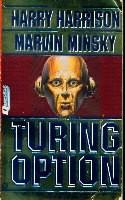
The Turing Option
by
Harry Harrison
and
Marvin Minsky
Published 2 Jan 1992
Bug-Off seems to know the behavior of every insect described in this book." Brian handed Ben a large volume entitled Handbook of Insect Ethology, 2018 Edition. "But how can Bug-Off tell which insect it is dealing with? They all look the same to me." "A good question—since pattern recognition has been the bane of AI from the very first day that research began. Industrial robots were never very good at recognizing and assembling parts if they weren't presented in a certain way. There are thousands of different signals involved in seeing a human face, then recognizing who it is. If you wrote a program for picking bugs off bushes you would have to program in every bug in the world, and size and rotation position and everything else.
…
" "A sample of what?" "A robot. This is a machine I have developed that I plan to show to some private investors." "Their names?" "I cannot reveal that. A confidential business matter." Fennelly made another note while Brian unlocked the box and opened the lid. "This is a basic model of an industrial robot. It can answer simple questions and take verbal input. That is how it is controlled." Even the garda by the door was interested in this, turning his head to look. The detective gazed down at the unassembled parts with a baffled expression. "Shall I turn it on?" Brian asked. "It can talk—but not very well."
…
"It can talk—but not very well." Sven would love that. He reached down and pressed one of the latches. "Can you hear me?" "Yes—I can—hear—you." A great job of ham acting, scratchy and monotone like a cheap toy. At least it caught the attention of the lawmen. "What are you?" "I am—an industrial—robot. I follow—instructions." "If that is enough, Lieutenant, I will turn it off." "Just a moment, if you please. What is that?" He pointed to the hollow plastic head. "To make the demonstration more interesting I occasionally mount that on the robot. It draws attention. If you don't mind I'll turn if off, the battery you know."

The Rent Is Too Damn High: What to Do About It, and Why It Matters More Than You Think
by
Matthew Yglesias
Published 6 Mar 2012
More diligent workers might be able to work at a faster-paced assembly line or dig coal out of the ground more quickly. At a visit to a factory in Germany, I saw a relatively small number of highly productive workers churn out an amazing quantity of solar panels with the assistance of a dazzling array of industrial robots. The real issue isn’t the quantity of widgets a worker makes, but the value of his output. The workers at a coal mine may be no better at pulling stuff out of the ground than the workers at a gold mine on the other side of the continent, but gold is more valuable than coal, so the gold miners are producing more output.

The Glass Cage: Automation and Us
by
Nicholas Carr
Published 28 Sep 2014
That’s not so. The total number of worldwide manufacturing jobs has been falling for years, even in industrial powerhouses like China, while overall manufacturing output has grown sharply.31 Machines are replacing factory workers faster than economic expansion creates new manufacturing positions. As industrial robots become cheaper and more adept, the gap between lost and added jobs will almost certainly widen. Even the news that companies like GE and Apple are bringing some manufacturing work back to the United States is bittersweet. One of the reasons the work is returning is that most of it can be done without human beings.
…
The dot-com bubble of the late 1990s, when for a few euphoric years riches flooded out of computer networks and into personal brokerage accounts, seemed to herald the start of a golden age of unlimited economic opportunity—what technology boosters dubbed a “long boom.” But the good times proved fleeting. Now we’re seeing that, as Norbert Wiener predicted, automation doesn’t play favorites. Computers are as good at analyzing symbols and otherwise parsing and managing information as they are at directing the moves of industrial robots. Even the people who operate complex computer systems are losing their jobs to software, as data centers, like factories, become increasingly automated. The vast server farms operated by companies like Google, Amazon, and Apple essentially run themselves. Thanks to virtualization, an engineering technique that uses software to replicate the functions of hardware components like servers, the facilities’ operations can be monitored and controlled by algorithms.

Exponential Organizations: Why New Organizations Are Ten Times Better, Faster, and Cheaper Than Yours (And What to Do About It)
by
Salim Ismail
and
Yuri van Geest
Published 17 Oct 2014
As former astronaut Dan Barry says of a toy drone helicopter available on Amazon for seventeen dollars, “It has a gyro in it that space shuttle engineers would have spent $100 million to have thirty years ago.” And that’s just biotech and robotics. We are also seeing plummeting costs across a host of other technologies, including the following: 3D printing Cost (averages) for equivalent functionality: $40,000 (2007) to $100 (2014) Scale: 400x in 7 years Industrial robots Cost: $500,000 (2008) to $22,000 (2013) Scale: 23x in 5 years Drones Cost: $100,000 (2007) to $700 (2013) Scale: 142x in 6 years Solar Cost: $30 per kWh (1984) to $0.16 per kWh (2014) Scale: 200x in 20 years Sensors (3D LIDAR sensor) Cost: $20,000 (2009) to $79 (2014) Scale: 250x in 5 years Biotech (DNA sequencing of one whole human DNA profile) Cost: $10 million (2007) to $1,000 (2014) Scale: 10,000x in 7 years Neurotech (BCI devices) Cost: $4,000 (2006) to $90 (2011) Scale: 44x in 5 years Medicine (full body scan) Cost: $10,000 (2000) to $500 (2014) Scale: 20x in 14 years In each of these domains, at least one aspect is being information-enabled, which then catapults it onto the bullet train of Moore’s Law as the pace of development accelerates into a doubling pattern.
…
The best part is that, thanks to the drastically lower costs of many accelerating technologies today, it doesn’t cost all that much to set up an advanced laboratory. As outlined in our Chapter One table on falling technology costs, ten years ago it cost $100,000 to establish a DNA synthesis lab; today that price is down to about $5,000. And while an industrial robot would set you back a million bucks a decade ago, the latest model of that same robot (Rethink Robotics’ Baxter robot) is now available for $22,000. In the realm of MEMS sensors, the outlay for accelerometers, microphones, gyroscopes, cameras and magnetometers has dropped 80 percent or more compared to five years ago, according to McKinsey.

The Autonomous Revolution: Reclaiming the Future We’ve Sold to Machines
by
William Davidow
and
Michael Malone
Published 18 Feb 2020
Brian, 29, 97–98, 103, 194 artificial intelligence: in behavior prediction and modification, 117 history and evolution of, 45–47 job loss with, 43, 110 in law enforcement, 115 nonmonetizable productivity of, 60 substitutional equivalences with, 15–16, 45 threats from, xi, xii, 4, 16, 43, 48–49, 110, 117 Assante, Michael, 174 authoritarianism, 115, 158–159, 161–162, 180, 193 automatons/automation: in airline industry, 72, 97–98, 103–104 benefits possible from, xii, 4–5, 7, 14, 19 economy impacted by, 12–13 in financial industry, 10, 43, 77–78, 81–83, 102 government service and, 105 health care impacts with, 14, 48 human knowledge pursuit impacted by, xi, 16 job displacement predictions with, 98, 105–106 job market impacts from, 7, 11, 12, 31, 34, 43, 47–49, 73, 77–78, 95–106, 108, 187–189 vehicle, 84, 99–102 ZEVs created with, 12, 48–49 automobile industry: autonomous vehicle evolution and impact on, 84, 99–102 car-sharing impact on, 70, 84–86, 100, 101–102 Ford Motor Company production in, xii, 22, 33, 53, 103 horse-related industry impacted by, 54 Industrial Revolution role of, 53–54, 152 industrial robots and early use in, xii infrastructures as result of, 107–108 innovations leading up to, 52–53 social phase change with, 32, 53–54 Autonomous Economy, 60–61, 96–98 Autonomous Revolution: abundance available with, 7, 14, 67, 94, 188, 194–195 action-oriented approach to, 7, 14, 17, 19, 20, 94, 107, 180 Agricultural Revolution contrasted with, 25–26 cultural norms in adaptation to, 151, 153–157, 159 defining and key factors of, 6, 11, 34, 58, 95 early impacts of, 7, 11, 12 optimism and, 193–195 rate of change in, 13, 17–18, 34, 37, 192–193 recommendations for offsetting negative impacts of, 107–112 substitutional equivalence forms and examples of, 15–17, 42–50.
…
See cyber currencies cultural lag, 38, 181, 187, 189–190, 192 cultural norms: of Agricultural Revolution, 151–152 Autonomous Revolution’s requirement of new, 151, 153–157, 159 of Industrial Revolution, 152–153, 182–183 customers/consumers: algorithmic prisons for, 126, 127 data collection protections for, 127–128 industrial robots in relation to, xii information equivalences for, 43–44 as products, 120–123. See also retail sector cybercrime and security, 132, 153–154 credit card, 74–76 cyber currencies, 78–80, 177–178 evolution of, 172–173 fake news classification as, 169–170 financial, 39–40, 75–76, 78–80, 171–172, 177–178 global effort needed for, 179 government response to, 172–176, 179 public utilities threat with, 173, 174 response rate relation to rate of, 171–172 Russia-based, 174 cyber currencies, 10, 83 blockchain technology of, 79, 80 electricity and miners involved with, 176 governance rules and systems, 176–178 government regulation needed for, 176–177 security with, 78–80, 177–178 as spatial equivalence, 16 cyber weapons, 16, 172–173, 174, 176 Daimler, Gottlieb, 53 Data and Goliath (Schneier), 127 Data Protection Directive, 129 data tracking/collection: advertising revenues’ role in, 89, 90, 120–123 algorithmic prisons with, 13, 114, 123–128 behavior manipulation in, 117, 121, 123 consumer protections against, 127–128 cookies’ role in, 89, 116, 117–118, 128 of credit rating agencies, 118–119 evolution and factors behind abuses of, 116–118 freemium business model role in, 121–123, 129–130 government agencies purchasing, 119, 131 information fiduciaries as protection for, 129–131 laws and regulations on, 128–130 liberty threats to and factors with, 13, 116–117, 123–128 privacy threat evolution with, 116–119 from social networking sites, 116, 118 transparency of, 127 Death and Life of Great American Cities, The (Jacobs), 109 Deep Blue, 46–47 delivery services, 102 democracy: authoritarianism threat to, 158–159 collective identity of citizens key to, 163, 166, 168 income inequality in relation to, 163–164 social media/networking threats to, 7, 18, 168–169 depression, 147–148, 166 Dichter, Ernest, 135 discrimination, 162–163, 165–166 displacement: business, 71, 72–73, 99 job, with job creation historically, 51–54, 106 job, without new job creation, 43, 51, 60–64, 98–99, 105–106 Distracted Minds (Gazzaley), 155 Echo, 119 economic policy and metrics: Depression-era, 67, 160 on monetizable productivity, 58–59 non-monetizable productivity in relation to, 52, 58–59, 66, 67, 68 unemployment rates in relation to, 106–107 “Economic Possibilities for Our Grandchildren” (Keynes), 187–189 economy: automation impacts on, 12–13 Autonomous, 60–61, 96–98 entrepreneurship, 110 gig, 7, 34, 63, 84, 85, 94 Second Economy contrasted with traditional, 97–98, 103 sharing, 70, 83–87, 100, 101–102 social empathy decline with decline of, 164–165 traditional compared to Autonomous, 96 elder care, 111 election tampering, 89, 167, 180, 186 electricity: cyber currency mining use of, 176 invention of, 29, 182 ELIZA, 46 Elsevier, Reed, 119 email, 60–61, 150 emotion detection technology, 115–116 empires, rise and fall of, 6–7, 24–25 End of History and the Last Man, The (Fukuyama), 158 Enlightenment, xii, 2, 22, 152 entrepreneurship, rates of, 110 Epic of Gilgamesh, The, 24, 183–184, 185 Equifax, 75–76, 118, 126, 130 Estonia, 174 ethnicity.

Skyjack: The Hunt for D. B. Cooper
by
Geoffrey Gray
Published 8 Aug 2011
Over the years, they’ve included: a doggy-proof latch for dog cages; a machine that makes a gizmo to mix paint; an air compressor that sprays paint on objects like gumballs; several recreational objects built from fiberglass, like hang gliders, water skis, canoes. The industrial robot age, in the early eighties, should have been his moment. To learn about advanced computer systems, Tom crashed a robot convention like an undercover agent. Pretending to be a buyer, he asked salespeople how the robots worked and recorded their answers with a hidden tape recorder. He transcribed the conversations and built his own industrial robot in his mother’s basement. But before his company went public, his investors put all their money in handheld breathalyzers.

The Capitalist Manifesto
by
Johan Norberg
Published 14 Jun 2023
This means that even if strategic industrial policy were to bring the factories home, it would not bring the factory jobs home because they were not taken by the Chinese and Mexicans but by R2-D2 and C-3PO. The Chinese and Mexicans are also acquiring more and more robots. Since 2010, Chinese companies have increased the number of industrial robots from 50,000 to 800,000.4 That’s why they can be more productive and competitive. This does not mean that we will run out of jobs – just like the spinning machine, mechanical looms, the steam engine, the car, the computer, the ATM and other innovations didn’t kill all jobs. Instead, automation creates complementary industries and frees up purchasing power to hire more people.
…
This applies to many forms of manufacturing work but also to clerks responsible for registers and warehouses or bank and postal tellers who handled invoices or received, counted and handed over banknotes. These were jobs that required precision and accuracy but not improvisation and social intelligence – just the kind of work industrial robots, computers and ATMs are good at. Yet this does not mean the total number of jobs declines. The money we previously spent on this type of work remains and is now used to buy other types of work in what is sometimes called ‘the new middle-class jobs’, such as in transport, healthcare, education, entertainment and culture.

Physics of the Future: How Science Will Shape Human Destiny and Our Daily Lives by the Year 2100
by
Michio Kaku
Published 15 Mar 2011
We are still at the stage where Mother Nature’s lowliest creatures can outsmart our most intelligent robots. EXPERT SYSTEMS Today, many people have simple robots in their homes that can vacuum their carpets. There are also robot security guards patrolling buildings at night, robot guides, and robot factory workers. In 2006, it was estimated that there were 950,000 industrial robots and 3,540,000 service robots working in homes and buildings. But in the coming decades, the field of robotics may blossom in several directions. But these robots won’t look like the ones of science fiction. The greatest impact may be felt in what are called expert systems, software programs that have encoded in them the wisdom and experience of a human being.
…
The Japanese have also excelled at producing robots that can interact socially with humans. In Nagoya, there is the robot chef that can create a standard fast-food dinner in a few minutes. You simply punch in what you want from a menu and the robot chef produces your meal in front of you. Built by Aisei, an industrial robotics company, this robot can cook noodles in 1 minute and 40 seconds and can serve 80 bowls on a busy day. The robot chef looks very much like ones on the automobile assembly lines in Detroit. You have two large mechanical arms, which are precisely programmed to move in a certain sequence. Instead of screwing and welding metal in a factory, however, these robotic fingers grab ingredients from a series of bowls containing dressing, meat, flour, sauces, spices, etc.
…
Abrahams, “A World Without Work,” in Denning and Metcalfe, p. 136. 6 “Today, you can buy chess programs for $49”: Richard Strozzi Heckler, “Somatics in Cyberspace,” in Denning, p. 281. 7 “To this day, AI programs”: Sheffield et al., p. 30. 8 “100 million things, about the number a typical person knows”: Kurzweil, p. 267. 9 In 2006, it was estimated that there were 950,000 industrial robots: World Robotics 2007, IFR Statistical Department (Frankfurt: International Federation of Robotics, 2007). 10 “Discovering how the brain works”: Fred Hapgood, “Reverse Engineering the Brain,” Technology Review, July 11, 2006, www.technologyreview.com/read_article.aspx?id=17111. 11 He was in a semiconscious state for several weeks: John M.

The Zero Marginal Cost Society: The Internet of Things, the Collaborative Commons, and the Eclipse of Capitalism
by
Jeremy Rifkin
Published 31 Mar 2014
John Markoff, “Skilled Work, without the Worker,” New York Times, August 18, 2012, http://www.nytimes.com/2012/08/19/business/new-wave-of-adept-robots-is-changing-global-indus try.html?pagewanted=all&_r=0 (accessed July 1, 2013). 16. Ibid. 17. “World Robotics 2012 Industrial Robots,” International Federation of Robotics, http://www.ifr .org/industrial-robots/statistics/ (accessed May 26, 2013). 18. Russell Roberts, “Obama vs. ATMs: Why Technology Doesn’t Destroy Jobs,” Wall Street Journal, June 22, 2011, http://online.wsj.com/article/SB10001424052702304070104576399704275 939640.html (accessed May 26, 2013). 19.
…
The ground plastic is then fed into a hopper and into a barrel where it is melted down by a heating coil. The molten plastic then travels through nozzles and is sent through sizing rollers to create plastic filaments which are stored on a spool for printing. An assembled Filabot costs $649.18 A Dutch student, Dirk Vander Kooij, reprogrammed an industrial robot to print customized furniture in a continuous line using plastic material from old refrigerators. The robot can print out a chair in multiple colors and designs in less than three hours. His 3D printer can turn out 4,000 customized chairs a year.19 Other printers of furniture are using recycled glass, wood, fabrics, ceramics, and even stainless steel as feedstock, demonstrating the versatility in recycled feedstocks that can be employed in the new infofacturing process.
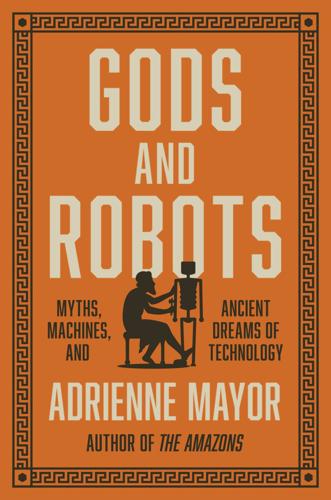
Gods and Robots: Myths, Machines, and Ancient Dreams of Technology
by
Adrienne Mayor
Published 27 Nov 2018
Among the thaumata, “wonders,” were tripodes de automatoi and automated cupbearers that attended royal banquets. As many modern historians have remarked, the self-moving tripods serving the Olympian gods call to mind modern self-propelled, laborsaving machines, driverless cars, and military-industrial robots. Homer’s myth reminds us that the impulse to “automate” is extremely ancient.20 Wheeled tripods do not appear in surviving ancient Greek art, and archaeological examples are unknown. However, many ornately decorated four-wheeled bronze carts for transporting cauldrons have been excavated in Mediterranean sites, dating to the Bronze Age (thirteenth to twelfth century BC).
…
“If every tool could perform its own work when ordered to do so or in anticipation of the need, like the statues of Daedalus or the tripods of Hephaestus, which the poet tells us could of their own accord move into the assembly of the gods,” and “if in the same manner, shuttles could weave and picks could play kitharas (stringed lyres) by themselves, then craftsmen would have no need of servants and masters would have no need of slaves.”39 Today, the ancient speculative fantasy that machines could free many workers from drudgery and replace slaves has become a commonplace reality in many parts of the world. Ironically, however, industrial robotics technologies now threaten to abolish human wage earners’ livelihoods, leaving masses of idle, unpaid workers. Meanwhile, dystopian science fictions paint nightmarish scenarios of a new, rising “servile class” of automaton-slaves that ultimately will rebel. The idea that creations of superior masters might revolt against their makers is also quite ancient.

The Meritocracy Trap: How America's Foundational Myth Feeds Inequality, Dismantles the Middle Class, and Devours the Elite
by
Daniel Markovits
Published 14 Sep 2019
See also Waters and Inagaki, “Investment Surge,” reporting study by economic research group IDC. in Europe and Asia: See International Federation of Robotics, World Robotics Report 2016, September 29, 2016, Figure 2.9, https://ifr.org/ifr-press-releases/news/world-robotics-report-2016, and James Carroll, “Industrial Robots in the United States on the Rise,” Vision Systems Design, September 6, 2016, www.vision-systems.com/articles/2016/12/industrial-robots-in-the-united-states-on-the-rise.html. since the late 1970s: Total manufacturing employment peaked in the late 1970s, when roughly 19.5 million Americans held manufacturing jobs. See, e.g., Martin Neil Baily and Barry P.
…
Over the past forty years, computers, robots, and other new technologies have changed how goods are made and services delivered. These disruptive technologies (invented by interested innovators and tailored to suit skills that meritocratic education makes newly available) shift the center of production away from mid-skilled and toward super-skilled labor. Automated industrial robots, for example, replace mid-skilled manufacturing workers with super-skilled workers who design and program the robots. Innovations in distribution, warehousing, and e-commerce displace middle-class independent merchants with subordinate Walmart greeters and Amazon warehouse workers at the bottom, and super-rich owners of megastores—including the world’s richest family (the Waltons of Walmart) and the world’s richest person (Jeff Bezos of Amazon)—at the very top.
…
Manning, “Dean’s Welcome,” Harvard Law School, 2018, accessed June 6, 2018, https://hls.harvard.edu/about/deans-welcome/. “quite simply, the finest”: Robert Post, “Yale Law School Graduation Speech,” May 18, 2015, accessed June 6, 2018, https://law.yale.edu/system/files/area/department/studentaffairs/document/postspeech.pdf. Automated industrial robots: See Chapter 6. Innovations in distribution: See Chapter 6. Derivatives and other new financial technologies: See Chapter 6. And new management techniques: See Chapter 6. “there are . . . approximately”: American Bar Association Committee on Economics of Law Practice, The Lawyer’s Handbook (St.

Trust: The Social Virtue and the Creation of Prosperity
by
Francis Fukuyama
Published 1 Jan 1995
Despite the large aggregate output, the production runs of the Emilian machine tool industry tend to be very low, often amounting to a single, custom- designed machine.17 Other highly competitive products from the Terza Italia include textiles and apparel, furniture, farm machinery, other sorts of advanced capital goods such as shoemaking equipment and industrial robots, high-quality ceramics, and ceramic tile. This confirms that there is no necessary connection between small-scale industry and technological backwardness. Italy is the world’s third-largest producer of industrial robots, and yet a third of that industry’s output is produced by enterprises with fewer than fifty employees.18 Italy has in many ways become the center of the European fashion industry, with many labels shifting there from France in the 1960s and 1970s.
…
CHAPTER 10 Italian Confucianism Over the past decade and a half, one of the most interesting new economic phenomena to be studied by business schools and management experts has been small-scale industry in central Italy. Italy, which industrialized late and has usually been regarded as one of Western Europe’s economic backwaters, saw certain regions explode in the 1970s and 1980s with the emergence of networks of small businesses making everything from textiles and designer clothes to machine tools and industrial robots. Some enthusiasts of small-scale industrialization have argued that the Italian model represents an entirely new paradigm of industrial production, one that can be exported to other countries. Social capital and culture give us considerable insight into the reasons for this miniature economic renaissance.
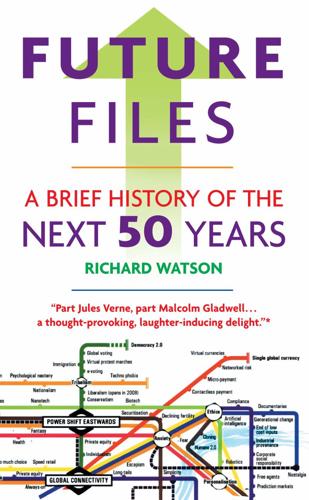
Future Files: A Brief History of the Next 50 Years
by
Richard Watson
Published 1 Jan 2008
First, the cost of computing power (processing and storage) is dropping fast. Second, distributed computing, voice and visual-recognition technologies and wireless broadband connectivity are similarly becoming cheaper and more available. Personal robots will be cleaning floors, dispensing medicine and keeping an eye open for intruders, while industrial robots will operate dangerous machinery and handle hazardous materials. On a smaller scale, robots could carry our bags from the supermarket, work as guide dogs for the visually impaired, or replace care workers in hospitals or nursing homes. Whether a machine will ever fully replace human or animal contact is a big question, to which most people currently answer no.
…
A 311 Index ‘O’ Garage 170 3D printers 56 accelerated education 57 accidents 159, 161–6, 173, 246 ACNielsen 126 adaptive cruise control 165 Adeg Aktiv 50+ 208 advertising 115–16, 117, 119 Africa 70, 89, 129, 174, 221, 245, 270, 275, 290, 301 ageing 1, 10, 54, 69, 93, 139, 147–8, 164, 188, 202, 208, 221, 228–9, 237, 239, 251, 261, 292, 295, 297–8 airborne networks 56 airlines 272 allergies 196–7, 234, 236 Alliance Against Urban 4x4s 171 alternative energy 173 alternative futures viii alternative medicine 244–5 alternative technology 151 amateur production 111–12 Amazon 32, 113–14, 121 American Apparel 207 American Express 127–8 androids 55 Angola 77 anti-ageing drugs 231, 237 anti-ageing foods 188 anti-ageing surgery 2, 237 antibiotics 251 anxiety 10, 16, 30, 32, 36, 37, 128, 149, 179, 184, 197, 199, 225, 228, 243, 251, 252, 256, 263, 283–4, 295–6, 300, 301, 305 Apple 61, 115, 121, 130, 137–8, 157 Appleyard, Bryan 79 Argentina 210 Armamark Corporation 193 artificial intelliegence 22, 40, 44, 82 131, 275, 285–6, 297, 300 Asda 136, 137 Asia 11, 70, 78, 89, 129, 150, 174, 221, 280, 290, 292 Asimov, Isaac 44 Asos.com 216 asthma 235 auditory display software 29 Australia 20–21, 72–3, 76, 92, 121, 145, 196, 242, 246, 250, 270, 282 Austria 208 authenticity 32, 37, 179, 194, 203–11 authoritarianism 94 automated publishing machine (APM) 114 automation 292 automotive industry 154–77 B&Q 279 baby boomers 41, 208 bacterial factories 56 Bahney, Anna 145 Bahrain 2 baking 27, 179, 195, 199 Bangladesh 2 bank accounts, body double 132 banknotes 29, 128 banks 22, 123, 135–8, 150, 151 virtual 134 Barnes and Noble 114 bartering 151 BBC 25, 119 Become 207 Belgium 238 313 314 benriya 28 Berlusconi, Silvio 92 Best Buy 223 biofuel 64 biomechatronics 56 biometric identification 28, 35, 52, 68, 88, 132 bionic body parts 55 Biosphere Expeditions 259 biotechnology 40, 300 blended families 20 blogs 103, 107, 109, 120 Blurb 113 BMW 289 board games 225 body double bank accounts 132 body parts bionic 55 replacement 2, 188, 228 Bolivia 73 Bollywood 111 books 29, 105, 111–25 boomerang kids 145 brain transplants 231 brain-enhancing foods 188 Brazil 2, 84, 89, 173, 247, 254, 270, 290 Burger King 184 business 13, 275–92 Bust-Up 189 busyness 27, 195, 277 Calvin, Bill 45 Canada 63, 78, 240 cancer 251 car sharing 160, 169, 176 carbon credits 173 carbon footprints 255 carbon taxes 76, 172 cars classic 168–9 driverless 154–5 flying 156, 165 hydrogen-powered 12, 31, 157, 173 pay-as-you-go 167–8 self-driving 165 cascading failure 28 cash 126–7, 205 cellphone payments 129, 213 cellphones 3, 25, 35, 51, 53, 120, 121, FUTURE FILES 129, 156, 161, 251 chicken, Christian 192 childcare robots 57 childhood 27, 33–4, 82–3 children’s database 86 CHIME nations (China, India, Middle East) 2, 10, 81 China 2, 10, 11, 69–72, 75–81, 88, 92–3, 125, 137, 139–40, 142, 151, 163, 174–5, 176, 200, 222, 228, 247, 260, 270–71, 275, 279, 295, 302 choice 186–7 Christian chicken 192 Christianity, muscular 16, 73 Chrysler 176 cinema 110–11, 120 Citibank 29, 128 citizen journalism 103–4, 108 City Car Club 168 Clarke, Arthur C. 58–9 Clarke’s 187 classic cars 168–9 climate change 4, 11, 37, 43, 59, 64, 68, 74, 77–9, 93, 150, 155, 254, 257, 264, 298–9 climate-controlled buildings 254, 264 cloning 38 human 23, 249 CNN 119 coal 176 Coca-Cola 78, 222–3 co-creation 111–12, 119 coins 29, 128, 129 collective intelligence 45–6 Collins, Jim 288 comfort eating 200 Comme des Garçons 216 community 36 compassion 120 competition in financial services 124–5 low-cost 292 computers disposable 56 intelligent 23, 43 organic 56 wearable 56, 302 computing 3, 33, 43, 48, 82 connectivity 3, 10, 11, 15, 91, 120, Index 233, 261, 275–6, 281, 292, 297, 299 conscientious objection taxation 86 contactless payments 123, 150 continuous partial attention 53 control 36, 151, 225 convenience 123, 178–9, 184, 189, 212, 223, 224 Coren, Stanley 246 corporate social responsibility 276, 282, 298 cosmetic neurology 250 Costa Rica 247 Craig’s List 102 creativity 11, 286; see also innovation credit cards 141–3, 150 crime 86–9 forecasting 86–7 gene 57, 86 Croatia 200 Crowdstorm 207 Cuba 75 cultural holidays 259, 273 culture 11, 17–37 currency, global 127, 151 customization 56, 169, 221–2, 260 cyberterrorism 65, 88–9 Cyc 45 cynicism 37 DayJet 262 death 237–9 debt 123–4, 140–44, 150 defense 63, 86 deflation 139 democracy 94 democratization of media 104, 108, 113 demographics 1, 10, 21, 69, 82, 93, 202, 276, 279–81, 292, 297–8 Denmark 245 department stores 214 deregulation 11, 3 Destiny Health 149 detox 200 Detroit Project 171 diagnosis 232 remote 228 digital downloads 121 evaporation 25 315 immortality 24–5 instant gratification syndrome 202 Maoism 47 money 12, 29, 123, 126–7, 129, 132, 138, 150, 191 nomads 20, 283 plasters 241 privacy 25, 97, 108 readers 121 digitalization 37, 292 Dinner by Design 185 dirt holidays 236 discount retailers 224 Discovery Health 149 diseases 2, 228 disintegrators 57 Disney 118–19 disposable computers 56 divorce 33, 85 DNA 56–7, 182 database 86 testing, compulsory 86 do-it-yourself dinner shops 185–6 dolls 24 doorbells 32 downshifters 20 Dream Dinners 185 dream fulfillment 148 dressmaking 225 drink 178–200 driverless cars 154–5 drugs anti-ageing 231, 237 performance-improving 284–5 Dubai 264, 267, 273 dynamic pricing 260 E Ink 115 e-action 65 Earthwatch 259 Eastern Europe 290 eBay 207 e-books 29, 37, 60, 114, 115, 302 eco-luxe resorts 272 economic collapse 2, 4, 36, 72, 221, 295 economic protectionism 10, 15, 72, 298 economy travel 272 316 Ecuador 73 education 15, 18, 82–5, 297 accelerated 57 lifelong learning 290 Egypt 2 electricity shortages 301 electronic camouflage 56 electronic surveillance 35 Elephant 244 email 18–19, 25, 53–4, 108 embedded intelligence 53, 154 EMF radiation 251 emotional capacity of robots 40, 60 enclosed resorts 273 energy 72, 75, 93 alternative 173 nuclear 74 solar 74 wind 74 enhancement surgery 249 entertainment 34, 121 environment 4, 10, 11, 14, 64, 75–6, 83, 93, 155, 171, 173, 183, 199, 219–20, 252, 256–7, 271, 292, 301 epigenetics 57 escapism 16, 32–3, 121 Estonia 85, 89 e-tagging 129–30 e-therapy 242 ethical bankruptcy 35 ethical investing 281 ethical tourism 259 ethics 22, 24, 41, 53, 78, 86, 132, 152, 194, 203, 213, 232, 238, 249–50, 258, 276, 281–2, 298–9 eugenics 252 Europe 11, 70, 72, 81, 91, 141, 150, 174–5, 182, 190, 192, 209 European Union 15, 139 euthanasia 238, 251 Everquest 33 e-voting 65 experience 224 extended financial families 144 extinction timeline 9 Facebook 37, 97, 107 face-recognition doors 57 fakes 32 family 36, 37 FUTURE FILES family loans 145 fantasy-related industries 32 farmaceuticals 179, 182 fast food 178, 183–4 fat taxes 190 fear 10, 34, 36, 38, 68, 150, 151, 305 female-only spaces 210–11, 257 feminization 84 financial crisis 38, 150–51, 223, 226, 301 financial services 123–53, 252 trends 123–5 fish farming 181 fixed-price eating 200 flashpacking 273 flat-tax system 85–6 Florida, Richard 36, 286, 292 flying cars 165 food 69–70, 72, 78–9, 162, 178–201 food anti-ageing 188 brain-enhancing 188 fast 178, 183–4 functional 179 growing your own 179, 192, 195 history 190–92 passports 200 slow 178, 193 tourism 273 trends 178–80 FoodExpert ID 182 food-miles 178, 193, 220 Ford 169, 176, 213, 279–80 forecasting 49 crime 86–7 war 49 Forrester Research 132 fractional ownership 168, 175, 176, 225 France 103, 147, 170, 189, 198, 267 Friedman, Thomas 278–9, 292 FriendFinder 32 Friends Reunited 22 frugality 224 functional food 179 Furedi, Frank 68 gaming 32–3, 70, 97, 111–12, 117, 130, 166, 262 Gap 217 Index gardening 27, 148 gas 176 GE Money 138, 145 gendered medicine 244–5 gene silencing 231 gene, crime 86 General Motors 157, 165 Generation X 41, 281 Generation Y 37, 41, 97, 106, 138, 141–2, 144, 202, 208, 276, 281, 292 generational power shifts 292 Genes Reunited 35 genetic enhancement 40, 48 history 35 modification 31, 182 testing 221 genetics 3, 10, 45, 251–2 genomic medicine 231 Germany 73, 147, 160, 170, 204–5, 216–17, 261, 267, 279, 291 Gimzewski, James 232 glamping 273 global currency 127 global warming 4, 47, 77, 93, 193, 234 globalization 3, 10, 15–16, 36–7, 63–7, 72–3, 75, 81–2, 88, 100, 125, 139, 143, 146, 170, 183, 189, 193–5, 221, 224, 226, 233–4, 247–8, 263, 275, 278–80, 292, 296, 299 GM 176 Google 22, 61, 121, 137, 293 gout 235 government 14, 18, 36, 63–95, 151 GPS 3, 15, 26, 50, 88, 138, 148, 209, 237, 262, 283 Grameen Bank 135 gravity tubes 57 green taxes 76 Greenpeace 172 GRIN technologies (genetics, robotics, internet, nanotechnology) 3, 10, 11 growing your own food 178, 192, 195 Gucci 221 Gulf States 125, 260, 268 H&M 217 habitual shopping 212 Handy, Charles 278 317 Happily 210 happiness 63–4, 71–2, 146, 260 health 15, 82, 178–9, 199 health monitoring 232, 236, 241 healthcare 2, 136, 144, 147–8, 154, 178–9, 183–4, 189–91, 228–53, 298; see also medicine trends 214–1534–7 Heinberg, Richard 74 Helm, Dieter 77 Heritage Foods 195 hikikomori 18 hive mind 45 holidays 31, 119; see also tourism holidays at home 255 cultural 259 dirt 236 Hollywood 33, 111–12 holographic displays 56 Home Equity Share 145 home baking 225 home-based microgeneration 64 home brewing 225 honesty 152 Hong Kong 267 hospitals 228, 241–3, 266 at home 228, 238, 240–42 hotels 19, 267 sleep 266 human cloning 23, 249 Hungary 247 hybrid humans 22 hydrogen power 64 hydrogen-powered cars 12, 31, 157, 173 Hyperactive Technologies 184 Hyundai 170 IBM 293 identities, multiple 35, 52 identity 64, 71 identity theft 88, 132 identity verification, two-way 132 immigration 151–2, 302 India 2, 10, 11, 70–72, 76, 78–9, 81, 92, 111, 125, 135, 139, 163, 174–5, 176, 247, 249–50, 254, 260, 270, 275, 279, 302 indirect taxation 86 318 individualism 36 Indonesia 2, 174 industrial robots 42 infinite content 96–7 inflation 151 information overlead 97, 120, 159, 285; see also too much information innovation 64, 81–2, 100, 175, 222, 238, 269, 277, 286–8, 291, 297, 299 innovation timeline 8 instant gratification 213 insurance 123, 138, 147–50, 154, 167, 191, 236, 250 pay-as-you-go 167 weather 264 intelligence 11 embedded 53, 154 implants 229 intelligent computers 23, 43 intelligent night vision 162–3 interaction, physical 22, 25, 97, 110, 118, 133–4, 215, 228, 243, 276, 304 interactive media 97, 105 intergenerational mortgages 140, 144–5 intermediaries 123, 135 internet 3, 10, 11, 17–18, 25, 68, 103, 108, 115–17, 124, 156, 240–41, 261, 270, 283, 289, 305 failure 301 impact on politics 93–4 sensory 56 interruption science 53 iPills 240 Iran 2, 69 Ishiguro, Hiroshi 55 Islamic fanaticism 16 Italy 92, 170, 198–9 iTunes 115, 130; see also Apple Japan 1, 18, 26, 28–9, 54–5, 63, 80–81, 114, 121, 128–9, 132, 140, 144–5, 147, 174, 186, 189, 192, 196, 198, 200, 209–10, 223, 240, 260, 264, 271, 279, 291 jetpacks 60 job security 292 journalism 96, 118 journalism, citizen 103–4, 107 joy-makers 57 FUTURE FILES Kaboodle 207 Kapor, Mitchell 45 Kenya 128 keys 28–9 Kindle 60, 121 Kramer, Peter 284 Kuhn, Thomas 281 Kurzweil, Ray 45 Kuwait 2 labor migration 290–91 labor shortages 3, 80–81, 289–90 Lanier, Jaron 47 laser shopping 212 leisure sickness 238 Let’s Dish 185 Lexus 157 libraries 121 Libya 73 life-caching 24, 107–8 lighting 158, 160 Like.com 216 limb farms 249 limited editions 216–17 live events 98, 110, 304 localization 10, 15–16, 116, 128, 170, 178, 189, 193, 195, 215, 220, 222–3, 224, 226, 255, 270, 297 location tagging 88 location-based marketing 116 longevity 188–9, 202 Longman, Philip 71 low cost 202, 219–22 luxury 202, 221, 225, 256, 260, 262, 265–6, 272 machinamas 112 machine-to-machine communication 56 marketing 115–16 location-based 116 now 116 prediction 116 Marks & Spencer 210 Maslow, Abraham 305–6 masstigue 223 materialism 37 Mayo Clinic 243 McDonald’s 130, 168, 180, 184 McKinsey 287 Index meaning, search for 16, 259, 282, 290, 305–6 MECU 132 media 96–122 democratization of 104, 108, 115 trends 96–8 medical outsourcing 247–8 medical tourism 2, 229, 247 medicine 188, 228–53; see also healthcare alternative 243–4 gendered 244–5 genomic 231 memory 229, 232, 239–40 memory loss 47 memory pills 231, 240 memory recovery 2, 228–9, 239 memory removal 29–30, 29, 240 Menicon 240 mental health 199 Meow Mix 216 Merriman, Jon 126 metabolomics 56 meta-materials 56 Metro 204–5 Mexico 2 micromedia 101 micro-payments 130, 150 Microsoft 137, 147, 293 Middle East 10, 11, 70, 81, 89, 119, 125, 129, 139, 174–5, 268, 301 migration 3, 11, 69–70, 78, 82, 234, 275, 290–91 boomerang 20 labor 290–91 Migros 215 military recruitment 69 military vehicles 158–9 mind-control toys 38 mindwipes 57 Mitsubishi 198, 279 mobile payments 123, 150 Modafinil 232 molecular biology 231 monetization 118 money 123–52 digital 12, 29, 123, 126–7, 129, 132, 138, 150, 191 monitoring, remote 154, 168, 228, 242 monolines 135, 137 319 mood sensitivity 41, 49, 154, 158, 164, 187–8 Morgan Stanley 127 mortality bonds 148 Mozilla Corp. 289 M-PESA 129 MTV 103 multigenerational families 20 multiple identities 35, 52 Murdoch, Rupert 109 muscular Christianity 16, 73 music industry 121 My-Food-Phone 242 MySpace 22, 25, 37, 46, 97, 107, 113 N11 nations (Bangladesh, Egypt, Indonesia, Iran, South Korea, Mexico, Nigeria, Pakistan, Philippines, Turkey, Vietnam) 2 nanoelectronics 56 nanomedicine 32 nanotechnology 3, 10, 23, 40, 44–5, 50, 157, 183, 232, 243, 286, 298 napcaps 56 narrowcasting 109 NASA 25, 53 nationalism 16, 70, 72–3, 139, 183, 298, 302 natural disasters 301 natural resources 2, 4, 11, 64, 298–9 Nearbynow 223 Nestlé 195 Netherlands 238 NetIntelligence 283 networkcar.com 154 networks 28, 166, 288 airborne 56 neural nets 49 neuronic whips 57 neuroscience 33, 48 Neville, Richard 58–9 New Economics Foundation 171 New Zealand 265, 269 newspapers 29, 102–9, 117, 119, 120 Nigeria 2, 73 Nike 23 nimbyism 63 no-frills 224 Nokia 61, 105 Norelift 189 320 Northern Rock 139–40 Norwich Union 167 nostalgia 16, 31–2, 51, 169–70, 179, 183, 199, 203, 225, 303 now marketing 116 nuclear annihilation 10, 91 nuclear energy 74 nutraceuticals 179, 182 Obama, Barack 92–3 obesity 75, 190–92, 199, 250–51 oceanic thermal converters 57 oil 69, 72–3, 93, 151, 174, 176, 272, 273, 301 Oman 2, 270 online relationships 38 organic computers 56 organic food 200, 226 osteoporosis 235 outsourcing 224, 292 Pakistan 2 pandemics 4, 10, 16, 59, 72, 128, 232, 234, 272, 295–7, 301 paper 37 parasite singles 145 passwords 52 pictorial 52 pathogens 233 patient simulators 247 patina 31 patriotism 63, 67, 299 pay-as-you-go cars 167–8 pay-as-you-go insurance 167 payments cellphone 129, 213 contactless 123, 150 micro- 130, 150 mobile 123, 150 pre- 123, 150 PayPal 124, 137 Pearson, Ian 44 performance-improving drugs 284–5 personal restraint 36 personal robots 42 personalization 19, 26, 56, 96–8, 100, 102–3, 106, 108–9, 120, 138, 149, 183, 205–6, 223, 244–5, 262, 267, 269 Peru 73 FUTURE FILES Peters, Tom 280 Pharmaca 244 pharmaceuticals 2, 33, 228, 237 Philippines 2, 212, 290 Philips 114 Philips, Michael 232–3 photographs 108 physical interaction 22, 25, 97, 110, 118, 133–4, 215, 228, 243, 276, 304 physicalization 96–7, 101–2, 106, 110, 120 pictorial passwords 52 piggy banks 151 Pink, Daniel 285 plagiarism 83 polarization 15–16, 285 politics 37, 63–95, 151–2 regional 63 trends 63–5 pop-up retail 216, 224 pornography 31 portability 178, 183–4 power shift eastwards 2, 10–11, 81, 252 Prada 205–6, 216 precision agriculture 181–2 precision healthcare 234–7 prediction marketing 116 predictions 37, 301–2 premiumization 223 pre-payments 123, 150 privacy 3, 15, 41, 50, 88, 154, 165–7, 205, 236, 249, 285, 295 digital 25, 97, 108 Procter & Gamble 105, 280 product sourcing 224 Prosper 124, 135 protectionism 67, 139, 156, 220, 226, 301 economic 10, 15, 72, 299 provenance 178, 193, 226 proximity indicators 32 PruHealth 149 psychological neoteny 52 public ownership 92 public transport 171 purposeful shopping 212 Qatar 2 quality 96–7, 98, 101, 109 Index quantum mechanics 56 quantum wires 56 quiet materials 56 radiation, EMF 251 radio 117 randominoes 57 ranking 34, 83, 109, 116, 134, 207 Ranking Ranqueen 186 reality mining 51 Really Cool Foods 185 rebalancing 37 recession 139–40, 202, 222 recognition 36, 304 refrigerators 197–8 refuge 121 regeneration 233 regional food 200 regional politics 63 regionality 178, 192–3 regulation 124, 137, 143 REI 207 Reid, Morris 90 relationships, online 38 religion 16, 58 remote diagnosis 228 remote monitoring 154, 168, 228, 242 renting 225 reputation 34–5 resistance to technology 51 resorts, enclosed 273 resource shortages 11, 15, 146, 155, 178, 194, 254, 300 resources, natural 2, 4, 11, 64, 73–4, 143, 298–9 respect 36, 304 restaurants 186–8 retail 20–21, 202–27, 298 pop-up 216, 224 stealth 215 theater 214 trends 202–3 Revkin, Andy 77 RFID 3, 24, 50, 121, 126, 149, 182, 185, 192, 196, 205 rickets 232 risk 15, 124, 134, 138, 141, 149–50, 162, 167, 172, 191, 265, 299–300, 303 Ritalin 232 321 road pricing 166 Robertson, Peter 49 robogoats 55 robot department store 209 Robot Rules 44 robotic assistants 54, 206 concierges 268 financial advisers 131–2 lobsters 55 pest control 57 soldiers 41, 55, 60 surgery 35, 41, 249 robotics 3, 10, 41, 44–5, 60, 238, 275, 285–6, 292, 297 robots 41, 54–5, 131, 237, 249 childcare 57 emotional capacity of 40, 60 industrial 42 personal 42 security 209 therapeutic 41, 54 Russia 2, 69, 72, 75, 80, 89, 92–3, 125, 174, 232, 254, 270, 295, 302 safety 32, 36, 151, 158–9, 172–3, 182, 192, 196 Sainsbury’s 215 Salt 187 sanctuary tourism 273 satellite tracking 166–7 Saudi Arabia 2, 69 Schwartz, Barry 186 science 13, 16, 40–62, 300 interruption 53 trends 40–42 scramble suits 57 scrapbooking 25, 108, 225 Sears Roebuck 137 seasonality 178, 193–4 second-hand goods 224 Second Life 133, 207–8 securitization 124, 140 security 16, 31, 151 security robots 209 self-driving cars 165 self-medication 242 self-publishing 103, 113–14 self-reliance 35, 75 self-repairing roads 57 322 self-replicating machines 23, 44 Selfridges 214 sensor motes 15, 50, 196 sensory internet 56 Sharia-based investment 125 Shop24 209 shopping 202–27 habitual 212 laser 212 malls 211–5 purposeful 212 slow 213 social 207 Shopping 2.0 224 short-wave scalpels 57 silicon photonics 56 simplicity 169–70, 179, 186, 202, 218, 224, 226, 272 Singapore 241 single-person households 19–20, 202–3, 208–9, 221, 244, 298, 304 skills shortage 293, 302 sky shields 57 sleep 159–60, 188, 228, 231, 246–7, 265 sleep debt 96, 266 sleep hotels 266 sleep surrogates 57 slow food 178, 193 slow shopping 213 slow travel 273 smart devices 26–7, 28, 32, 35, 44, 50, 56, 57, 164, 206, 207 smart dust 3, 15, 50, 196 smartisans 20 Smartmart 209 snakebots 55 social networks 97, 107, 110, 120, 133, 217, 261 social shopping 207 society 13, 15–16, 17–37 trends 15–16 Sodexho 193 solar energy 74 Sony 114, 121 South Africa 84, 149, 242 South America 82, 270 South Korea 2, 103, 128–9 space ladders 56 space mirrors 47 space tourism 271, 273 FUTURE FILES space tugs 57 speed 164, 202, 209, 245, 296–7 spirituality 16, 22, 282, 298, 306 spot knowledge 47 spray-on surgical gloves 57 St James’s Ethics Centre 282 stagflation 139 starch-based plastics 64 stealth retail 215 stealth taxation 86 Sterling, Bruce 55 storytelling 203 Strayer, David 161 street signs 162–3 stress 32, 96, 235, 243, 245–6, 258–9, 265, 257–9, 275, 277, 283–5 stress-control clothing 57 stupidity 151, 302 Stylehive 207 Sudan 73 suicide tourism 236 Super Suppers 185 supermarkets 135–6, 184–6, 188, 191–2, 194, 202–3, 212, 215, 218–19, 224, 229 surgery 2, 31 anti-ageing 2, 237 enhancement 249 Surowiecki, James 45 surveillance 35, 41 sustainability 4, 37, 74, 181, 193–5, 203, 281, 288, 298–9 Sweden 84 swine flu 38, 251, 272 Switzerland 168, 210, 215 synthetic biology 56 Taco Bell 184 Tactical Numerical Deterministic Model 49 tagging, location 86, 88 Taiwan 81 talent, war for 275, 279, 293; see also labor shortages Target 216 Tasmania 267 Tata Motors 174, 176 taxation 85–6, 92, 93 carbon 76, 172 conscientious objection 86 Index fat 190 flat 85–6 green 76 indirect 86 stealth 86 Tchibo 217 technology 3, 14–16, 18, 22, 26, 28, 32, 37, 40–62, 74–5, 82–3, 96, 119, 132, 147–8, 154, 157, 160, 162, 165–7, 178, 182, 195–8, 208, 221, 229, 237, 242–3, 249, 256, 261, 265–6, 268, 275–6, 280, 283–4, 292, 296–7, 300 refuseniks 30, 51, 97 trends 40–42 telemedicine 228, 238, 242 telepathy 29 teleportation 56 television 21, 96, 108, 117, 119 terrorism 67, 91, 108, 150, 262–3, 267, 272, 295–6, 301 Tesco 105, 135–6, 185, 206, 215, 219, 223 Thailand 247, 290 therapeutic robots 41, 54 thermal imaging 232 things that won’t change 10, 303–6 third spaces 224 ThisNext 207 thrift 224 Tik Tok Easy Shop 209 time scarcity 30, 96, 102, 178, 184–6, 218, 255 time shifting 96, 110, 116 time stamps 50 timeline, extinction 9 timeline, innovation 8 timelines 7 tired all the time 246 tobacco industry 251 tolerance 120 too much choice (TMC) 29, 202, 218–19 too much information (TMI) 29, 51, 53, 202, 229; see also information overload tourism 254–74 cultural 273 ethical 259 food 273 323 local 273 medical 2, 229, 247 sanctuary 273 space 271, 273 suicide 238 tribal 262 Tourism Concern 259 tourist quotas 254, 271 Toyota 48–9, 157 toys, mind-control 38 traceability 195 trading down 224 transparency 3, 15, 143, 152, 276, 282, 299 transport 15, 154–77, 298 public 155, 161 trends 154–6 transumerism 223 travel 2, 3, 11, 148, 254–74 economy 272 luxury 272 slow 273 trends 254–6 trend maps 6–7 trends 1, 5–7, 10, 13 financial services 123–5 food 178–80 healthcare 228–9 media 96–8 politics 63–5 retail 202–3 science and technology 40–42 society 15–16 transport 154–6 travel 254–6 work 275–7 tribal tourism 262 tribalism 15–16, 63, 127–8, 183, 192, 220, 260 trust 82, 133, 137, 139, 143, 192, 203, 276, 282–3 tunnels 171 Turing test 45 Turing, Alan 44 Turkey 2, 200, 247 Twitter 60, 120 two-way identity verification 132 UAE 2 UFOs 58 324 UK 19–20, 72, 76, 84, 86, 90–91, 100, 102–3, 105, 128–9, 132, 137, 139–42, 147–9, 150, 163, 167–8, 170–71, 175, 185, 195–6, 199, 200, 206, 210, 214–16, 238, 259, 267–8, 278–9, 284, 288 uncertainty 16, 30, 34, 52, 172, 199, 246, 263, 300, 303 unemployment 151 Unilever 195 University of Chicago 245–6 urban rental companies 176 urbanization 11, 18–19, 78, 84, 155, 233 Uruguay 200 US 1, 11, 19–21, 23, 55–6, 63, 67, 69, 72, 75, 77, 80–83, 86, 88–90, 92, 104–5, 106, 121, 129–33, 135, 139–42, 144, 147, 149, 150, 151, 162, 167, 169–71, 174, 185, 190–3, 195, 205–6, 209, 211, 213, 216, 218, 220, 222–3, 237–8, 240–8, 250, 260, 262, 267–8, 275, 279–80, 282–4, 287, 291 user-generated content (UGC) 46, 97, 104, 289 utility 224 values 36, 152 vending machines 209 Venezuela 69, 73 verbal signatures 132 VeriChip 126 video on demand 96 Vietnam 2, 290 Vino 100 113 Virgin Atlantic 261 virtual adultery 33 banks 134 economy 130–31 protests 65 reality 70 sex 32 stores 206–8 vacations 32, 261 worlds 157, 213, 255, 261, 270, 305 Vocation Vacations 259–60 Vodafone 137 voice recognition 41 voice-based internet search 56 voicelifts 2, 237 FUTURE FILES Volkswagen 175 voluntourism 259 Volvo 164 voting 3, 68, 90–91 Walgreens 244 Wal-Mart 105, 136–7, 215, 219–20, 223, 244, 282 war 68–9, 72 war for talent 275, 279; see also labor shortages war forecasting 49 water 69–70, 74, 77–9, 199 wearable computers 55 weather 64 weather insurance 264 Web 2.0 93, 224 Weinberg, Peter 125 wellbeing 2, 183, 188, 199 white flight 20 Wikipedia 46, 60, 104 wild swimming 273 Wilson, Edward O. 74 wind energy 74 wine producers 200 wisdom of idiots 47 Wizard 145 work 275–94 trends 275–94 work/life balance 64, 71, 260, 277, 289, 293 worldphone 19 xenophobia 16, 63 YouTube 46, 103, 107, 112 Zara 216–17 Zipcar 167 Zopa 124, 134

Only Humans Need Apply: Winners and Losers in the Age of Smart Machines
by
Thomas H. Davenport
and
Julia Kirby
Published 23 May 2016
At Xchanging, a process outsourcing company in the United Kingdom, the Blue Prism “robots” were given cute names like Poppy (after the poppies people wear in that country on Remembrance Day, when the machine went live) and Henry.10 The anthropomorphizing of these smart machines suggests that workers didn’t find this form of technology particularly threatening. We’ll finish our exposition of our matrix’s second column by looking at how repetitive task automation applies to the performance of physical tasks. This, of course, is what robots are all about. That’s exactly what they do—both traditional industrial robots, and the more recent collaborative robots. The only real difference is how easy it is to teach the robots new repetitive tasks, and whether they can work in close cooperation with humans or not. Because traditional robots take a lot of work to train—each movement has to be carefully specified in a vendor-specific robotics programming language such as RAPID or Karel, for example—they are well suited to highly repetitive and heavy-lifting industrial tasks that don’t change at all.
…
The lion’s share of robots today are doing dirty, dull, dangerous tasks involving things like welding and heavy material handling tasks—work that has been dangerous or difficult for humans to do, or both. A good bit of that work will continue, and it won’t be done by collaborative robots. The choice between robot types all depends on the type of application.” We expect robots to continue gaining ground in repetitive tasks. What would make them advance more quickly would be combining the industrial robots’ ability to deal with heavier work with the collaborative robots’ ease of programming. A cross-industry standard for robotics programming languages—and perhaps a popular open-source alternative—would also help to facilitate code reuse and improve productivity. Like every other kind of smart machine, robots are becoming more autonomous.
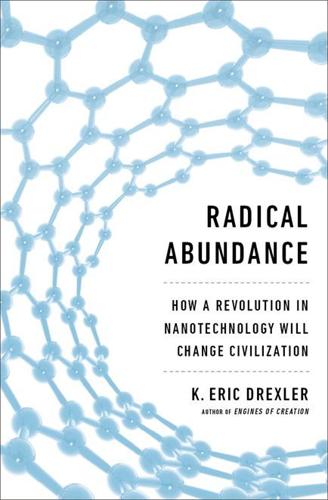
Radical Abundance: How a Revolution in Nanotechnology Will Change Civilization
by
K. Eric Drexler
Published 6 May 2013
To build machines that perform these motions, engineers have accumulated a kit full of design solutions, including devices like conveyor belts, rotary feeders, pick-and-place mechanisms, continuous-motion assembly machines, and (more famous and photogenic) the jointed, arm-like devices called “industrial robots.” Many factories today use both machines and human labor to perform assembly, and economics largely determines the extent of machine automation. Machine-based assembly has been in practice for decades (in the automobile industry, for example) and industrial robots are gaining ground as their costs fall and capabilities increase. APM can deliver macroscopic products (built from smaller parts, in turn built from yet smaller parts, and so on), and the macroscopic end of the process can be almost perfectly conventional.

The Deep Learning Revolution (The MIT Press)
by
Terrence J. Sejnowski
Published 27 Sep 2018
He argued that, for robots to accomplish everyday tasks, their higher cognitive abilities should be based on sensorimotor interaction with the environment, not on abstract reasoning. Elephants are highly social, have great memories, and are mechanical geniuses,13 but they don’t play chess.14 In 1990, Brooks went on to found iRobot, which has sold more than 10 million Roombas to clean even more floors. Industrial robots have stiff joints and powerful servomotors, which makes them look and feel mechanical. In 2008, Brooks started Rethink Robotics, a company that built a robot called “Baxter” with pliant joints, so its arms could be moved around (figure 12.3). Instead of having to write a program to move Baxter’s arms, each arm could be moved through the desired motions, and it would program itself to repeat the sequence of motions.
…
Instead of having to write a program to move Baxter’s arms, each arm could be moved through the desired motions, and it would program itself to repeat the sequence of motions. Movellan went one step further than Brooks and developed a robot baby called “Diego San” (manufactured in Japan),15 whose motors were pneumatic (driven by air pressure) and all of whose forty-four joints were compliant compared to the stiff torque motors used in most industrial robots (figure 12.4). The motivation for making them so is that when we pick something up, every muscle in our bodies is involved to some extent (when we move only one joint at a time, we look like robots). This makes us better able to adapt to changing conditions of load and interaction with the world.

Superminds: The Surprising Power of People and Computers Thinking Together
by
Thomas W. Malone
Published 14 May 2018
For instance, if you want a robot to serve you meals, make your bed, and carry other things around in your house, you need it to be able to fit through your doorways and climb your stairs. That robot may look quite a bit like a person. Second, we may create robots that look like people just to satisfy our human desire to interact with humanlike creatures. For instance, Baxter is an industrial robot from Rethink Robotics designed to do the kind of physical tasks in factories that human workers do today. And it’s probably no accident that Baxter has a humanlike face mounted on its body between its humanlike arms, right where a human head would be. There’s no technical reason why a face or head is needed there, but presumably the designers of Baxter thought the humans in a factory would be more comfortable around a robot that sort of looked like a person.
…
The photograph is from the above paper and is available online at https://tangible.media.mit.edu/project/soundform, where you can also see a fascinating video of the system in operation. Photograph © Tangible Media Group, MIT Media Lab. Reprinted with permission. 13. Erico Guizzo and Evan Ackerman, “How Rethink Robotics Built Its New Baxter Robot Worker,” IEEE Spectrum, September 18, 2012, http://spectrum.ieee.org/robotics/industrial-robots/rethink-robotics-baxter-robot-factory-worker. 14. Robert Lee Hotz, “Neural Implants Let Paralyzed Man Take a Drink,” Wall Street Journal, May 21, 2015, http://www.wsj.com/articles/neural-implants-let-paralyzed-man-take-a-drink-1432231201; Tyson Aflalo, Spencer Kellis, Christian Klaes, Brian Lee, Ying Shi, Kelsie Shanfield, Stephanie Hayes-Jackson, et al., “Decoding Motor Imagery from the Posterior Parietal Cortex of a Tetraplegic Human,” Science 348, no. 6,237 (May 22, 2015): 906–910, http://science.sciencemag.org/content/348/6237/906.full, doi:10.1126/science.aaa5417.

Growth: A Reckoning
by
Daniel Susskind
Published 16 Apr 2024
It explains, for example, why nursing robots in Japan are so impressive: the country has one of the largest elderly populations in the world (more than a quarter of its citizens are over sixty-five, and the proportion is rising), but an infamous reluctance to allow immigration that might grow the care sector, so there is a strong incentive to develop technological alternatives to plug the gap. It accounts for why China uses more industrial robots than any other country in the world:7 its economic rise was initially built on the back of cheap workers who moved from the countryside to the big cities, but its labour costs subsequently soared (manufacturing wages trebled from 2005 to 2016),8 so there is a strong incentive to automate factory work.
…
Abrahamovitz, Moses, 287n31 Acemoglu, Daron, 45, 47, 211 Akerlof, George, 158 ‘Alignment Problem’, 124–7 Allen, Robert, 5–6, 209–10, 278n5 Alphabet (company), R&D (Research & Development), 188 AlphaFold (AI system), 200–2 Amazon, patents, 182 Anfinsen, Christian, 201 anti-globalization movements, 119 Apollo space mission, 189–90 Arrhenius, Svante, 100 artificial intelligence (AI): applications, 108–9; and medicine, 200; ‘paperclip maximiser’ thought experiment, 124–5; social narratives around, 244–5 Athenaeus, 178 Atkinson, Anthony, 104 Attenborough, David, 150 Attlee, Clement, 263 Australia, patents, 182 automation: threat of, 107–10; tradeoffs, 241–5 Autor, David, 116 Bacon, Francis, 46 Bankman-Fried, Sam, 261 Barnes & Noble, 182 Becker, Gary, 36 Beckerman, Wilfred, 160, 167, 222, 313n41 Bell, Daniel, 145 Bell Labs (company), 189 Bellman, Richard, 159 Berlin, Isaiah, 91, 145, 166, 173, 202, 305n53, 320n50 Bernanke, Ben, 76 Berne Convention, 181 Berners-Lee, Tim, 185 Beveridge, William, 77 Bhagwati, Jagdish, 116 Black Death, 16–18 black markets, and GDP, 134–5 Blair, Tony, 115, 268, 311n15 Blake, William, 209 Bohr, Niels, 191 Boisguillenber, Pierre Le Pesant de, 62 Bostrom, Nick, 125, 259 Boulding, Kenneth, 316n3 Bowman, James, 189 Boyle, James, 184 Bretton Woods Conference, 66 BRIC group, 174–5 Britain: Brexit referendum, 263–4; National Health Service (NHS), 128; Office for National Statistics, 134–5 Broadberry, Stephen, 278n10 capital fundamentalism, 30, 33 capitalism, and economic growth, 218–20 Caplan, Bryan, 143 carbon tax, 241 Carroll, Lewis, Through the Looking-Glass, 22 Chang, Ha-Joon, 246 Chang, Ruth, 315n59 China: industrial robots, 211; joins the WTO, 256–7 Chivers, Tom, 150 Chu, Steven, 151 Churchill, Winston, 95, 263 citizen assemblies, 266 Clark, Colin, 64 Clark, Gregory, 4–5, 10, 12–13, 278n5 climate change, and economic growth, 97–101, 235–41 Climate Change Conference (Egypt, 2022), 237 Club of Rome, The Limits of Growth (1972), 153–4 Cold War, and economic growth, 67–73 Coleridge, Samuel Taylor, 14 Collins, Robert, 333n2 communities, cost of globalization, 118–19 comparative advantage, theory of, 114–15 consensus conferences, 266 copyright, 179, 181 Covid-19 pandemic: and key workers, 138; and modelling, 224; technological consequences of, 212–16; vaccine, 200, 214; and work, 75 Cowen, Tyler, 85–6, 175, 187 Coyle, Diane, 293n3 Creative Commons (organization), 185 Daley, William, 293n6 Daly, Herman, Toward a Steady-State Economy (1973), 154 Darwin, Charles, 280n30 DeepMind (company), 189, 200, 202, 244 Deepwater Horizon oil spill (2010), 136 degrowth movement, 149–51 DeLong, Brad, Slouching Towards Utopia, 176 Dene, William de la, 17 Dennett, Daniel, 281n35 Diamond, Jared, Guns, Germs, and Steel, 45–6 Diderot, Denis, 179 digital technology, and political power, 111–14 diminishing returns, law of, 20–2 Domar, Evsey, 28, 58, 73, 285n20, 294n11, 294n12 see also Harrod-Domar model Dorling, Danny, 327n2 Dorsey, Jack, 113 DuPont (company), 189 Dworkin, Ronald, 112 Easterlin, Richard, 86 Easterly, William, 30 econometrics, 42–3 Economist, The (journal), 33 Edward III of England, 17 ‘effective altruism’, 259 Ehrlich, Paul, The Population Bomb (1968), 154 Einstein, Albert, 191, 196 Eliot, T.
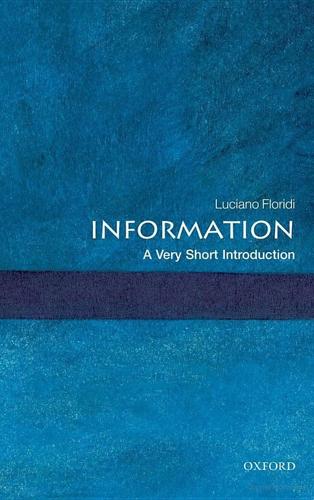
Information: A Very Short Introduction
by
Luciano Floridi
Published 25 Feb 2010
In economics, it is the sum of the utilities associated with all possible outcomes of a course of action, weighted by the probability that each outcome will occur, where `utilities' refers to a measure of the relative satisfaction from, or desirability of, an outcome, e.g. the consumption of a good or service. The benefits brought about by information need to be understood contextually because the agents exchanging information could be not only human individuals, but also biological agents, social groups, artificial agents (such as software programs or industrial robots), or synthetic agents (such as a corporation or a tank), which comprise agents of all kinds. In Chapter 1, we saw how human society has come to depend, for its proper functioning and growth, on the management and exploitation of information processes. Unsurprisingly, in recent years the scientific study of economic information has bloomed.

Four Futures: Life After Capitalism
by
Peter Frase
Published 10 Mar 2015
The review of legal documents, an extremely time-consuming process traditionally performed by legions of junior lawyers, is another promising application of the technology. Another area of rapid advance is robotics, the interaction of machinery with the physical world. Over the twentieth century, great advances were made in the development of large-scale industrial robots, of the sort that could operate a car assembly line. But only recently have they begun to challenge the areas in which humans excel: fine-grained motor skills and the navigation of a complex physical terrain. The US Department of Defense is now developing computer-controlled sewing machines so as to avoid sourcing its uniforms from China.9 Until just the past few years, self-driving cars were regarded as well beyond the scope of our technical ability.

Applied Artificial Intelligence: A Handbook for Business Leaders
by
Mariya Yao
,
Adelyn Zhou
and
Marlene Jia
Published 1 Jun 2018
In sales, for example, machine learning approaches to lead scoring can perform better than rule-based or statistical methods. Once the machine has produced a prediction on the quality of a lead, the salesperson then applies human judgment to decide how to follow up. More complex systems, such as self-driving cars and industrial robotics, handle everything from gathering the initial data to executing the action resulting from its analysis. For example, an autonomous vehicle must turn video and sensor feeds into accurate predictions of the surrounding world and adjust its driving accordingly. Systems That Create We humans like to think we’re the only beings capable of creativity, but computers have been used for generative design and art for decades.

The Future Is Faster Than You Think: How Converging Technologies Are Transforming Business, Industries, and Our Lives
by
Peter H. Diamandis
and
Steven Kotler
Published 28 Jan 2020
In the operating room, robots are assisting on everything from routine hernia repair to complicated heart bypasses. Out on the farm, robo-harvesters gather crops from the fields and robo-pickers pluck fruit from the trees. In construction, 2019 brought the first commercially available robo-mason, capable of laying a thousand bricks an hour. Industrial robotics has seen a bigger shift. A decade ago, these multimillion-dollar machines were so dangerous they were walled off from the workforce behind bulletproof glass and so complicated to program that PhDs were typically required. Not anymore. A slew of “cobots,” short for collaborative robots, are hitting the market.
…
v=rb0nxQyv7RU&feature=youtu.be. Already, it’s been rolled out in ten countries: Mariella Moon, “Domino’s Delivery Robots Are Invading Europe,” Engadget, March 30, 2017. A dozen or so different delivery bots are currently entering the market. Starship Technologies: Kayla Mathews, “5 Ways Retail Robots Are Disrupting the Industry,” Robotics Business Review, August 2, 2018. See: https://www.roboticsbusinessreview.com/retail-hospitality/retail-robots-disrupt-industry/. Starship has carried out fifty thousand deliveries in over one hundred cities in twenty countries: Luke Dormehl, “The Rise and Reign of Starship, the World’s First Robotic Delivery Provider,” Digital Trends, May 22, 2019.

Exponential: How Accelerating Technology Is Leaving Us Behind and What to Do About It
by
Azeem Azhar
Published 6 Sep 2021
The economists Daron Acemoglu and Pascual Restrepo, who co-authored the study, have conducted much of the most thought-provoking research in this area. They examined the impact of industrial robots in manufacturing, mostly in the automotive sector, and found that the machines were responsible for more than 650,000 job losses in the US between 1990 and 2007. Each individual robot displaced around 5.6 workers and reduced wages by up to half a per cent. Not so good.39 But today this is hardly a consistent conclusion. A European study on industrial robots, again mostly concentrated in the automotive sector, concluded that each additional robot per 1,000 workers increased overall employment by 1.3 per cent.40 Much more encouraging.
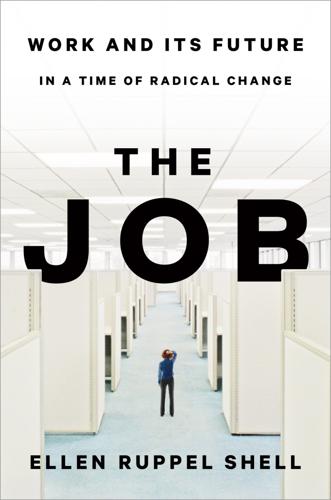
The Job: The Future of Work in the Modern Era
by
Ellen Ruppel Shell
Published 22 Oct 2018
“For Amazon and all Internet retailers, moving things from one place to another is just about their entire cost,” he told me. “Basically people in that industry are used as an extension of a forklift. Human forklift extenders are pretty expensive. Robot arms cut that cost drastically.” Sawyer, an industrial robot created by Boston-based Rethink Robotics, offers an impressive illustration of how all-embracing those arms can be. Sawyer is the brainchild of Rodney Brooks, the inventor of both Roomba, the vacuum-cleaning robot, and PackBot, the robot used to clear bunkers in Iraq and Afghanistan and the World Trade Center after 9/11.
…
Simply grabbing and adjusting its monkey-like arm and guiding it through a series of motions “teaches” Sawyer whatever repeatable procedure one needs it to get done. The robot can sense and manipulate objects almost as quickly and as fluidly as a human and demands very little in return: while traditional industrial robots require costly engineers and programmers to write and debug their code, a high school dropout can learn to program Sawyer in less than five minutes. Brooks once estimated that, all told, Sawyer (and his older brother, the two-armed Baxter robot) would work for a “wage” equivalent to less than $4 an hour.

The Long History of the Future: Why Tomorrow's Technology Still Isn't Here
by
Nicole Kobie
Published 3 Jul 2024
The Unimate One wasn’t a walking, talking humanoid entertainer like its predecessors, but a machine built for work: it was a programmable, strong jointed arm that could pick up and manipulate items, specifically designed to take on ‘strenuous, unpleasant or hazardous’ jobs. The very first of these industrial robots was installed in a New Jersey GM plant in 1961 to pick parts out of a die-casting machine, meaning humans didn’t need to go near the dangerously hot metal. The Unimate was initially welcomed by workers, not least because it took on the worst jobs in car manufacturing – an idea that was pushed via marketing brochures with slogans like: ‘shake hands with our new volunteer for the dirty work’.
…
Even GM opted for the new designs, ending their partnership with Unimation after 20 years. Usurped by newer technologies, the company was sold off to Westinghouse in 1984 for $107 million, and is now in the hands of Swiss robotics company Stäubli. While Unimation has been subsumed, Engelberger and Devol’s cocktail party-inspired idea changed industry: there are now 3 million industrial robots in use globally, many of which are specialist arms, just like their very first machine.6 * * * Ten years after Engelberger and Devol teamed up, what constituted a robot had changed so remarkably that it’s hard to believe how quickly it happened. Eric and the others like it were essentially metal puppets, their strings perhaps pulled via radio, electricity, or magnets, but not autonomous.

Destined for War: America, China, and Thucydides's Trap
by
Graham Allison
Published 29 May 2017
The US National Science Foundation report that documented this growth also finds that over that same decade, the American share of this market declined from 36 to 29 percent. For example, in the fast moving field of robotics, in 2015 China not only registered twice as many applications for new patents, but also added two and a half times as many industrial robots to its workforce.53 China is now the world leader in producing computers, semiconductors, and communications equipment, as well as pharmaceuticals.54 In 2015, Chinese filed almost twice as many total patent applications as the second-place Americans and became the first country to generate more than one million applications in a single year.55 On its current path, China will surpass the US to become the world leader in research-and-development spending by 2019.56 As a 2014 American Academy of Arts and Sciences study warns: “If our nation does not act quickly to shore up its scientific enterprise, it will squander the advantage it has long held as an engine of innovation that generates new discoveries and stimulates job growth.”57 In response to these trends, many Americans have sought refuge in the belief that for all its size and bluster, China’s success is still essentially a story of imitation and mass production.
…
National Science Board, “Science and Engineering Indicators, 2016” (Arlington, VA: National Science Foundation, 2016), https://www.nsf.gov/statistics/2016/nsb20161/#/report. [back] 53. Richard Waters and Tim Bradshaw, “Rise of the Robots Is Sparking an Investment Boom,” Financial Times, May 3, 2016, http://www.ft.com/cms/s/2/5a352264-0e26-11e6-ad80-67655613c2d6.html; “World Record: 248,000 Industrial Robots Revolutionizing the World Economy,” International Federation of Robotics, June 22, 2016, http://www.ifr.org/news/ifr-press-release/world-record-816/. [back] 54. National Science Board, “Science and Engineering Indicators, 2016.” [back] 55. China accounted for 38 percent of the global total of patent applications, with as many applications as the next three countries—the US, Japan, and Korea—combined.

The Future of the Professions: How Technology Will Transform the Work of Human Experts
by
Richard Susskind
and
Daniel Susskind
Published 24 Aug 2015
Sometimes, but not always, these robots are autonomous, which means that they can go about their business without human intervention. Until recently, though, the direct daily impact of these machines was modest. In the 1980s, for example, in the academic and research worlds, robotics was a moderately low-key branch of AI, while in the commercial world at that time the main take-up was of industrial robots—heavy duty, single-purpose machines, for soldering, welding, bolting, spray-painting, or assembling. These have typically been used in the manufacture of cars.53 Progress in robotics during the past decade has been dramatic, as Frank Levy and Richard Murnane would now have to agree. They are US economists and, in 2004, wrote an important book, The New Division of Labour, in which they asked what tasks computers could undertake better than people (and vice versa) and what jobs would survive (we address these questions in Chapter 7).
…
In the United States legislation has been passed in four states and in Washington, DC, allowing driverless cars.56 By 2020 most major car manufacturers also expect to be selling autonomous vehicles. Our guess is that, in due course, people will look back with incredulity and say, ‘it’s amazing people actually used to drive cars’. Other illustrations of advanced robotics abound. Every year, in manufacturing, an additional 200,000 industrial robots are installed (adding to an expected total of 1.5 million robots in 2015).57 In 2014, for example, Amazon had more than 15,000 robots in ten of its warehouses. This army is charged with the task of bringing shelves of goods out of storage and carrying them to human employees.58 These robots are a safer, cheaper, quicker, and more reliable workforce for the job in question.

The Future Is Asian
by
Parag Khanna
Published 5 Feb 2019
In Asia, e-commerce is surging but malls are full, and newspaper presses are churning despite fast-growing mobile advertising. There is a rising demand for everything, both physical and digital. Asia thus has every intention of retaining the world’s manufacturing supply chains, even if robots perform a growing share of the labor. South Korea currently leads the world in industrial robotics, with nearly 500 robots per 10,000 manufacturing workers compared to 300 in Japan and Germany and just 36 in China. South Korean workers can also wear exoskeleton bodysuits that allow them to perform more difficult tasks for longer periods with less physical stress. As its working-age population shrinks through aging from 1 billion people in 2015 toward 900 million by 2030, China is spending massively on industrial automation to plug its growing labor gap, buying both the machines and the foreign companies that make them.
…
As its working-age population shrinks through aging from 1 billion people in 2015 toward 900 million by 2030, China is spending massively on industrial automation to plug its growing labor gap, buying both the machines and the foreign companies that make them. In 2017, the Chinese appliance giant Midea paid $6 billion for more than 85 percent of Germany’s Kuka Robotics, one of the biggest makers of industrial robots in the world. Foxconn’s spin-off Foxconn Industrial Internet, which automates factories, is now more valuable than Sony. Automation will enable China to save on labor costs, raise productivity, and boost its competitiveness against the very countries that have pioneered automation. Even China’s most open sectors such as automobile manufacturing have become emblematic of how local competition drives the market.

Super Continent: The Logic of Eurasian Integration
by
Kent E. Calder
Published 28 Apr 2019
Pepe, Continental Drift— Germany and China’s Inroads in the “German-Central European Manufacturing Core”: Geopolitical Chances and Risks (Washington, DC: Reischauer Center for East Asian Studies, 2017), 9 –23. 61. Chem China, a Chinese firm, in 2016 acquired Krauss Maffei, a world leader in the production of industrial robots and engineering plastics. Another Chinese firm, Midea, in early 2017 also acquired the German robotics manufacturer KUKA, one of the world’s leading suppliers of intelligent automation and a leader in digitalization of production processes that is one of the main suppliers of industrial robotics for Hungary’s Mercedes plant. See Pepe, Continental Drift, 43 –45. 62. China Railway Corporation was the third largest freight carrier in the world in 2018, even though freight service only made up 26 percent of the company’s total revenue.

The Goal: A Process of Ongoing Improvement - 30th Anniversary Edition
by
Eliyahu M. Goldratt
Published 1 Jun 2012
I crack open my briefcase on my lap and pull out the advance copy of the program the association sent me. “Here we are,” I say, and read the listing to him. “ ‘Robotics: Solution to America’s Productivity Crisis in the new millenium . . . a panel of users and experts discusses the coming impact of industrial robots on American manufacturing.’ ” But when I look back to him, Jonah doesn’t seem very impressed. I figure, well, he’s an academic person; he’s not going to understand the business world. "You say your plant uses robots?’’ he asks. "In a couple of departments, yes,’’ I say. "Have they really increased productivity at your plant?’’
…
"Here he’s coming all the way to your factory to see you,’’ she says. "It must be an honor.’’ "Yeah, it is in a way,’’ I tell her. "But actually he’s just coming to have his picture taken with one of my robots.’’ My mother’s eyes blink. "Robots? Like from out-of-space?’’ she asks. "No, not from outer space. These are industrial robots. They’re not like the ones on television.’’ "Oh.’’ Her eyes blink again. "Do they have faces?’’ "No, not yet. They mostly have arms . . . which do things like welding, stacking materials, spray painting, and so on. They’re run by computer and you can program them to do different jobs,’’ I explain.
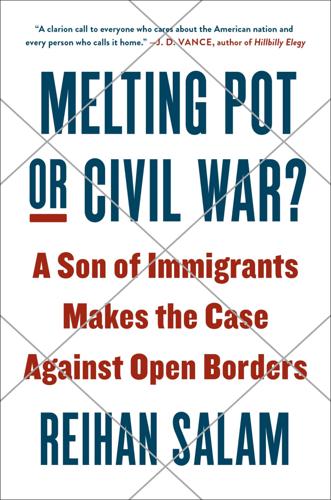
Melting Pot or Civil War?: A Son of Immigrants Makes the Case Against Open Borders
by
Reihan Salam
Published 24 Sep 2018
Take the case of South Korea, which has gone from being one of the world’s poorest countries to one of its richest in the space of a few decades. One of the reasons South Korea has grown so rich is that it has a highly educated population and it has not hesitated to embrace productivity-boosting automation. Rather than rely on low-skill immigrants, Korean businesses thrive by making greater use of industrial robots and other laborsaving technologies, and by partnering with employers in other countries, such as Vietnam. In recent years, Samsung, one of South Korea’s most storied multinationals, has invested $17 billion in Vietnam, where its local subsidiary now employs over 100,000 people.10 In theory, South Korea could have admitted 100,000 Vietnamese immigrants to its shores, where they would do the exact same jobs for slightly higher wages.

The Scandal of Money
by
George Gilder
Published 23 Feb 2016
As Gordon puts it, “Diminishing returns set in, and . . . all that remained after 1970 were second-round improvements, such as developing short-haul regional jets, extending the original interstate highway network with suburban ring roads, and converting residential America from window unit air conditioners to central air conditioning.” Even the computer revolution, according to Gordon, happened mostly in the 1960s, with computerized bank statements, credit cards, and airline reservations. Automatic telephone switches and industrial robots also entered before the 1970s. The critics of the dream rest their case on a detailed account of the overwhelming and singular transformative power of what they dub “the second industrial revolution” beginning about 1890 (following the first revolution of steam engines, coal, gas lighting, and metals a century earlier).

Connectography: Mapping the Future of Global Civilization
by
Parag Khanna
Published 18 Apr 2016
From ZTE phones to CRRC railcars to LiuGong mining equipment, China is rapidly displacing foreign incumbents at home and competing worldwide with the same companies whose investments sparked their industries at the outset. After buying IBM’s personal computer division, Lenovo is now the largest desktop and laptop maker. China has also become the largest purchaser of advanced industrial robotics to keep manufacturing churning even as its population ages and labor costs rise.*5 To catapult up the value chain, China has also deployed an incredibly sophisticated apparatus to steal valuable intellectual property, with theft of terabytes of data on advanced weapons systems such as the F-35 Joint Strike Fighter only one of its many tactical breakthroughs.
…
Especially in the heavy infrastructure categories such as power (think nuclear reactors and wind turbines) and aviation, foreign customers are the only way Western firms will survive. Precisely because Japan’s population is shrinking, its high-tech sector depends more than ever on innovations in industrial robotics at home and exports abroad. Moving up the value chain has become an end in itself, both sustainable and lucrative. Whereas China’s eleventh Five-Year Plan prioritized oil and shipping, its twelfth plan highlights renewable energy and electric cars—all technologies it seeks to deploy at home and export abroad to other emerging markets.

More: The 10,000-Year Rise of the World Economy
by
Philip Coggan
Published 6 Feb 2020
That is why imposing tariffs on imports will push up the price of domestically produced cars one way or the other – either the manufacturers will pay the tariffs and pass on the cost to customers, or they will disrupt their supply chains and make cars more expensively at home. This interconnectedness means that it is not only in the West that manufacturing jobs are under pressure from automation. A paper by the National Bureau of Economic Research estimated that each additional robot replaced around 6.2 workers.51 Sales of industrial robots have risen from 100,000 a year in the mid-2000s to 250,000 in 2015 and are forecast to hit 400,000 by the end of the decade.52 The standard joke is that the manufacturing plant of the future will be staffed by a man and a dog; the man’s job will be to feed the dog, and the dog’s role will be to keep the man away from the machines.
…
For a full explanation of this process, see Richard Baldwin, The Great Convergence: Information Technology and the New Globalization. 49. Chang, Economics: The User’s Guide, op. cit. 50. Source: https://www.mema.org/sites/default/files/A_World_Without_NAFTA_0.pdf 51. Daron Acemoglu and Pascual Restrepo, “Robots and jobs: evidence from US labor markets”, NBER working paper 23285 52. “The growth of industrial robots”, Daily Chart, The Economist, March 27th 2017 53. Celasun and Gruss, “The declining share of industrial jobs”, op. cit. 54. Ryan Avent, The Wealth of Humans: Work and Its Absence in the Twenty-First Century Chapter 8 – The first era of globalisation: 1820–1914 1. John Maynard Keynes, The Economic Consequences of the Peace 2.

The Lights in the Tunnel
by
Martin Ford
Published 28 May 2011
As an example, consider the shelf stocker in a supermarket or chain retail store. This job requires more flexibility than working on an assembly line, but still falls far short of what the auto mechanic faces. The layout of a supermarket is standardized and could easily be programmed into a computer. The isles are wide and the floors are smooth; ideal territory for an industrial robot. Every item has a specific place on the shelves. Bar codes make it a simple matter to identify items, and special location markers could be placed on the shelves: a shelf stocking robot faces few of the visual recognition issues that challenged our housekeeping or auto mechanic robots. Designing a robot that could move inventory from the stock room and place it on shelves is certainly well within the realm of possibility in the not too distant future.

Numbers Don't Lie: 71 Stories to Help Us Understand the Modern World
by
Vaclav Smil
Published 4 May 2021
But that is a categorical misunderstanding, as most recent advances have been variations on two older fundamental discoveries: microprocessors (see inventing integrated circuits, this page) and exploiting radio waves, part of the electromagnetic spectrum. More powerful and more specialized microchips are now running everything from industrial robots and the autopilots of jetliners to kitchen ranges and digital cameras, and the most popular global brand for mobile communications has been using ultra high-frequency radio waves. In fact, perhaps the most inventive time in human history was the 1880s. Have any two sets of primary inventions and epochal discoveries shaped the modern world more than electricity and internal combustion engines?

Superintelligence: Paths, Dangers, Strategies
by
Nick Bostrom
Published 3 Jun 2014
Aside from the game AIs listed in Table 1, there are hearing aids with algorithms that filter out ambient noise; route-finders that display maps and offer navigation advice to drivers; recommender systems that suggest books and music albums based on a user’s previous purchases and ratings; and medical decision support systems that help doctors diagnose breast cancer, recommend treatment plans, and aid in the interpretation of electrocardiograms. There are robotic pets and cleaning robots, lawn-mowing robots, rescue robots, surgical robots, and over a million industrial robots.64 The world population of robots exceeds 10 million.65 Modern speech recognition, based on statistical techniques such as hidden Markov models, has become sufficiently accurate for practical use (some fragments of this book were drafted with the help of a speech recognition program). Personal digital assistants, such as Apple’s Siri, respond to spoken commands and can answer simple questions and execute commands.
…
New York: Academic Press. Wood, Nigel. 2007. Chinese Glazes: Their Origins, Chemistry and Re-creation. London: A. & C. Black. World Bank. 2008. Global Economic Prospects: Technology Diffusion in the Developing World 42097. Washington, DC. World Robotics. 2011. Executive Summary of 1. World Robotics 2011 Industrial Robots; 2. World Robotics 2011 Service Robots. Retrieved June 30, 2012. Available at http://www.bara.org.uk/pdf/2012/world-robotics/Executive_Summary_WR_2012.pdf. World Values Survey. 2008. WVS 2005-2008. Retrieved 29 October, 2013. Available at http://www.wvsevsdb.com/wvs/WVSAnalizeStudy.jsp. Wright, Robert. 2001.
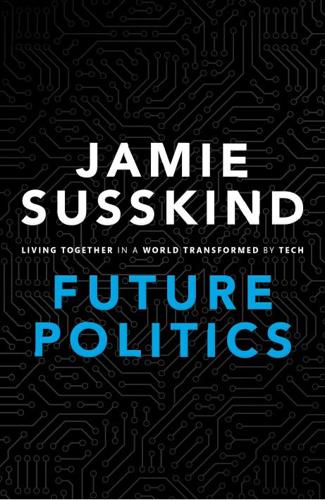
Future Politics: Living Together in a World Transformed by Tech
by
Jamie Susskind
Published 3 Sep 2018
Nevertheless, the world population of robots is now more than 10 million,81 of which more than 1 million perform useful work (robots, for instance, now account for 80 per cent of the work in manufacturing a car).82 Amazon’s robots, which look like roving footstools, number more than 15,000. They bring goods out of storage and carry them to human employees.83 Ninety per cent of crop spraying in Japan is done by unmanned drones.84 In 2016 about 300,000 or so new industrial robots were installed,85 and global spending on robotics is expected to be more than four times higher in 2025 than it was in 2010.86 A ‘reasonable prediction’ is that by 2020 many households will have one or more robots, used for transport, cleaning, education, care, companionship, or entertainment.87 We already trust robotic systems to perform complex and important tasks.
…
Once perceived as cold and lifeless, they can tell if you are happy, confused, surprised, or disgusted—sometimes by reading signals not detectable by the human eye. The economic consequences will be profound. Between 1990 and 2007—more than ten years ago, before the introduction of smartphones—industrial robots alone eliminated up to 670,000 American jobs.1 Between 2000 and 2010, the US lost about 5.6 million manufacturing jobs, 85 per cent of which losses were attributable to technological change.2 In 2016, analysts at McKinsey estimated that ‘currently demonstrated technologies’ could be used to automate 45 per cent of the tasks that we currently pay people to do.3 That’s just using today’s technologies.

Data-Ism: The Revolution Transforming Decision Making, Consumer Behavior, and Almost Everything Else
by
Steve Lohr
Published 10 Mar 2015
He seems to see smartphones merely as more compact electronic devices instead of as mobile delivery platforms for data-fueled artificial intelligence. In his paper, the term “artificial intelligence” does not appear. Smarter machines? He mentions “robots” twice. In 1961, he notes, General Motors introduced the first industrial robot. Later, Gordon writes that by the past decade, while the role of robots continues to expand in manufacturing, “the era of computers replacing human labor was largely over.” Something like GE’s bet on the industrial Internet—smart machines and big data—is not on Gordon’s radar, for example. That is a crucial blind spot, in the view of the techno-optimists.

Belt and Road: A Chinese World Order
by
Bruno Maçães
Published 1 Feb 2019
* * * Because Germany’s top firms have become so dependent on the Chinese market, the government in Berlin has avoided confronting China head-on.16 The United States took longer to react, but when it finally did the response was considerably more aggressive. The ongoing dispute was initially centered around the country’s trade deficit with China but quickly turned to Made in China 2025. The confrontation started on April 3, 2018 with the US proposing 25 per cent in added duties on roughly 1,300 Chinese products, such as industrial robots and other machinery. This would impact $50 billion, or 10 per cent, of total US imports from China. The determination claimed that China uses foreign ownership restrictions, such as joint venture requirements and foreign equity limitations, to require or pressure technology transfer from US companies and that its regime of technology regulations forces US companies seeking to license technologies to Chinese entities to do so on non-market-based terms that favor Chinese recipients.

The AI-First Company
by
Ash Fontana
Published 4 May 2021
Those products themselves are sometimes defensible—the design of a telephone handset can be patented, and the software around a social network is intellectual property (IP)—but the network itself is a defensible asset, or protectable source of income. This is the same with a data network—it lies underneath a product: sometimes a simple one, such as a catalogue full of product information; and sometimes a complicated one, like an industrial robot at a Tesla factory. The distinction between a product with network effects and one without is that the product is more useful because of the network effect. The distinction between a normal network and a data network is that data networks transmit derivatives of data—information—not just data itself.

Thinking Machines: The Inside Story of Artificial Intelligence and Our Race to Build the Future
by
Luke Dormehl
Published 10 Aug 2016
As machinery became more and more advanced, this trend picked up speed through the twentieth century and beyond. Thanks to dual advances in both Artificial Intelligence and its sibling field of robotics, automation is now sweeping across more industries than ever. In warehouses, robots are increasingly used to select and box up products for shipping. In the service industry, robots are used to prepare food – and even serve it to customers. To whit, the San Francisco startup Momentum Machines, Inc. has built a robot capable of preparing hamburgers. Current models can prepare around 360 per hour, and are capable of doing everything from grinding the meat for the burgers and toasting the buns to adding fresh ingredients such as tomatoes, onions and pickles.

The Global Auction: The Broken Promises of Education, Jobs, and Incomes
by
Phillip Brown
,
Hugh Lauder
and
David Ashton
Published 3 Nov 2010
Although mechanical Taylorism relates closely to manufacturing and its digital variety to service sector occupations, it should be noted that the mechanical and digital are being applied to both factories and offices. Mechatronics, for example, is indispensable to the production of automobiles, which combines mechanics, electronics, and computing not only in the use of industrial robots but also reflects the increasing importance to the value of an automobile. 28. Paul Romer, “Beyond the Knowledge Worker,” Worldlink (January/February 1995), 56–60. 29. Simon Head, The New Ruthless Economy: Work and Power in the Digital Age (New York: Oxford University Press, 2003), 61. 30. Ibid., 69–70. 31.

Tech Titans of China: How China's Tech Sector Is Challenging the World by Innovating Faster, Working Harder, and Going Global
by
Rebecca Fannin
Published 2 Sep 2019
Beijing aspires to become the world leader in several technologies, including robots and drones, as part of the country’s “Made in China 2025” strategy to reduce its dependence on imports, develop elite talent, and improve the country’s production systems. China has made swift progress in developing a thriving robotics and drones industry as an upgrade of its manufacturing and military sectors, already surpassing Japan as the world’s largest market for industrial robotics, and is on the way to more than one-third of commercial robots in use worldwide. Chinese state-owned conglomerates, emerging companies such as DJI, and venture capital firms are acquiring and investing in robotics technologies abroad. Such growth and ambition could jeopardize many US technological advantages, a research report prepared for the US-China Economic and Security Review Commission concludes.
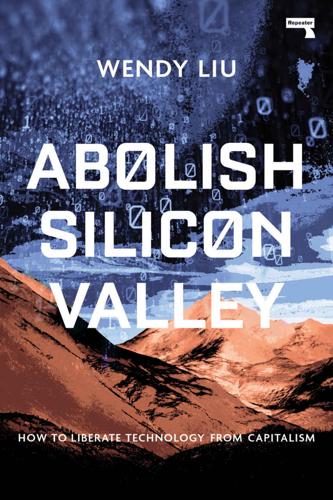
Abolish Silicon Valley: How to Liberate Technology From Capitalism
by
Wendy Liu
Published 22 Mar 2020
Our Amazon Web Services credits had run out, and every dollar counted; the longer we could keep our existing business alive, the more time we had to figure out our improbable pivot. Robotics had piqued my interest. I loved the idea of automating away rote tasks, and my latest obsession was restaurant work — something that I had, again, never done, but which I assumed I could optimise. My vision was an industrial robot that automated food production, so we could do away with pesky labour costs in order to sell food on the cheap. I did some research into the restaurant industry, only to learn that labour costs were already quite low — in much of the US, the minimum wage for tipped roles was a mere $2.13 an hour; the biggest expenses tended to be the cost of raw materials and rent.

Age of the City: Why Our Future Will Be Won or Lost Together
by
Ian Goldin
and
Tom Lee-Devlin
Published 21 Jun 2023
Economists break down economic activity into an amount contributed by labour, which is equal to the wages of employees, and an amount contributed by capital, which is everything else. Since the start of the 1980s, the contribution of labour in the manufacturing sector in the US has fallen from over 70 per cent to under 50 per cent, as machines have increasingly replaced workers on the factory floor.22 As industrial robots continue to become more sophisticated and widespread, this trend is likely to accelerate further. Manufacturing is not the only sector that has been heavily affected by offshoring and automation. Between 1940 and 1980, office administration jobs, including clerical and secretarial work, doubled from roughly 10 per cent of all employment in the United States to nearly 20 per cent, as increasing numbers of staff were required to manage the growing scale and complexity of ever-larger enterprises.23 Since then, digitization of record keeping and correspondence, combined with the offshoring of operations to India, the Philippines and other low-wage economies, has reduced the share of these jobs to below 15 per cent of total employment in the US.

The Global Minotaur
by
Yanis Varoufakis
and
Paul Mason
Published 4 Jul 2015
Japan thus ran the risk of ceasing to be able to remain a net capital exporter and of turning into a rentier nation. This prospect was at odds with the post-oil crisis Japanese growth strategy, which was to concentrate on high-value-added, low-energy-using industries like electronics, integrated circuits, computers and mechatronics (industrial robots). On 22 September 1985, the United States, Japan, West Germany, France and Britain signed the Plaza Accord. The agreement’s stated purpose was to devalue the US dollar in an attempt to reduce America’s trade deficit (and, by extension, its budget deficit), in other words to rein in the Global Minotaur.

Average Is Over: Powering America Beyond the Age of the Great Stagnation
by
Tyler Cowen
Published 11 Sep 2013
In 2011 Taiwan-based Foxconn, the world’s largest contract electronics manufacturer, announced a plan to increase the use of robots in its factories one hundredfold within three years, bringing the total to one million robots. After recent wage increases in China—to levels still low by Western standards—the company doesn’t consider its labor so cheap anymore. In the United States as well, the use of industrial robots is booming, and the likely future for North America is that of a coherent economic unit where the United States, Canada, and Mexico band together to make major investments in customized robot production and then use these investments to dominate global manufacturing. Robot-guided mechanical arms are common in the operating room, and computers spend more time flying our planes than do the pilots.
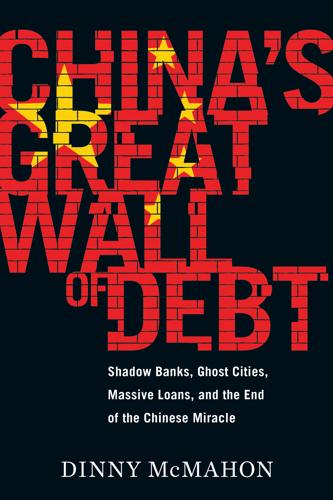
China's Great Wall of Debt: Shadow Banks, Ghost Cities, Massive Loans, and the End of the Chinese Miracle
by
Dinny McMahon
Published 13 Mar 2018
The reality is that as China’s domestic economic problems have grown more acute, so has it grown more protectionist. The same industrial policies that squeezed out foreign competition from steel and paper are now being applied to new technologies. For example, Beijing has set a target for robot production to exceed one hundred thousand units by 2020. In 2016, China produced more than seventy-two thousand industrial robots, up 34% from the year before. But in June of that year, Xin Guobin, the vice minister of the Ministry of Industry and Information, warned that the industry was already facing overcapacity problems. “Robotics firms need to avoid blindly expanding,” he said. It’s not just in high-tech industries where foreigners feel themselves being squeezed by Chinese policy.

The Digital Party: Political Organisation and Online Democracy
by
Paolo Gerbaudo
Published 19 Jul 2018
In fact, economic crises have also often been moments of rapid technological innovation. Richard Florida, for example, highlights that during the Long Depression that started in 1873 there was a peak in patents, and the same may be said about the stagflation of the 1970s that led to the development of industrial robots.98 Furthermore, we know from Joseph Schumpeter that capitalism is characterised by a tendency towards creative destruction,99 in which incumbents in various industries are constantly threatened by the rise of new products and services, and we most clearly see this phenomenon in the so-called ‘disruption’100 posed by new companies, such as Airbnb, Amazon, Uber and Deliveroo, to existing companies.

Irresistible: How Cuteness Wired our Brains and Conquered the World
by
Joshua Paul Dale
Published 15 Dec 2023
Although there is a small but thriving furry scene in Japan, the newest forms of cuteness there are more high-tech. In a country with limited space for pets and a falling birthrate, the future of both animal and child-like kawaii may well belong to robots that offer companionship and entertainment on demand. Sony’s robot dog When industrial robots arrived in Japan in the 1970s, Nissan had a problem. It wasn’t with disgruntled workers – Japan’s economy was expanding so rapidly that no jobs were lost due to automation. The difficulty was that the robots all looked the same. When one of the huge machines broke down, the mechanics rushing to repair it found themselves wasting precious time trying to figure out which one needed their help.

The Rise of the Network Society
by
Manuel Castells
Published 31 Aug 1996
At the industry level, again in the US, the analysis by Levy and co-workers of five industries showed different effects of technological innovation: in iron mining, coal mining, and aluminium, technological change increased output and resulted in higher employment levels; in steel and automobiles, on the other hand, growth of demand did not match reduction of labor per unit of output and job losses resulted.86 Also in the United States, the analysis by Miller in the 1980s of the available evidence on the impact of industrial robotics concluded that most of the displaced workers would be reabsorbed into the labor force.87 In the UK, the study by Daniel on the employment impacts of technology in factories and offices concluded that there would be a negligible effect. Another study by the London Policy Studies Institute on a sample of 1,200 firms in France, Germany, and the UK estimated that, on average, for the three countries considered, the impact of microelectronics amounted to a job loss equivalent to, respectively, 0.5, 0.6, and 0.8 percent of annual decrease of employment in manufacturing.88 In the synthesis of studies directed by Watanabe on the impacts of robotization in the automobile industry in Japan, the United States, France, and Italy, the total job loss was estimated at between 2 and 3.5 percent, but with the additional caveat of the differential effects I mentioned above, namely the increase in employment in Japanese factories because of their use of micro-electronics to retrain workers and enhance competitiveness.89 In the case of Brazil, Silva found no effect of technology on employment in the automobile industry, although employment varied considerably depending on the levels of output.90 In the study I directed on the impacts of new technologies on the Spanish economy in the early 1980s we found no statistical relationship between employment variation and technological level in the manufacturing and service sectors.
…
Millan, Jose del Rocio et al. (2000) “Robust EEG-based recognition of mental tasks”, Clinical Neuropsychology (forthcoming). Miller, Richard L. and Swensson, Earl S. (1995) New Directions in Hospital and Health Care Facility Design, New York: McGraw-Hill. Miller, Steven, M. (1989) Impacts of Industrial Robotics: Potential Effects of Labor and Costs within the Metalworking Industries, Madison, WIS: University of Wisconsin Press. Miners, N. (1986) The Government and Politics of Hong Kong, Hong Kong: Oxford University Press. Mingione, Enzo (1991) Fragmented Societies, Oxford, Blackwell. Ministry of Labor [Japan] (1991) Statistical Yearbook, Tokyo: Government of Japan.

Industry 4.0: The Industrial Internet of Things
by
Alasdair Gilchrist
Published 27 Jun 2016
Humans have cognitive skills and are capable of precision handling and delicate maneuverings of tiny items or performing skills that require dexterity and a sense of touch. Robots on the other hand are great at doing repeatable tasks ad nauseam but with tremendous speed, strength, reliability, and efficiency. The problem is that industrial robots are not something you want to stand too close to. Indeed most are equipped with sensors to detect the presence of humans and to slow down or even pause what they are doing for the sake of safety. 11 12 Chapter 1 | Introduction to the Industrial Internet However, the future will bring another class of robot, which will be able to work alongside humans in harmony and most importantly safely.
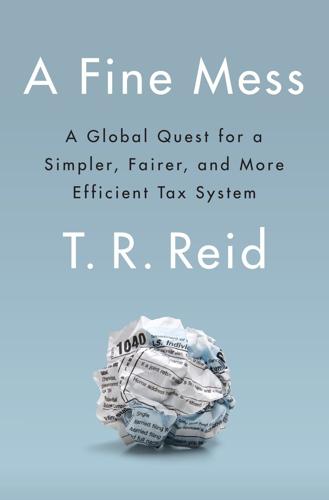
A Fine Mess
by
T. R. Reid
Published 13 Mar 2017
First, nearly all economists believe that tax should be a “neutral” factor when people and corporations are making business decisions. An economy works best if financial decisions are based on sound business principles; if tax considerations influence the decision, they distort the economics. If International Widgets decides to buy a $20 million industrial robot, it should do so because that acquisition makes business sense—that is, this new tool will increase our profit—and not because there’s a big tax break for investing in robots. If some millionaire is looking for a bank to hold her life savings, she should look for the most trustworthy bank, rather than depositing her money in the Cayman Islands in order to hide it from the IRS.

The Great Divergence: America's Growing Inequality Crisis and What We Can Do About It
by
Timothy Noah
Published 23 Apr 2012
In 1969 the two broad categories encompassing the occupations of the largest proportion of American workers were blue-collar work and administrative support. Together, Levy and Murnane calculate, these categories described 56 percent of the workforce. By 1999, they described only 39 percent. The decline occurred because many of these jobs were sufficiently rule-based that industrial robots and desktop computers could do them. During that same period, sales-related occupations increased from 8 to 12 percent; professional occupations increased from 10 to 13 percent; and managers and administrators increased from 8 percent to 14 percent. The first category encompasses employees at a variety of income levels, but chiefly at the top and bottom.

The Wealth of Humans: Work, Power, and Status in the Twenty-First Century
by
Ryan Avent
Published 20 Sep 2016
Yet without the ability to coordinate production efficiently and in real time, the system could never have developed. Its effects were profound. Emerging economies no longer needed to slowly and painfully accumulate knowledge and capabilities as they worked their way from production of plastic toys to industrial robots. A country like China could instead immediately get into the advanced electronics export game simply by tapping into global supply chains. Cheap labour and a relatively small set of competencies were suddenly sufficient to participate in production of advanced goods. Trade swelled as international supply chains developed: shipments between suppliers that would not previously have registered as exports increasingly did.

The Great Convergence: Information Technology and the New Globalization
by
Richard Baldwin
Published 14 Nov 2016
Other aspects of ICT, by contrast, make it easier for individual workers to master more tasks—call them information technologies (IT). Since IT basically means automation, better IT disfavors specialization by reducing the cost of grouping many tasks into a single occupation. This happens in several ways. Today, many factories can be thought of as computer systems where the peripherals are industrial robots, computerized machine tools, and guided vehicles. Additive manufacturing (also known as 3D printing) is the extreme where IT allows a single worker to perform all tasks simply by operating one machine. Perhaps this type of advanced manufacturing should be called “compufacturing” since rather than machines helping workers make things, the workers are helping machines make things.

The Lost Decade: 2010–2020, and What Lies Ahead for Britain
by
Polly Toynbee
and
David Walker
Published 3 Mar 2020
Less skilled workers were more likely to be found outside the south-east. The UK’s productivity problem did not begin in 2010; it just got worse. A link between low pay and low productivity was seen in France and Germany as well, but in the UK jobs growth was concentrated in low-productivity sectors. France had 80 per cent more industrial robots than the UK, in a manufacturing sector approximately the same size, which was part of the reason why on a comparison of weekly output with the UK, the average French worker produced more by the end of Thursday than the average British worker in a full week. Brexit hit productivity: in 2018–19, annual growth fell to a negligible 0.2 per cent.

Billion Dollar Brand Club: How Dollar Shave Club, Warby Parker, and Other Disruptors Are Remaking What We Buy
by
Lawrence Ingrassia
Published 28 Jan 2020
“Think about walking down a street in Manhattan, all the calculations you have to do constantly and instantly to avoid running into another person,” Welty recalls. “It was quite comical. Just when you thought you had written the [software] code right, the robots would drive at high speed and crash into each other.” During this period, Bradley Powers, who joined Locus as principal roboticist from another industrial robot company, occasionally worked three or four days straight without leaving the R&D lab at the company’s headquarters in Wilmington, Massachusetts. “You kind of lose track of time,” he says. “The robots would see something that they didn’t recognize, and that would cause them to get a little lost and go to the wrong place.”

Possible Minds: Twenty-Five Ways of Looking at AI
by
John Brockman
Published 19 Feb 2019
Whenever we figure out how to make another type of human work obsolete by building machines that do it better and cheaper, most of society gains: Those who build and use the machines make profits, and consumers get more affordable products. This will be as true of future investor AGIs and scientist AGIs as it was of weaving machines, excavators, and industrial robots. In the past, displaced workers usually found new jobs, but this basic economic incentive will remain even if that is no longer the case. The existence of affordable AGI means, by definition, that all jobs can be done more cheaply by machines, so anyone claiming that “people will always find new well-paying jobs” is in effect claiming that AI researchers will fail to build AGI.

The Chip: How Two Americans Invented the Microchip and Launched a Revolution
by
T. R. Reid
Published 18 Dec 2007
It had no more “intelligence” than a yardstick or a screwdriver or any other familiar tool that extends human power. Like the yardstick, the screwdriver, etc., the slide rule was just an ignorant mechanism. Someday—fairly soon, probably, given the accelerated pace of technological development—the pocket calculator, the handheld computer, the industrial robot, the cell phone, and other digital marvels of our day will themselves be museum pieces, on exhibit in a gallery called Primitive Microelectronic Tools or some such. As we file past with our grandchildren, we may well break into nostalgic smiles of fond regard for these devices that used to be considered so revolutionary.
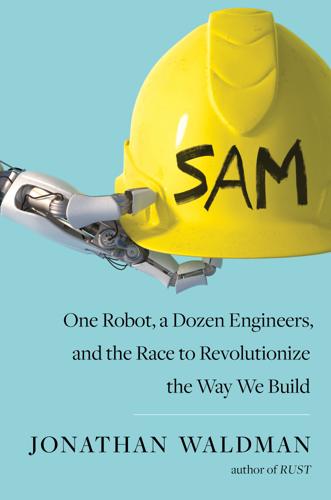
SAM: One Robot, a Dozen Engineers, and the Race to Revolutionize the Way We Build
by
Jonathan Waldman
Published 7 Jan 2020
And they had curfews, which limited the hours a bowling alley might operate, especially during the school year. So when Philip Podkaminer and his brother Leon opened Brewster Bowling (now with ten lanes), they immediately installed automatic pin-setting machines. The pin-setting machines were made by American Machine and Foundry, the same company that would soon make one of the world’s first industrial robots. At least half a dozen tinkerers had schemed up automatic pin setters, but one, made by Fred Schmidt, held appeal—even if it was made of car parts and lamp shades and flowerpots and bicycle chains. Brunswick hadn’t been interested, but AMF was. In fact, the company was on a mission. Since 1941, when Morehead Patterson inherited AMF from his father, he’d been looking for large unmechanized markets to invade—and bowling, reliant on so many pinboys, nearly screamed at him.

Shocks, Crises, and False Alarms: How to Assess True Macroeconomic Risk
by
Philipp Carlsson-Szlezak
and
Paul Swartz
Published 8 Jul 2024
We believe the world-without-work narrative is a false alarm.10 Technological unemployment is not a new fear. Decades ago, the concern was captured well by a possibly apocryphal but nevertheless enlightening conversation between Henry Ford II and the president of the United Auto Workers (UAW). Looking out over new industrial robots, Ford asked, “How are you going to get those robots to pay your union dues?” To which the UAW president replied, “Henry, how are you going to get them to buy your cars?”11 The fearful outcomes (no jobs and no demand) are easy to imagine, but both sides miss the point. Higher productivity delivers real wage gains through technology’s deflationary impact, allowing dollars to be spent elsewhere, which in turn creates more employment and more income in other sectors.

The Narrow Corridor: States, Societies, and the Fate of Liberty
by
Daron Acemoglu
and
James A. Robinson
Published 23 Sep 2019
From the 1940s to the mid-1970s in the U.S. economy, there was rapid productivity growth along with growth of earnings of all education groups, all the way from workers with less than high school education to those with postgraduate degrees. But the bewildering array of new technologies that have transformed workplaces over the past thirty years appears to have had quite different effects. Many of these technologies, including much more powerful computers, numerically controlled and then computerized machines, industrial robots, and more recently artificial intelligence, have automated the production process, allowing machines to take over tasks that were previously performed by workers. By its nature, automation favors capital, which is now used more extensively in the form of the new machines. It also tends to favor skilled workers relative to the less skilled, whose tasks are being taken over by machines.
…
Employment and earnings losses are concentrated in areas, industries, and occupations that used to specialize in activities that either have been automated or have witnessed a rapid expansion of imports from developing economies, particularly China. Estimates in the literature suggest that imports from China alone may have reduced employment in the U.S. economy by over two million jobs, and the adoption of industrial robots, one salient example of new automation technologies, may have led to the loss of as many as 400,000 jobs. In both cases the majority of the effects were felt by workers at the lower end of the skill distribution. Wall Street Unhinged Economic globalization and automation are not the only trends contributing to high levels of inequality.
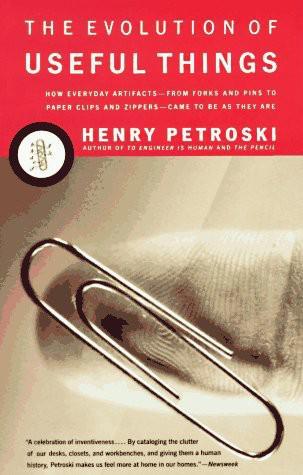
The Evolution of Useful Things
by
Henry Petroski
Published 2 Jan 1992
I like to have things simplified. Camras may be an individualistic type, as he believes inventors are generally, but his views about invention are common among his peers. Jerome Lemelson graduated with a master’s degree in industrial engineering from New York University in 1951. He has designed industrial robots and automated factories and has even patented such things as cutout toys for the backs of cereal boxes. And yet, though he has more than four hundred patents to his name, Lemelson has made no attempt to become an entrepreneur, has refused to follow the familiar practice of building a company around one or more of his patents.

Bad Samaritans: The Myth of Free Trade and the Secret History of Capitalism
by
Ha-Joon Chang
Published 26 Dec 2007
Contrary to the popular perception, a well-designed welfare state, especially if combined with a good retraining programme, can reduce the cost of unemployment to the workers and thus make them less resistant to automation that raises productivity (it is not a coincidence that Sweden has the world’s highest number of industrial robots per worker). I could mention some more possible channels through which democracy may influence economic development, positively or negatively, but the point is that the relationship is very complex. It is no wonder, then, that there is no systematic evidence either for or against the proposition that democracy helps economic development.
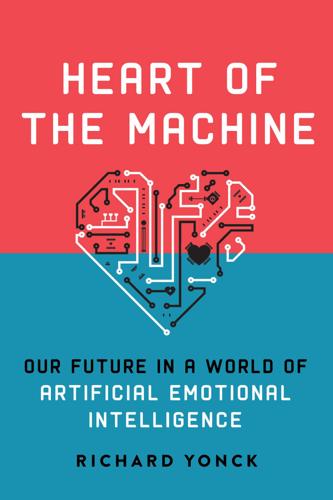
Heart of the Machine: Our Future in a World of Artificial Emotional Intelligence
by
Richard Yonck
Published 7 Mar 2017
Based on Mori’s studies, it seems there comes a point when objects—whether a robot or a doll or animation—simply become too realistic. Figure 1: The uncanny valley (source: based on image by Masahiro Mori and Karl MacDorman). This phenomenon has significant implications for our future relationship with technology, not least affective computing and social robotics. Unlike basic computer applications or industrial robots used on assembly lines, these fields are focused on building systems that actually connect with users emotionally. What could be more counterproductive than a helper system that disgusts its user? Before addressing some of the reasons the uncanny valley may exist or how it functions, it should be noted that this idea is not universally accepted as valid or real.

Bad Samaritans: The Guilty Secrets of Rich Nations and the Threat to Global Prosperity
by
Ha-Joon Chang
Published 4 Jul 2007
Contrary to the popular perception, a well-designed welfare state, especially if combined with a good retraining programme, can reduce the cost of unemployment to the workers and thus make them less resistant to automation that raises productivity (it is not a coincidence that Sweden has the world’s highest number of industrial robots per worker). I could mention some more possible channels through which democracy may influence economic development, positively or negatively, but the point is that the relationship is very complex. It is no wonder, then, that there is no systematic evidence either for or against the proposition that democracy helps economic development.

Bezonomics: How Amazon Is Changing Our Lives and What the World's Best Companies Are Learning From It
by
Brian Dumaine
Published 11 May 2020
But this time around the disruption will be at such a scale that it will take affected economies decades to handle the masses of displaced workers—either by creating types of jobs we can’t imagine or by having the government pay people a living wage. Consider that, globally, some 3 million industrial robots will be in use in factories by 2020, more than double the number from just seven years earlier. That doesn’t bode well for factory and warehouse workers. Pundits have long worried that self-driving vehicles will steal jobs from America’s 3.5 million truck drivers and countless more millions of taxi drivers.

Red Flags: Why Xi's China Is in Jeopardy
by
George Magnus
Published 10 Sep 2018
In 2011, for example, Foxconn, the Taiwanese company that supplies Apple, Samsung and Sony, made headlines by announcing that it anticipated replacing many of its workers by installing 1 million robots over the following three to five years. Progress hasn’t been as rapid as that, but the company reported in 2016 that it had already replaced 60,000 jobs with such devices.11 This is the tip of the iceberg. Over the last five years, China has bought more industrial robots than anyone else, including Germany, Japan and South Korea, and over a quarter of the total sold worldwide in 2015. China still had only 36 robots per 10,000 manufacturing workers in 2016, compared with 292 in Germany, 314 in Japan and 478 in South Korea, but there is no question about China’s direction of travel.12 The industrial policy, Made in China 2025, incorporates a bet by China’s policymakers that the threat to jobs from machine intelligence will be outweighed by other factors.
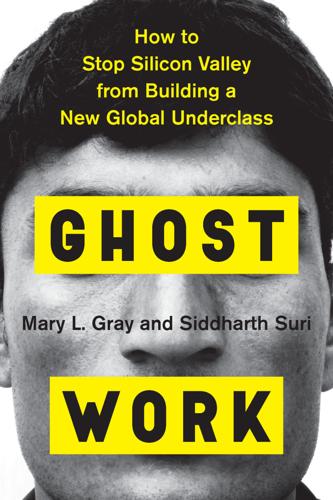
Ghost Work: How to Stop Silicon Valley From Building a New Global Underclass
by
Mary L. Gray
and
Siddharth Suri
Published 6 May 2019
The company’s Smart Glasses, for example, include a computer chip, cameras, and sensors that can project a 3-D map or repair manuals and can scan for signs of dangerous heat and pressure buildup in piping. It can help an on-site worker patch a complicated hydraulic system with the expertise of an on-demand pipe fitter pitching in. As autonomous vehicles advance, Daqri’s Smart Glasses could be the headpiece of an industrial robot augmented by an on-demand worker controlling robotic arms to complete a dangerous repair. Could BP’s Deepwater Horizon environmental disaster of 2010 have been prevented with a 24/7 on-demand crew tasked with taking turns to monitor all industrial systems and repair them as sensors brought attention to any fitting starting to wear or needing to be replaced?
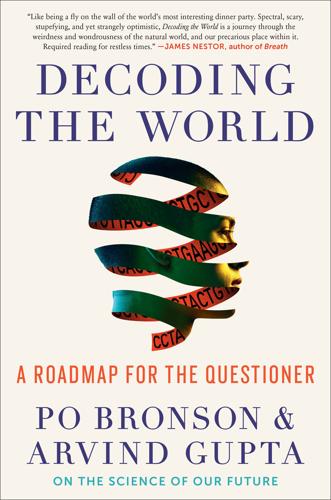
Decoding the World: A Roadmap for the Questioner
by
Po Bronson
Published 14 Jul 2020
“Not robot enthusiasts,” he quipped. By that he meant kids who had spent their life in robot clubs at school. They tend to want to push the limits of what a robot can do, and they put in too many moving parts, and too much software. It makes the robot unreliable, or break down. What makes a good industrial robot—one that can take the place of humans—is that it never breaks down and is extremely consistent. Otherwise, you’re just replacing the human with something that’s too humanlike. Humans break down. Humans aren’t consistent. He mentions one of his new companies has a robot who cleans bathrooms.
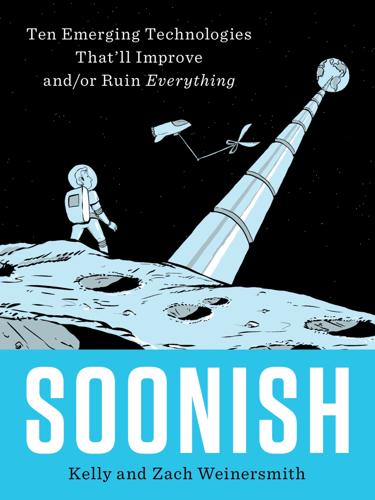
Soonish: Ten Emerging Technologies That'll Improve And/or Ruin Everything
by
Kelly Weinersmith
and
Zach Weinersmith
Published 16 Oct 2017
In some ways, this was a step toward the idea of robotic building construction, but in terms of customizability it was a step away. These houses were cheaper and easier to build, but perhaps they lost the uniqueness and charm of the more bespoke prewar housing methods. By the 1980s, manufacturers of all kinds were using industrial robots. A few groups, most notably in Japan, where labor was very expensive and the population was relatively old, wondered if robots could be brought out of the factory and onto the construction site. Robots were able to do some tasks, including dangerous ones like placing heavy objects, and simple ones like finishing concrete surfaces.
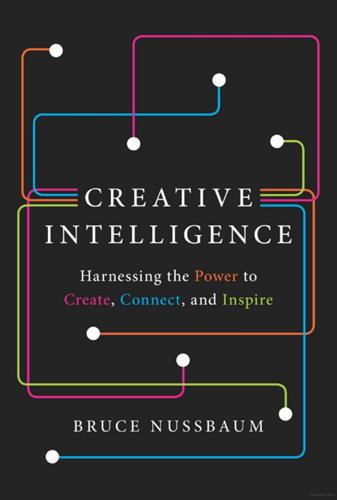
Creative Intelligence: Harnessing the Power to Create, Connect, and Inspire
by
Bruce Nussbaum
Published 5 Mar 2013
I first talked to Sohrab about this work in the spring of 2006. 57 Daniel Pink, author: conversation between Roger Martin and Dan Pink, March 18, 2011, on Educating the Creative Leaders of Tomorrow, put on as part of the Steelcase 360 Discussion series. 58 In 1990, MIT roboticists: Like a lot of science-fiction-loving boys in America, I grew up intrigued by robots, and I wrote about industrial robots when I got to BusinessWeek. But the real story has been the disappointment with robots—how they have failed to live up to our Star Wars imagination. The little Roomba bots finally hit it. They opened up a new, commercial space with a robot. I believe we are now, finally, at the start of a new Robot Age.
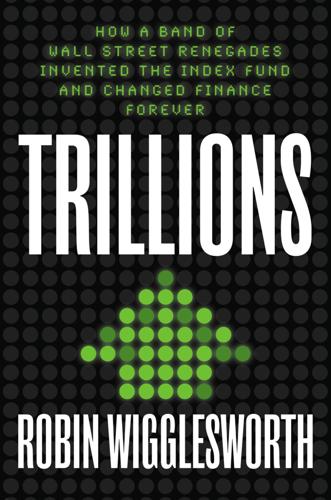
Trillions: How a Band of Wall Street Renegades Invented the Index Fund and Changed Finance Forever
by
Robin Wigglesworth
Published 11 Oct 2021
It is fair to say the attendees of the carnival-like conference just outside Miami took little note of McNabb’s consternation. Investors have in recent years been able to buy niche, “thematic” ETFs that purport to benefit from—deep breath—the global obesity epidemic; online gaming; the rise of millennials; the whiskey industry; robotics; artificial intelligence; clean energy; solar energy; autonomous driving; uranium mining; better female board representation; cloud computing; genomics technology; social media; marijuana farming; toll roads in the developing world; water purification; reverse-weighted US stocks; health and fitness; organic food; elderly care; lithium batteries; drones; and cybersecurity.

The Quantum Magician
by
Derek Künsken
Published 1 Oct 2018
And she didn’t understand what Bel was doing. She understood the facts individually, but not in relation to each other. Bel had leased several used wormhole-capable cargo ships, three asteroid mines and a shipping concern on the Port Stubbs side of the wormhole. His AIs had been gathering equipment too—powerful computers, industrial robotics factories, bioreactors, and protein and DNA synthesis machines. None of this was bringing her any closer to the data he’d promised her, and it didn’t fit into any patterns that would calm her engineered Homo quantus brain. And Bel was a stranger. Gone was the brooding penitent who’d come to the Garret.

Age of Discovery: Navigating the Risks and Rewards of Our New Renaissance
by
Ian Goldin
and
Chris Kutarna
Published 23 May 2016
After 1972, productivity grew much more slowly—only 1.4 percent per year—while economists waited for the next big thing to come along and give productivity a new lift.34 Fortunately, it did. Computers and information technologies arrived to change the world of work again; by 1996 productivity growth was up to a brisk 2.5 percent per year. Unfortunately, this time the sizzle very quickly fizzled. Technology adoption was swift. By 2005, the US had installed industrial robots, barcode scanners, cash machines, PCs and e-commerce more or less economy-wide, and productivity growth fell back to about 1.3 percent again. It’s been stuck there since. This is disappointing news for everyone: average US wages rose 350 percent in the forty years between 1932 and 1972, but rose only 22 percent over the next forty.

What Would the Great Economists Do?: How Twelve Brilliant Minds Would Solve Today's Biggest Problems
by
Linda Yueh
Published 4 Jun 2018
Developed nations all grew well between 1950 and 1973, and then slowed together during 1974–87. There seems to be a connection with the adoption of similar technologies. For instance, the strong period of growth in the 1950s and 60s is associated with post-war technological advances, such as widespread air travel and industrial robots. Curiously, recent technological improvements, centred on computing, information and communication technologies (ICT) and the internet, do not seem to have raised productivity across the economy. Solow’s 1987 observation that ‘You can see the computer age everywhere but in the productivity statistics’ is known as the Solow paradox.6 He revisited this question decades later, but concluded that we still do not know, as the role of computing is still evolving.
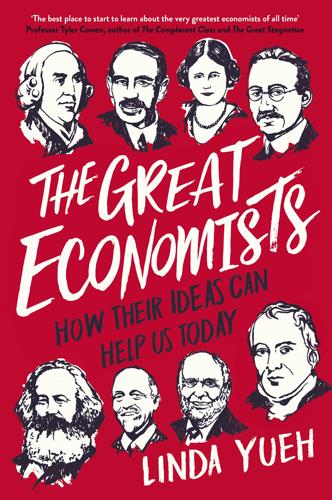
The Great Economists: How Their Ideas Can Help Us Today
by
Linda Yueh
Published 15 Mar 2018
Developed nations all grew well between 1950 and 1973, and then slowed together during 1974–87. There seems to be a connection with the adoption of similar technologies. For instance, the strong period of growth in the 1950s and 60s is associated with post-war technological advances, such as widespread air travel and industrial robots. Curiously, recent technological improvements, centred on computing, information and communication technologies (ICT) and the internet, do not seem to have raised productivity across the economy. Solow’s 1987 observation that ‘You can see the computer age everywhere but in the productivity statistics’ is known as the Solow paradox.6 He revisited this question decades later, but concluded that we still do not know, as the role of computing is still evolving.

The Powerful and the Damned: Private Diaries in Turbulent Times
by
Lionel Barber
Published 5 Nov 2020
The challenge is how to adjust course without returning to the stifling statism of the 1960s and 70s. Whatever the case, a new agenda is needed. This leads to the fifth development: the ever expanding role of technology. Covid-19 has turbo-charged the internet. Automated working and artificial intelligence will proceed apace, threatening white collar jobs in the same way that industrial robots decimated the blue collar workforce in the 1980s. Other sectors like the travel and hospitality industries will find their business models upended by the emergence of new companies like Zoom and other virtual networking sites. Those that fail to adapt will either be crushed or wither away. In this new super-networked world, the US tech giants – Amazon, Facebook, Google, Microsoft, Netflix – have seen their market capitalisations grow exponentially under the precept of ‘winner takes all’.

These Strange New Minds: How AI Learned to Talk and What It Means
by
Christopher Summerfield
Published 11 Mar 2025
It was trained by assigning rewards of +100 for a win, –100 for a loss, and 0 for a draw, and optimizing the network to maximize this score over millions of games. Boston Dynamics, a robotics company, has used RL to train an actual mechanical dog called Spot to trot with agility over rough terrain, bound up the stairs, and leap gamely between two elevated platforms (alas Spot is an industrial robot and isn’t yet available as a pet). Under this definition, LLMs that have been fine-tuned with RLHF already display limited forms of instrumentality. In RLHF, utterances are ‘rewarded’ with social feedback from human crowdworkers, who assign the highest marks to utterances that are most helpful and least harmful.

Gambling Man
by
Lionel Barber
Published 3 Oct 2024
The goal is to build a prototype by 2025, with each chip being able to process vast volumes of data. Mass production is to be handled by contract manufacturers such as Taiwan’s TSMC and is expected to begin in the autumn of that year. This hugely ambitious venture aims to create SoftBank Group’s own vertically integrated AI ecosystem, from manufacturing chips to operating data centres and industrial robots and power generation. Once again, Masa has confounded his critics and wrong-footed rivals. His self-enforced absence from the public eye was in hindsight a ruse. Rather than serving penance, Masa was plotting in Tokyo. He was also making secret trips around the world, visiting chip plants in Taiwan and the US and sounding out potential partners like Sam Altman and his former financial backers in the Gulf.

The Rise and Fall of the Great Powers: Economic Change and Military Conflict From 1500 to 2000
by
Paul Kennedy
Published 15 Jan 1989
The reports that the Japanese Aircraft Development Corporation has joined up with Boeing to produce a new generation of fuel-efficient aircraft for the 1990s—denounced by one American expert as a “Faustian bargain” whereby Japan will provide cheap finance and acquire U.S. technology and expertise62—may be even more significant for the future. But perhaps the most important (in terms of sheer output) will be the already impressive lead which Japan has in the field of industrial robots and its development of (experimental) entire factories virtually controlled by computers, lasers, and robots: the ultimate solution to the country’s decreasing labor force! The latest figures show that “Japan continued to introduce about as many industrial robots as the rest of the world combined, several times the rate of introduction in the United States.” Another survey indicates that the Japanese use their robots much more efficiently than Americans do.63 Behind all of these high-technology ventures are a cluster of broader, structural factors which continue to give Japan marked advantages over its chief rivals.

Islands in the Net
by
Bruce Sterling
Published 31 May 1988
The docks had been depressed for years, half abandoned from the global embargoes inflicted on Singapore. The powerful Longshoreman’s Union had protested to the P.I.P. rulership with increasing bitterness. Until the troublesome union had been simply and efficiently disemployed, as a deliberate act, by a government investment in industrial robots. But with the embargoes, even the robots were idle much of the time. Which was why Rizome had been able to buy into the shipping business cheaply. It was hard for Singapore to turn down such a sucker bet: even knowing that Rizome’s intentions were political, an industrial beachhead. The P.I.P.’s attack on the union, like most of their actions, was smart and farsighted and ruthless.
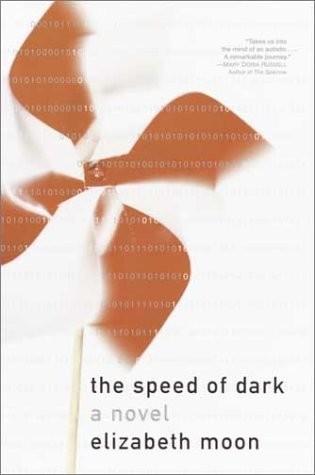
The Speed of Dark
by
Elizabeth Moon
Published 1 Jan 2002
They are not all autistic; they know somehow that it is appropriate not to make eye contact on the train. Some read news faxes. Some stare at the monitor at the end of the car. I open the book and read what Cego andClinton said about how the brain processes visual signals. At the time they wrote, industrial robots could use only simple visible input to guide movement. Binocular vision in robots hadn’t been developed yet except for the laser targeting of large weapons. I am fascinated by the feedback loops between the layers of visual processing; I had not realized that something this interesting went on inside normal people’s heads.

Iron Sunrise
by
Stross, Charles
Published 28 Oct 2004
This is the smoking bar, and if you’d like to avoid the smell, I suggest you find a nonsmoking bar — or take it up with the Captain.” “I don’t think so.” For a moment square-jaw looked mildly annoyed, as if a mosquito was buzzing around his ears, then an instant later Frank felt a hand like an industrial robot’s grab him by the throat. “Hans! No!” It was one of the women from the table, rising to her feet. “I forbid it!” Her voice rang with the unmistakable sound of self-assured authority. Hans let go instantly and took a step back from Frank, who coughed and glared at him, too startled to even raise a fist.

Elon Musk: Tesla, SpaceX, and the Quest for a Fantastic Future
by
Ashlee Vance
Published 18 May 2015
The company had been drawn to Tesla’s battery and powertrain technology and calculated that even if Tesla failed to sell many cars, the big automakers would end up wanting to buy its intellectual property. To protect its investment, Valor sent in Tim Watkins, its managing director of operations, and he soon reached some horrific conclusions. Watkins is a Brit with degrees in industrial robotics and electrical engineering. He’s built up a reputation as an ingenious solver of problems. While doing work in Switzerland, for example, Watkins found a way to get around the country’s rigid labor laws that limit the hours employees can work, by automating a metal stamping factory so that it could run twenty-four hours per day instead of sixteen hours like the factories or rivals.

The Lonely Century: How Isolation Imperils Our Future
by
Noreena Hertz
Published 13 May 2020
Prepare for workers to revolt’, University of Oxford, 1 August 2019, https://www.oxfordmartin.ox.ac.uk/blog/the-robot-revolution-is-here-prepare-for-workers-to-revolt/. 86 Jenny Chan, ‘Robots, not humans: Official policy in China’, New Internationalist, 1 November 2017, https://newint.org/features/2017/11/01/industrial-robots-china. 87 Carl Benedikt Frey, Thor Berger and Chinchih Chen, ‘Political Machinery: Automation Anxiety and the 2016 U.S. Presidential Election’, University of Oxford, 23 July 2017, https://www.oxfordmartin.ox.ac.uk/downloads/academic/Political%20Machinery-Automation%20Anxiety%20and%20the%202016%20U_S_%20Presidential%20Election_230712.pdf. 88 Massimo Anelli, Italo Colantone, and Piero Stanig, ‘We Were the Robots: Automation and Voting Behavior in Western Europe’, IZA Institute of Labor Economics, July 2019, 24, http://ftp.iza.org/dp12485.pdf. 89 ‘The Mini Bakery’, Wilkinson Baking Company, https://www.wilkinsonbaking.com/the-mini-bakery. 90 Mark Muro, Robert Maxim, and Jacob Whiton, ‘The robots are ready as the COVID-19 recession spreads’, Brookings, 24 March 2020, https://www.brookings.edu/blog/the-avenue/2020/03/24/the-robots-are-ready-as-the-covid-19-recession-spreads/?
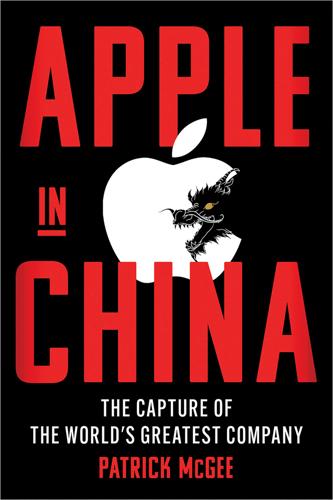
Apple in China: The Capture of the World's Greatest Company
by
Patrick McGee
Published 13 May 2025
Or to put it simply, the Chinese worker comes with a robot. According to the Information Technology and Innovation Foundation, robot adoption in China is in “a class of its own, with its national and provincial governments committing massive amounts of money to subsidize adoption of robots and other automation technology.” As of 2022, the number of industrial robots deployed in China was above 290,000, more than half the global total; in India, it was 5,400, according to the International Federation of Robotics. Indeed, China sports a level of technical sophistication that multiple experts struggle to even comprehend. The layperson often believes Foxconn could just open a factory in a different country; but the Foxconn hubs in China are surrounded by hundreds of sub-suppliers all ready to compete for the next major order.

The Cobweb
by
Neal Stephenson
and
J. Frederick George
Published 31 May 2005
He tried to retool his brain for Desiree’s role and just couldn’t do it. He’d sit there spooning mush into the child’s mouth, and instead of making each spoonful into a little event unto itself, and lavishing praise on Maggie for her advanced mush-slurping capabilities, he would just move that little spoon back and forth like an industrial robot, staring at a squirrel out in the yard or some other irrelevant focus point, saying nothing whatsoever. Desiree wrote letters, even though they talked on the phone every night and saw each other almost every week, so that Clyde ended up getting each individual piece of news three times. Even though the Army appeared to be gearing up for war, the nurses were not unusually busy.

Python for Unix and Linux System Administration
by
Noah Gift
and
Jeremy M. Jones
Published 29 Jun 2009
As of this book’s writing, he is employed as a software specialist in the Smartphone department of Digia Plc, doing C++ development for Symbian OS platforms from Nokia and UIQ. During his studies, he functioned as software engineer at Cimcorp Oy, developing communications software, in Python, for industrial robots. Ville is a long-time IPython enthusiast, and the maintainer of the stable branch (0.x series), since January 2006. His IPython work started with a series of patches to make IPython behave better as a system shell on Windows, and the system shell use case is still a strong personal focus. He lives with his fiancée in Pori, Finland, and is doing his MSc thesis project at Tampere University of Technology’s Pori Unit, on ILeo, the IPython-Leo bridge that makes Leo a full-fledged IPython notebook.

Schismatrix Plus
by
Bruce Sterling
Published 1 Jan 1995
At the impact of the cargo shot, the web bowed gracefully and the eight massive metal teardrops were pulled closer to the web’s center in short, graceful free-fall arcs. Wan sunlight glittered along the web as it expanded in recoil, its rotation slowed a little by the energy it had spent in absorbing the inertia. It was a cheap and effective docking technique, for a rate of spin was much easier to manage than complex maneuvering. Hook-legged industrial robots ran quickly along the polycarbon fibers and seized the mascot’s capsule with clamps and magnetic palps. Spider Rose ran the lead robot herself, feeling and seeing through its grips and cameras. The robots hustled the cargo craft to an airlock, dislodged its contents, and attached a small parasitic rocket to boost it back to the Investor mother ship.

How Asia Works
by
Joe Studwell
Published 1 Jul 2013
It is worth briefly considering some of the difficulties that north-east Asian states have had to contend with as a result of – or rather, often, despite – their rapid transitions to advanced manufacturing. The first issue is that while manufacturing plays a special role in economic development, it is not everything. By the late 1970s, Japan was the world’s most efficient steel maker and boasted the eight biggest steel mills in the OECD economies. Japan had half the world’s industrial robots. And its firms were receiving more US patents than all the western European states combined.235 Yet Japan today is a rather sorry rich nation, after a 20-year period of repeated recessions and stagnation. Driving around Japan in 2010, I asked myself many times how the world ever lived in fear of Japanese economic hegemony or speculated that this would be ‘the Japanese century’.

Good Economics for Hard Times: Better Answers to Our Biggest Problems
by
Abhijit V. Banerjee
and
Esther Duflo
Published 12 Nov 2019
We don’t know what will happen this time around, since we haven’t seen the very long run yet, but the impact of the current wave of automation (which started in 1990, giving us a perspective of more than twenty-five years) appears so far to be negative. In a study on the impact of automatization, researchers computed, for each region, a measure of exposure to industrial robots, capturing the spread of robots in the industries in that region.15 They then compared the evolution of employment and wages in the most affected areas to that in the least affected areas. The study found, to the surprise of the authors, who had written a previous paper emphasizing the forces that should lead to a rebound,16 large negative impacts.

Evil Geniuses: The Unmaking of America: A Recent History
by
Kurt Andersen
Published 14 Sep 2020
Automation and computers replace human workers in all kinds of ways, some more obvious and visible than others, but the process of actual robots taking over the jobs of Americans is still in its early days. Maybe a million U.S. workers—machinists and welders and the like—have already been replaced by robots. But beyond those direct replacements of skilled workers, two MIT economists recently found that during the first wave of industrial robots in the 1990s and 2000s, each robot installed led to the loss of a half-dozen jobs. The cost of robots is dropping, and the number installed in American factories has been doubling every few years and has passed a quarter-million. But our “robot density” is still less than a third of South Korea’s and is also much less than that of Japan and the advanced European countries.

Your Computer Is on Fire
by
Thomas S. Mullaney
,
Benjamin Peters
,
Mar Hicks
and
Kavita Philip
Published 9 Mar 2021
According to reporting by Robotics Business Review, five key themes emerged from the conference: (1) to see “humans and robots working together, not replacing humans,” (2) to deal with the notion that “robots are needed in some markets to solve labor shortages,” (3) that “education will need to transform as humans move to learn new skills,” (4) that “lower skilled workers will face difficulty in retraining without help,” and (5) “teaching robots and AI to learn is still very difficult.”29 Not unlike most of the coverage for Robotics Business Review, the story represented the leading thinking within the commercial robotics industry: robots are part of the next chapter of humanity, and they are here to stay. Yet Calo’s concerns have largely gone unaddressed in the call for coordinated and well-developed public policy or oversight. We have to ask what is lost, who is harmed, and what should be forgotten with the embrace of artificial intelligence and robotics in decision-making.

Blood in the Machine: The Origins of the Rebellion Against Big Tech
by
Brian Merchant
Published 25 Sep 2023
The income generated by the VAT would pay for a universal basic income program designed to insulate working people from adverse impacts of automation. The more direct robot taxes, those specifically targeting automation or robotics, have been put forward by some unlikely bedfellows—New York City mayors, tech monopolists, and South Korea. Bill Gates came out in favor of taxing industrial robots at the same rate that the humans they replace would have to pay. “The human worker who does, say, $50,000 worth of work in a factory, that income is taxed and you get income tax, Social Security tax, all those things,” he said in an interview with Quartz. “If a robot comes in to do the same thing, you’d think that we’d tax the robot at a similar level.”

Alone Together
by
Sherry Turkle
Published 11 Jan 2011
Young children and the elderly are not a problem until we decide that we don’t have the time or resources to attend to them. We seem tempted to declare phases of the life cycle problems and to send in technologies to solve them. But why is it time to bring in the robots ? We learned to take industrial robots in stride when they were proposed for factory assembly lines. Now the “work” envisaged for machines is the work of caring. Will we become similarly sanguine about robotic companionship? This is contested terrain. Two brothers are at odds over whether to buy a Paro for their ninety-four-year-old mother.

Strange Rebels: 1979 and the Birth of the 21st Century
by
Christian Caryl
Published 30 Oct 2012
And this, perhaps, was the even more important subtext of his American journey: it was carefully designed to build momentum for the reforms to come. Each stage of his itinerary was exhaustively covered by the Chinese media, who conveyed every detail to an audience of hundreds of millions of people. The Chinese heard radio broadcasts about factories where industrial robots already worked with humans at the assembly line and machines that could make you believe that you were flying. Those lucky few with access to TV sets—still a rare commodity in prereform China—saw images of skyscrapers and glistening shopping centers and highways filled with cars that were apparently (astounding as it seemed) mostly owned by ordinary Americans.
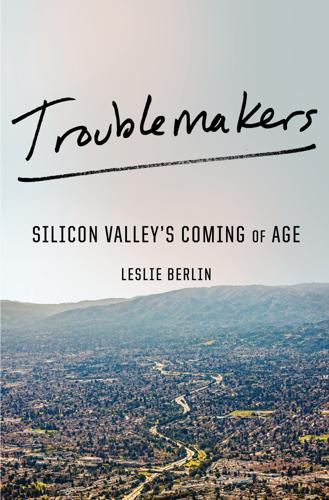
Troublemakers: Silicon Valley's Coming of Age
by
Leslie Berlin
Published 7 Nov 2017
He liked to quote a Japanese proverb: “None of us is as smart as all of us.”25 It is a fitting epitaph for Taylor and a message for innovators everywhere. * * * I. Those systems were precursors to today’s Internet of Things. In the Internet of Things, items ranging from household thermostats and lights to industrial robots are connected to both a network and computing power to be more useful or valuable. Courtesy: SRI International Douglas Engelbart presenting during the “Mother of All Demos” in San Francisco, December 1968. © Stephen Shames/Polaris Protests at People’s Park in Berkeley turn violent, May 1969.

The Alignment Problem: Machine Learning and Human Values
by
Brian Christian
Published 5 Oct 2020
DEEP NETWORKS AND HUMAN CONCEPTS In the fall of 2012, MIT graduate student Been Kim had found herself, at the beginning of her PhD, homing in on the project that would shape the next years of her life. She had previously been working in robotics—including going so far as getting a forklift driver’s license in order to better understand the industrial robotics environment—but decided in the end that it wasn’t the right fit. “I realized that robotics had a hardware limitation,” she tells me. “My thoughts go faster than what physical stuff can do.”75 Increasingly Kim believed that interpretability might well become her dissertation topic, if not her life’s work.

The Greatest Capitalist Who Ever Lived: Tom Watson Jr. And the Epic Story of How IBM Created the Digital Age
by
Ralph Watson McElvenny
and
Marc Wortman
Published 14 Oct 2023
The 701 needed personnel to monitor its memory units and replace tubes that burned out frequently, and took the equivalent of an entire town’s power supply to run. But for the business workplace, the 701’s desk-like control console and utilitarian gray casing fit in with other office furnishings and apparatuses, and no longer gave the appearance of a monstrous, fire-breathing industrial robot brain. With his father’s blessing, Tom Jr. announced the new product internally at the April 29, 1952, annual shareholders’ meeting. Few of the board members knew what he meant when he grandly stated that IBM was building “the most advanced, the most flexible, high speed computer in the world.”53 When T.J. came to Poughkeepsie with the board of directors to see the 701 in action for the first time, he grew “visibly upset” at this intruder in the IBM family of products, said Poughkeepsie chief engineer Wallace McDowell.

In the Age of the Smart Machine
by
Shoshana Zuboff
Published 14 Apr 1988
There are many differing estimates as to the extent of robotization in manufacturing. The Robot Institute of America indicates that in 1983, 66 percent (31,900) of the world's robots were operating in Japan and 13 percent (6,301) were in the United States. 14 Nobel-prize-winning economist Wassily Leontief has predicted a 30 to 40 percent annual growth rate in the market for industrial robots between 1985 and 1 990. I 5 Computer-numerically-controlled machine tools fashion metal ac- cording to programmed instructions that indicate the desired dimen- sions of a part and the sequence to be followed in the machining pro- cess. Since the late 1970s, these machines have been equipped with microprocessors or dedicated minicomputers and frequently include a screen and keyboard for writing or editing the programs that guide the equipment.

Aftershocks: Pandemic Politics and the End of the Old International Order
by
Colin Kahl
and
Thomas Wright
Published 23 Aug 2021
Headquartered in the German city of Tübingen, with operations in Boston, it was in the early stages of developing a COVID-19 vaccine.69 Shortly after the meeting, the German newspaper Die Welt reported that the Trump administration had offered the company $1 billion for exclusive access to its results.70 The German public reacted with shock. They expected this type of behavior from China (a Chinese firm, Midea, had controversially purchased the industrial robotics company Kuka in 2016), but not from their closest ally. The German interior minister, Horst Seehofer, said the proposed deal was “a question of national security.” The government, he said, must guarantee the security of “our medical products and our medicines” as well as the country’s borders.

Architects of Intelligence
by
Martin Ford
Published 16 Nov 2018
I think it’s fair to say the Roomba is the most successful robot ever in terms of numbers shipped, and that was really based on the insect-level intelligence that I had started developing at MIT around 1984. When I left MIT in 2010, I stepped down completely and started a company, Rethink Robotics, where we build robots that are used in factories throughout the world. We’ve shipped thousands of them to date. They’re different from conventional industrial robots in that they’re safe to be with, they don’t have to be caged, and you can show them what you want them to do. In the latest version of the software we use, Intera 5, when you show the robots what you want them to do, they actually write a program. It’s a graphical program that represents behavior trees, which you can then manipulate if you want, but you don’t have to.

Structure and interpretation of computer programs
by
Harold Abelson
,
Gerald Jay Sussman
and
Julie Sussman
Published 25 Jul 1996
Fortunately, learning to program is considerably less dangerous than learning sorcery, because the spirits we deal with are conveniently contained in a secure way. Real-world programming, however, requires care, expertise, and wisdom. A small bug in a computer-aided design program, for example, can lead to the catastrophic collapse of an airplane or a dam or the self-destruction of an industrial robot. Master software engineers have the ability to organize programs so that they can be reasonably sure that the resulting processes will perform the tasks intended. They can visualize the behavior of their systems in advance. They know how to structure programs so that unanticipated problems do not lead to catastrophic consequences, and when problems do arise, they can debug their programs.

Structure and Interpretation of Computer Programs, Second Edition
by
Harold Abelson
,
Gerald Jay Sussman
and
Julie Sussman
Published 1 Jan 1984
Fortunately, learning to program is considerably less dangerous than learning sorcery, because the spirits we deal with are conveniently contained in a secure way. Real-world programming, however, requires care, expertise, and wisdom. A small bug in a computer-aided design program, for example, can lead to the catastrophic collapse of an airplane or a dam or the self-destruction of an industrial robot. Master software engineers have the ability to organize programs so that they can be reasonably sure that the resulting processes will perform the tasks intended. They can visualize the behavior of their systems in advance. They know how to structure programs so that unanticipated problems do not lead to catastrophic consequences, and when problems do arise, they can debug their programs.

Elon Musk
by
Walter Isaacson
Published 11 Sep 2023
The New York Times reported that workers felt pressure to work ten-hour days. “It’s a constant ‘How many cars have we built so far?’—a constant pressure to build,” one worker told the paper. There was some truth to the complaints. Tesla’s injury rate was 30 percent higher than the rest of the industry. Robot removal During his push to ramp up production at the Nevada battery factory, Musk had learned that there are certain tasks, sometimes very simple ones, that humans do better than robots. We can use our eyes to look around a room and find just the right tool we need. Then we can weave our way over, pick it up with our fingers and thumb, eyeball the right spot to use it, and guide it there with our arm.

Back to Blood
by
Tom Wolfe
Published 1 Jan 2012
(“—swear, ‘de-skilled’ was what she said.”) Magdalena knew that voice very well, from last night at the dinner party Michael du Glasse and his wife, Caroline Peyton-Soames, gave at Casa Tua. She even remembered his name, Heinrich von Hasse. He had made billions manufacturing… something about industrial robots?… was that what they said? Whatever else he did, he had spent so many millions buying art at Art Basel in Switzerland six months ago, people were talking about him at practically every party she and Norman and Maurice had been to. “—about to see it! A measles outbreak, baby!” “—and no time to kick the tires!”

The Stack: On Software and Sovereignty
by
Benjamin H. Bratton
Published 19 Feb 2016
An (only somewhat) unlikely consensus has formed around the structural importance of robotics and automation and their impact on the macroeconomics of labor and markets. Bets are placed from both the right and the left that a “zero-marginal cost society” or “fully automated luxury communism” is built into the future of software-driven globalization. A party line that crosses parties emerges in different versions, blending nanotechnology, industrial robotics, additive manufacturing (3D printing), Internet of Things, digital replication, biotechnology, and open networks to draw a scenario in which many physical commodities are rationalized into downloadable streams, and much of the heavy lifting (and flying) will be done by intelligent quasi- or fully autonomous machines.

Private Empire: ExxonMobil and American Power
by
Steve Coll
Published 30 Apr 2012
Curtis was an assistant driller. “Jason is shutting it in now,” Curtis said. “Randy, we need your help.” “Steve, I’ll be—I’ll be right there.” In the darkness, the Deepwater Horizon floated on 4,992 feet of seawater in the Gulf of Mexico. It had been commissioned nine years earlier, one of a new generation of seagoing industrial robots designed to drill for oil in unprecedented saltwater depths. It was a towering, brightly lit metallic behemoth—almost 400 feet tall and 250 feet across. The rig had hovered for weeks over a BP-managed prospect called Macondo No. 252. The name referred to a fictional town in the Gabriel García Márquez novel One Hundred Years of Solitude.

Growth: From Microorganisms to Megacities
by
Vaclav Smil
Published 23 Sep 2019
Cohorts of young people best suited for this work will be declining, but significant shares of production capacities have been already moved offshore as Japan followed (with the lag of 10–20 years) the deindustrialization trend so evident in the EU and the US, and further progress of robotization should keep productivity rising: Japan has pioneered this automation trend, it already deploys by far the largest number of industrial robots, and several companies remain among the leading global enablers of plant automation. But there will be no way to avoid adverse effects on Japan’s admirable infrastructure of public transportation, on the country’s food production, and on its health care. Japan’s dense but aging transportation network will continue to experience high rates of use and hence it will require meticulous maintenance, an imperative perhaps best illustrated by the fact that during peak travel times rapid trains, traveling at up to 300 km/h, leave Tokyo’s main station at intervals as brief as three minutes, and have been doing so with an annually averaged delay of less than one minute (Smil 2014a).

The Rise and Fall of American Growth: The U.S. Standard of Living Since the Civil War (The Princeton Economic History of the Western World)
by
Robert J. Gordon
Published 12 Jan 2016
Vijg is highly critical of the current regime of drug testing in the United States as inhibiting risk taking, an example of the overregulation of the U.S. economy.47 The upshot is that over the next few decades, medical and pharmaceutical advances will doubtless continue, while the increasing burden of Alzheimer’s care will be a significant contributor to increased cost of the medical care system. Small Robots and 3D Printing. Industrial robots were introduced by General Motors in 1961. By the mid-1990s, robots were welding automobile parts and replacing workers in the lung-killing environment of the automotive paint shop.48 Until recently, however, robots were large and expensive and needed to be “caged off to keep them from smashing into humans.”

Reamde
by
Neal Stephenson
Published 19 Sep 2011
Or, if you were willing to consider giant flat-panel screens as being windows into other worlds, it was a greenhouse. In the middle was Devin’s elliptical trainer, or rather one of a pool of treadmills, elliptical trainers, and other such gadgets that were swapped in and out as he ruined or got sick of them. Depending from the ceiling was a massive articulated structure: an industrial robot arm, capable of being programmed to move along and rotate around a myriad of axes with the silence of a panther and the precision of a knife fighter. It supported an additional large flat-panel screen and a framework that held up an array of input devices: an ergonomic keyboard, trackballs, and other devices of which Richard knew not the names.

France (Lonely Planet, 8th Edition)
by
Nicola Williams
Published 14 Oct 2010
The highlight of the Cité des Sciences et de l’Industrie is the brilliant Cité des Enfants (Children’s Village; level 0), whose colourful and imaginative hands-on demonstrations of basic scientific principles are divided into two sections: for two- to seven-year-olds, and for five- to 12-year-olds. In the first, kids can explore, among other things, the conduct of water (waterproof ponchos provided), a building site, and a maze. The second allows children to build toy houses with industrial robots, and stage news broadcasts in a TV studio. A third section has a special exhibition called Ombres et Lumières (Shadows and Light) devoted largely to the five-to-12 age group. Visits to Cité des Enfants lasting 1½ hours begin four times a day: at 9.45am, 11.30am, 1.30pm and 3.15pm Tuesday to Friday, and at 10.30am, 12.30pm, 2.30pm and 4.30pm on Saturday and Sunday.

Artificial Intelligence: A Modern Approach
by
Stuart Russell
and
Peter Norvig
Published 14 Jul 2019
They do not necessarily have to be attached to a robot body; they might simply be bolted onto a table or a floor, as they are in factories (Figure 26.1 (a)). Some have a large payload, like those assembling cars, while others, like wheelchair-mountable arms that assist people with motor impairments (Figure 26.1(b)), can carry less but are safer in human environments. Figure 26.1(a) An industrial robotic arm with a custom end-effector. Image credit: Macor/123RF. (b) A Kinova® JACO® Assistive Robot arm mounted on a wheelchair. Kinova and JACO are trademarks of Kinova, Inc. Mobile robots are those that use wheels, legs, or rotors to move about the environment. Quadcopter drones are a type of unmanned aerial vehicle (UAV); autonomous underwater vehicles (AUVs) roam the oceans.